Quick filters:
Crusaders 13th century Stock Photos and Images
 Two Templars on one horse (From Chronica maiora I by Matthew Paris), 13th century. Artist: Paris, Matthew (c. 1200-1259) Stock Photohttps://www.alamy.com/image-license-details/?v=1https://www.alamy.com/stock-photo-two-templars-on-one-horse-from-chronica-maiora-i-by-matthew-paris-135253097.html
Two Templars on one horse (From Chronica maiora I by Matthew Paris), 13th century. Artist: Paris, Matthew (c. 1200-1259) Stock Photohttps://www.alamy.com/image-license-details/?v=1https://www.alamy.com/stock-photo-two-templars-on-one-horse-from-chronica-maiora-i-by-matthew-paris-135253097.htmlRMHT18KN–Two Templars on one horse (From Chronica maiora I by Matthew Paris), 13th century. Artist: Paris, Matthew (c. 1200-1259)
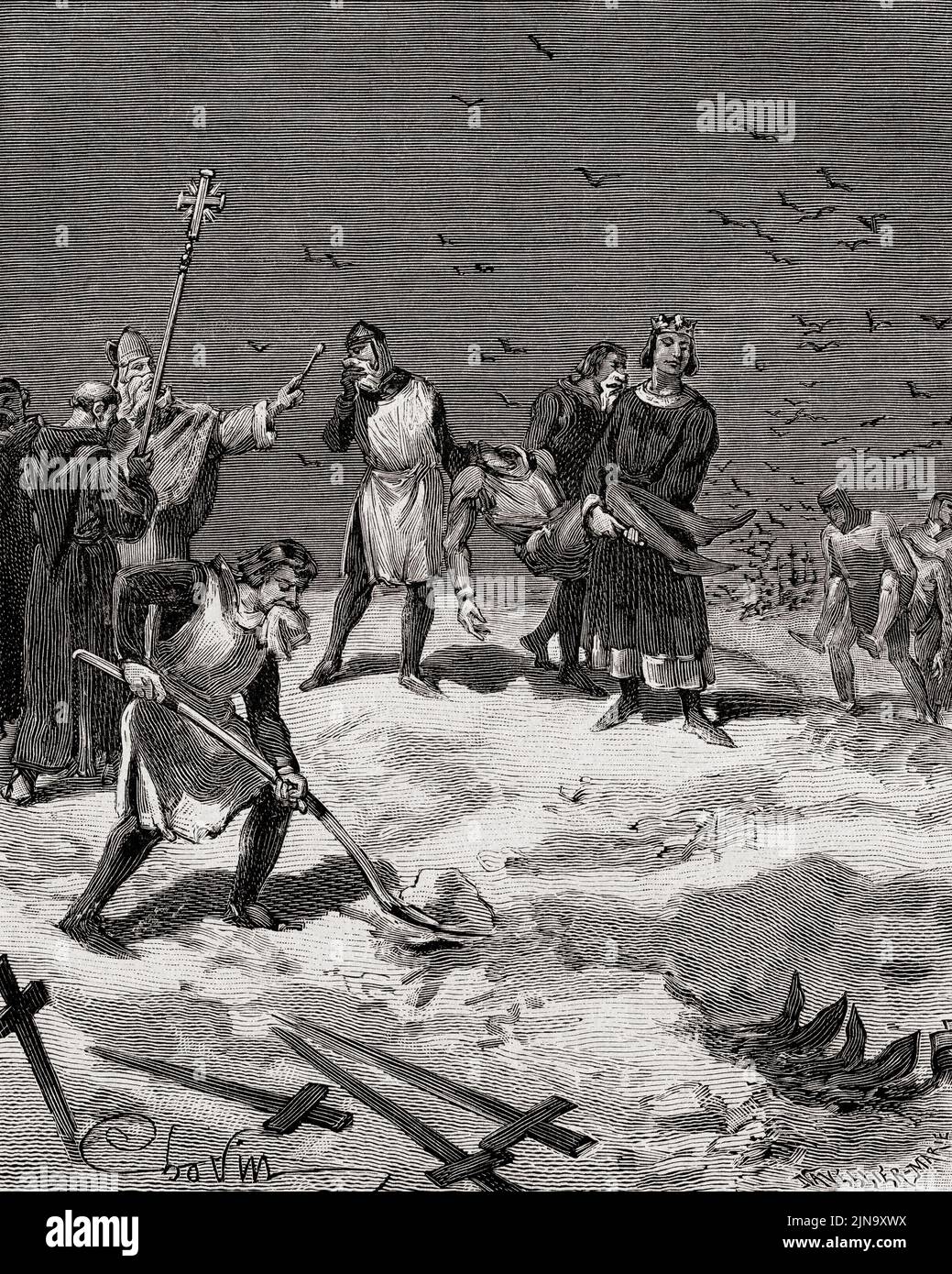 King Louis IX of France helping to bury dead soldiers, many of whom had succumbed to disease which spread through the camp, during the seventh crusade. Louis IX, 1214 – 1270, aka Saint Louis or Louis the Saint, King of France, 1226 - 1270. From Histoire de France, published 1855. Stock Photohttps://www.alamy.com/image-license-details/?v=1https://www.alamy.com/king-louis-ix-of-france-helping-to-bury-dead-soldiers-many-of-whom-had-succumbed-to-disease-which-spread-through-the-camp-during-the-seventh-crusade-louis-ix-1214-1270-aka-saint-louis-or-louis-the-saint-king-of-france-1226-1270-from-histoire-de-france-published-1855-image477806390.html
King Louis IX of France helping to bury dead soldiers, many of whom had succumbed to disease which spread through the camp, during the seventh crusade. Louis IX, 1214 – 1270, aka Saint Louis or Louis the Saint, King of France, 1226 - 1270. From Histoire de France, published 1855. Stock Photohttps://www.alamy.com/image-license-details/?v=1https://www.alamy.com/king-louis-ix-of-france-helping-to-bury-dead-soldiers-many-of-whom-had-succumbed-to-disease-which-spread-through-the-camp-during-the-seventh-crusade-louis-ix-1214-1270-aka-saint-louis-or-louis-the-saint-king-of-france-1226-1270-from-histoire-de-france-published-1855-image477806390.htmlRM2JN9XWX–King Louis IX of France helping to bury dead soldiers, many of whom had succumbed to disease which spread through the camp, during the seventh crusade. Louis IX, 1214 – 1270, aka Saint Louis or Louis the Saint, King of France, 1226 - 1270. From Histoire de France, published 1855.
 Kneeling knight from the First Crusade, from a manuscript in the British Museum, and standing knight from the Constitutiones Jacobi II, 1295, Bibliotheque de Bourgogne a Bruxelles. Crusader knights in conical helmet, suit of chainmail armour, plate armour protection to arms and legs, armorial tunic, spurs, armed with sword and lance with banner. Crusaders, 13th century. Croisades, XIIIme Siecle. Chromolithograph by Ferdinand Sere and Felix de Vigne from Charles Louandres Les Arts Somptuaires, The Sumptuary Arts, Hangard-Mauge, Paris, 1858. Stock Photohttps://www.alamy.com/image-license-details/?v=1https://www.alamy.com/kneeling-knight-from-the-first-crusade-from-a-manuscript-in-the-british-museum-and-standing-knight-from-the-constitutiones-jacobi-ii-1295-bibliotheque-de-bourgogne-a-bruxelles-crusader-knights-in-conical-helmet-suit-of-chainmail-armour-plate-armour-protection-to-arms-and-legs-armorial-tunic-spurs-armed-with-sword-and-lance-with-banner-crusaders-13th-century-croisades-xiiime-siecle-chromolithograph-by-ferdinand-sere-and-felix-de-vigne-from-charles-louandres-les-arts-somptuaires-the-sumptuary-arts-hangard-mauge-paris-1858-image571831148.html
Kneeling knight from the First Crusade, from a manuscript in the British Museum, and standing knight from the Constitutiones Jacobi II, 1295, Bibliotheque de Bourgogne a Bruxelles. Crusader knights in conical helmet, suit of chainmail armour, plate armour protection to arms and legs, armorial tunic, spurs, armed with sword and lance with banner. Crusaders, 13th century. Croisades, XIIIme Siecle. Chromolithograph by Ferdinand Sere and Felix de Vigne from Charles Louandres Les Arts Somptuaires, The Sumptuary Arts, Hangard-Mauge, Paris, 1858. Stock Photohttps://www.alamy.com/image-license-details/?v=1https://www.alamy.com/kneeling-knight-from-the-first-crusade-from-a-manuscript-in-the-british-museum-and-standing-knight-from-the-constitutiones-jacobi-ii-1295-bibliotheque-de-bourgogne-a-bruxelles-crusader-knights-in-conical-helmet-suit-of-chainmail-armour-plate-armour-protection-to-arms-and-legs-armorial-tunic-spurs-armed-with-sword-and-lance-with-banner-crusaders-13th-century-croisades-xiiime-siecle-chromolithograph-by-ferdinand-sere-and-felix-de-vigne-from-charles-louandres-les-arts-somptuaires-the-sumptuary-arts-hangard-mauge-paris-1858-image571831148.htmlRM2T694D0–Kneeling knight from the First Crusade, from a manuscript in the British Museum, and standing knight from the Constitutiones Jacobi II, 1295, Bibliotheque de Bourgogne a Bruxelles. Crusader knights in conical helmet, suit of chainmail armour, plate armour protection to arms and legs, armorial tunic, spurs, armed with sword and lance with banner. Crusaders, 13th century. Croisades, XIIIme Siecle. Chromolithograph by Ferdinand Sere and Felix de Vigne from Charles Louandres Les Arts Somptuaires, The Sumptuary Arts, Hangard-Mauge, Paris, 1858.
 Kneeling knight from the First Crusade, from a manuscript in the British Museum, and standing knight from the Constitutiones Jacobi II, 1295, Bibliotheque de Bourgogne a Bruxelles. Crusader knights in conical helmet, suit of chainmail armour, plate armour protection to arms and legs, armorial tunic, spurs, armed with sword and lance with banner. Crusaders, 13th century. Croisades, XIIIme Siecle. Chromolithograph by Ferdinand Sere and Felix de Vigne from Charles Louandre’s Les Arts Somptuaires, The Sumptuary Arts, Hangard-Mauge, Paris, 1858. Stock Photohttps://www.alamy.com/image-license-details/?v=1https://www.alamy.com/kneeling-knight-from-the-first-crusade-from-a-manuscript-in-the-british-museum-and-standing-knight-from-the-constitutiones-jacobi-ii-1295-bibliotheque-de-bourgogne-a-bruxelles-crusader-knights-in-conical-helmet-suit-of-chainmail-armour-plate-armour-protection-to-arms-and-legs-armorial-tunic-spurs-armed-with-sword-and-lance-with-banner-crusaders-13th-century-croisades-xiiime-siecle-chromolithograph-by-ferdinand-sere-and-felix-de-vigne-from-charles-louandres-les-arts-somptuaires-the-sumptuary-arts-hangard-mauge-paris-1858-image500006372.html
Kneeling knight from the First Crusade, from a manuscript in the British Museum, and standing knight from the Constitutiones Jacobi II, 1295, Bibliotheque de Bourgogne a Bruxelles. Crusader knights in conical helmet, suit of chainmail armour, plate armour protection to arms and legs, armorial tunic, spurs, armed with sword and lance with banner. Crusaders, 13th century. Croisades, XIIIme Siecle. Chromolithograph by Ferdinand Sere and Felix de Vigne from Charles Louandre’s Les Arts Somptuaires, The Sumptuary Arts, Hangard-Mauge, Paris, 1858. Stock Photohttps://www.alamy.com/image-license-details/?v=1https://www.alamy.com/kneeling-knight-from-the-first-crusade-from-a-manuscript-in-the-british-museum-and-standing-knight-from-the-constitutiones-jacobi-ii-1295-bibliotheque-de-bourgogne-a-bruxelles-crusader-knights-in-conical-helmet-suit-of-chainmail-armour-plate-armour-protection-to-arms-and-legs-armorial-tunic-spurs-armed-with-sword-and-lance-with-banner-crusaders-13th-century-croisades-xiiime-siecle-chromolithograph-by-ferdinand-sere-and-felix-de-vigne-from-charles-louandres-les-arts-somptuaires-the-sumptuary-arts-hangard-mauge-paris-1858-image500006372.htmlRM2M1D76C–Kneeling knight from the First Crusade, from a manuscript in the British Museum, and standing knight from the Constitutiones Jacobi II, 1295, Bibliotheque de Bourgogne a Bruxelles. Crusader knights in conical helmet, suit of chainmail armour, plate armour protection to arms and legs, armorial tunic, spurs, armed with sword and lance with banner. Crusaders, 13th century. Croisades, XIIIme Siecle. Chromolithograph by Ferdinand Sere and Felix de Vigne from Charles Louandre’s Les Arts Somptuaires, The Sumptuary Arts, Hangard-Mauge, Paris, 1858.
 Head of a knight figure. England, 13th century. Stone. Erworben 1994. The crusades emanated from the whole of western Europe. Most of the crusaders into the Holy Land, however, came from England and France. The German Historical Museum. Berlin. Germany. Stock Photohttps://www.alamy.com/image-license-details/?v=1https://www.alamy.com/head-of-a-knight-figure-england-13th-century-stone-erworben-1994-the-crusades-emanated-from-the-whole-of-western-europe-most-of-the-crusaders-into-the-holy-land-however-came-from-england-and-france-the-german-historical-museum-berlin-germany-image218687084.html
Head of a knight figure. England, 13th century. Stone. Erworben 1994. The crusades emanated from the whole of western Europe. Most of the crusaders into the Holy Land, however, came from England and France. The German Historical Museum. Berlin. Germany. Stock Photohttps://www.alamy.com/image-license-details/?v=1https://www.alamy.com/head-of-a-knight-figure-england-13th-century-stone-erworben-1994-the-crusades-emanated-from-the-whole-of-western-europe-most-of-the-crusaders-into-the-holy-land-however-came-from-england-and-france-the-german-historical-museum-berlin-germany-image218687084.htmlRMPKP1H0–Head of a knight figure. England, 13th century. Stone. Erworben 1994. The crusades emanated from the whole of western Europe. Most of the crusaders into the Holy Land, however, came from England and France. The German Historical Museum. Berlin. Germany.
 13th century miniature shows the weaponry used by the Knights Templar. Catapult (extreme left), battle-axe (center right), mace (above battle-axe) longbow (top right) and many of the knights are seen brandishing the broadsword. Image appears in the Crusad Stock Photohttps://www.alamy.com/image-license-details/?v=1https://www.alamy.com/stock-photo-13th-century-miniature-shows-the-weaponry-used-by-the-knights-templar-104002420.html
13th century miniature shows the weaponry used by the Knights Templar. Catapult (extreme left), battle-axe (center right), mace (above battle-axe) longbow (top right) and many of the knights are seen brandishing the broadsword. Image appears in the Crusad Stock Photohttps://www.alamy.com/image-license-details/?v=1https://www.alamy.com/stock-photo-13th-century-miniature-shows-the-weaponry-used-by-the-knights-templar-104002420.htmlRMG15M44–13th century miniature shows the weaponry used by the Knights Templar. Catapult (extreme left), battle-axe (center right), mace (above battle-axe) longbow (top right) and many of the knights are seen brandishing the broadsword. Image appears in the Crusad
 Syria. Talkalakh District, Krak des Chevaliers. Crusader castle, under control of Knights Hospitaller (1142-1271) during the Crusades to the Holy Land, fell into Arab control in the 13th century. Inside of the enclosure. Photo taken before the Syrian Civil War. Stock Photohttps://www.alamy.com/image-license-details/?v=1https://www.alamy.com/syria-talkalakh-district-krak-des-chevaliers-crusader-castle-under-control-of-knights-hospitaller-1142-1271-during-the-crusades-to-the-holy-land-fell-into-arab-control-in-the-13th-century-inside-of-the-enclosure-photo-taken-before-the-syrian-civil-war-image210678568.html
Syria. Talkalakh District, Krak des Chevaliers. Crusader castle, under control of Knights Hospitaller (1142-1271) during the Crusades to the Holy Land, fell into Arab control in the 13th century. Inside of the enclosure. Photo taken before the Syrian Civil War. Stock Photohttps://www.alamy.com/image-license-details/?v=1https://www.alamy.com/syria-talkalakh-district-krak-des-chevaliers-crusader-castle-under-control-of-knights-hospitaller-1142-1271-during-the-crusades-to-the-holy-land-fell-into-arab-control-in-the-13th-century-inside-of-the-enclosure-photo-taken-before-the-syrian-civil-war-image210678568.htmlRMP6N6JG–Syria. Talkalakh District, Krak des Chevaliers. Crusader castle, under control of Knights Hospitaller (1142-1271) during the Crusades to the Holy Land, fell into Arab control in the 13th century. Inside of the enclosure. Photo taken before the Syrian Civil War.
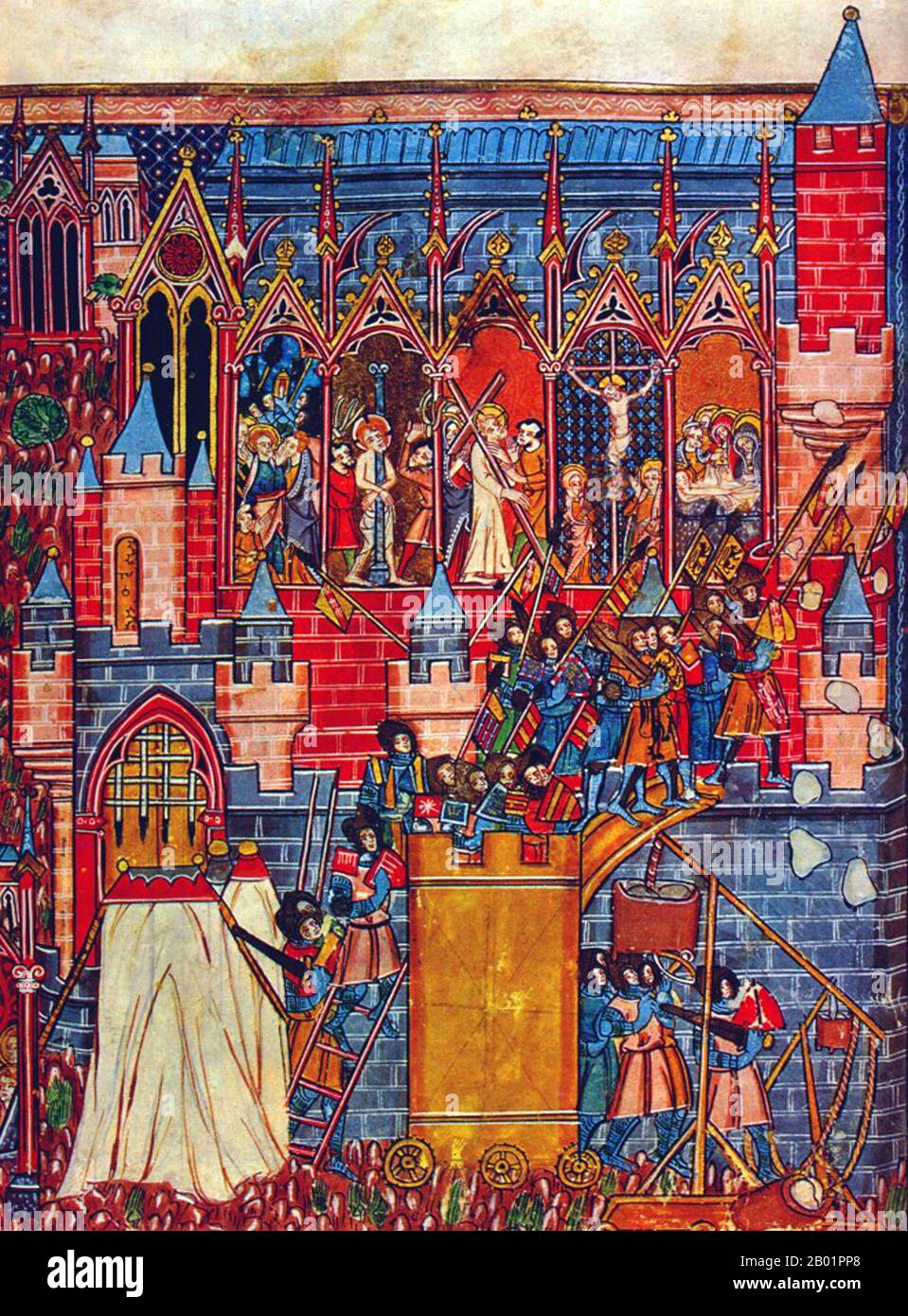 Palestine: The Siege of Jerusalem during the First Crusade (7 June - 15 July 1099). Miniature painting by Guillaume de Tyr/William of Tyre (1130 - 29 September 1186) from a copy of the Histoire d'Outremer, c. 13th century. The Siege of Jerusalem took place from June 7 to July 15, 1099 during the First Crusade. The Crusaders stormed and captured the city from Fatimid Egypt. Throughout the siege, attacks were made on the walls, but each one was repulsed. The Genoese troops, led by commander Guglielmo Embriaco, had previously dismantled their ships and used the wood to make siege towers. Stock Photohttps://www.alamy.com/image-license-details/?v=1https://www.alamy.com/palestine-the-siege-of-jerusalem-during-the-first-crusade-7-june-15-july-1099-miniature-painting-by-guillaume-de-tyrwilliam-of-tyre-1130-29-september-1186-from-a-copy-of-the-histoire-doutremer-c-13th-century-the-siege-of-jerusalem-took-place-from-june-7-to-july-15-1099-during-the-first-crusade-the-crusaders-stormed-and-captured-the-city-from-fatimid-egypt-throughout-the-siege-attacks-were-made-on-the-walls-but-each-one-was-repulsed-the-genoese-troops-led-by-commander-guglielmo-embriaco-had-previously-dismantled-their-ships-and-used-the-wood-to-make-siege-towers-image344247184.html
Palestine: The Siege of Jerusalem during the First Crusade (7 June - 15 July 1099). Miniature painting by Guillaume de Tyr/William of Tyre (1130 - 29 September 1186) from a copy of the Histoire d'Outremer, c. 13th century. The Siege of Jerusalem took place from June 7 to July 15, 1099 during the First Crusade. The Crusaders stormed and captured the city from Fatimid Egypt. Throughout the siege, attacks were made on the walls, but each one was repulsed. The Genoese troops, led by commander Guglielmo Embriaco, had previously dismantled their ships and used the wood to make siege towers. Stock Photohttps://www.alamy.com/image-license-details/?v=1https://www.alamy.com/palestine-the-siege-of-jerusalem-during-the-first-crusade-7-june-15-july-1099-miniature-painting-by-guillaume-de-tyrwilliam-of-tyre-1130-29-september-1186-from-a-copy-of-the-histoire-doutremer-c-13th-century-the-siege-of-jerusalem-took-place-from-june-7-to-july-15-1099-during-the-first-crusade-the-crusaders-stormed-and-captured-the-city-from-fatimid-egypt-throughout-the-siege-attacks-were-made-on-the-walls-but-each-one-was-repulsed-the-genoese-troops-led-by-commander-guglielmo-embriaco-had-previously-dismantled-their-ships-and-used-the-wood-to-make-siege-towers-image344247184.htmlRM2B01PP8–Palestine: The Siege of Jerusalem during the First Crusade (7 June - 15 July 1099). Miniature painting by Guillaume de Tyr/William of Tyre (1130 - 29 September 1186) from a copy of the Histoire d'Outremer, c. 13th century. The Siege of Jerusalem took place from June 7 to July 15, 1099 during the First Crusade. The Crusaders stormed and captured the city from Fatimid Egypt. Throughout the siege, attacks were made on the walls, but each one was repulsed. The Genoese troops, led by commander Guglielmo Embriaco, had previously dismantled their ships and used the wood to make siege towers.
 Head of a knight figure. England, 13th century. Stone. Erworben 1994. The crusades emanated from the whole of western Europe. Most of the crusaders into the Holy Land, however, came from England and France. The German Historical Museum. Berlin. Germany. Stock Photohttps://www.alamy.com/image-license-details/?v=1https://www.alamy.com/head-of-a-knight-figure-england-13th-century-stone-erworben-1994-the-crusades-emanated-from-the-whole-of-western-europe-most-of-the-crusaders-into-the-holy-land-however-came-from-england-and-france-the-german-historical-museum-berlin-germany-image218687089.html
Head of a knight figure. England, 13th century. Stone. Erworben 1994. The crusades emanated from the whole of western Europe. Most of the crusaders into the Holy Land, however, came from England and France. The German Historical Museum. Berlin. Germany. Stock Photohttps://www.alamy.com/image-license-details/?v=1https://www.alamy.com/head-of-a-knight-figure-england-13th-century-stone-erworben-1994-the-crusades-emanated-from-the-whole-of-western-europe-most-of-the-crusaders-into-the-holy-land-however-came-from-england-and-france-the-german-historical-museum-berlin-germany-image218687089.htmlRMPKP1H5–Head of a knight figure. England, 13th century. Stone. Erworben 1994. The crusades emanated from the whole of western Europe. Most of the crusaders into the Holy Land, however, came from England and France. The German Historical Museum. Berlin. Germany.
 Gallipoli Italy Stock Photohttps://www.alamy.com/image-license-details/?v=1https://www.alamy.com/gallipoli-italy-image212568421.html
Gallipoli Italy Stock Photohttps://www.alamy.com/image-license-details/?v=1https://www.alamy.com/gallipoli-italy-image212568421.htmlRFP9R959–Gallipoli Italy
 Syria. Talkalakh District, Krak des Chevaliers. Crusader castle, under control of Knights Hospitaller (1142-1271) during the Crusades to the Holy Land, fell into Arab control in the 13th century. Entrance tower. Photo taken before the Syrian Civil War. Stock Photohttps://www.alamy.com/image-license-details/?v=1https://www.alamy.com/syria-talkalakh-district-krak-des-chevaliers-crusader-castle-under-control-of-knights-hospitaller-1142-1271-during-the-crusades-to-the-holy-land-fell-into-arab-control-in-the-13th-century-entrance-tower-photo-taken-before-the-syrian-civil-war-image210678553.html
Syria. Talkalakh District, Krak des Chevaliers. Crusader castle, under control of Knights Hospitaller (1142-1271) during the Crusades to the Holy Land, fell into Arab control in the 13th century. Entrance tower. Photo taken before the Syrian Civil War. Stock Photohttps://www.alamy.com/image-license-details/?v=1https://www.alamy.com/syria-talkalakh-district-krak-des-chevaliers-crusader-castle-under-control-of-knights-hospitaller-1142-1271-during-the-crusades-to-the-holy-land-fell-into-arab-control-in-the-13th-century-entrance-tower-photo-taken-before-the-syrian-civil-war-image210678553.htmlRMP6N6J1–Syria. Talkalakh District, Krak des Chevaliers. Crusader castle, under control of Knights Hospitaller (1142-1271) during the Crusades to the Holy Land, fell into Arab control in the 13th century. Entrance tower. Photo taken before the Syrian Civil War.
 Lebanon, section of the Crusader Sea Castle at Sidon, an early 13th century fortress built by the Crusaders on a small island connected to the mainland by a causeway. Stock Photohttps://www.alamy.com/image-license-details/?v=1https://www.alamy.com/lebanon-section-of-the-crusader-sea-castle-at-sidon-an-early-13th-century-fortress-built-by-the-crusaders-on-a-small-island-connected-to-the-mainland-by-a-causeway-image216190583.html
Lebanon, section of the Crusader Sea Castle at Sidon, an early 13th century fortress built by the Crusaders on a small island connected to the mainland by a causeway. Stock Photohttps://www.alamy.com/image-license-details/?v=1https://www.alamy.com/lebanon-section-of-the-crusader-sea-castle-at-sidon-an-early-13th-century-fortress-built-by-the-crusaders-on-a-small-island-connected-to-the-mainland-by-a-causeway-image216190583.htmlRMPFM987–Lebanon, section of the Crusader Sea Castle at Sidon, an early 13th century fortress built by the Crusaders on a small island connected to the mainland by a causeway.
 Syria. Talkalakh District, Krak des Chevaliers. Crusader castle, under control of the Knights Hospitaller (1142-1271) during the Crusades to the Holy Land, fell into Arab control in 13th century. View of the moat. Photo taken before the Syrian Civil War. Stock Photohttps://www.alamy.com/image-license-details/?v=1https://www.alamy.com/syria-talkalakh-district-krak-des-chevaliers-crusader-castle-under-control-of-the-knights-hospitaller-1142-1271-during-the-crusades-to-the-holy-land-fell-into-arab-control-in-13th-century-view-of-the-moat-photo-taken-before-the-syrian-civil-war-image210678566.html
Syria. Talkalakh District, Krak des Chevaliers. Crusader castle, under control of the Knights Hospitaller (1142-1271) during the Crusades to the Holy Land, fell into Arab control in 13th century. View of the moat. Photo taken before the Syrian Civil War. Stock Photohttps://www.alamy.com/image-license-details/?v=1https://www.alamy.com/syria-talkalakh-district-krak-des-chevaliers-crusader-castle-under-control-of-the-knights-hospitaller-1142-1271-during-the-crusades-to-the-holy-land-fell-into-arab-control-in-13th-century-view-of-the-moat-photo-taken-before-the-syrian-civil-war-image210678566.htmlRMP6N6JE–Syria. Talkalakh District, Krak des Chevaliers. Crusader castle, under control of the Knights Hospitaller (1142-1271) during the Crusades to the Holy Land, fell into Arab control in 13th century. View of the moat. Photo taken before the Syrian Civil War.
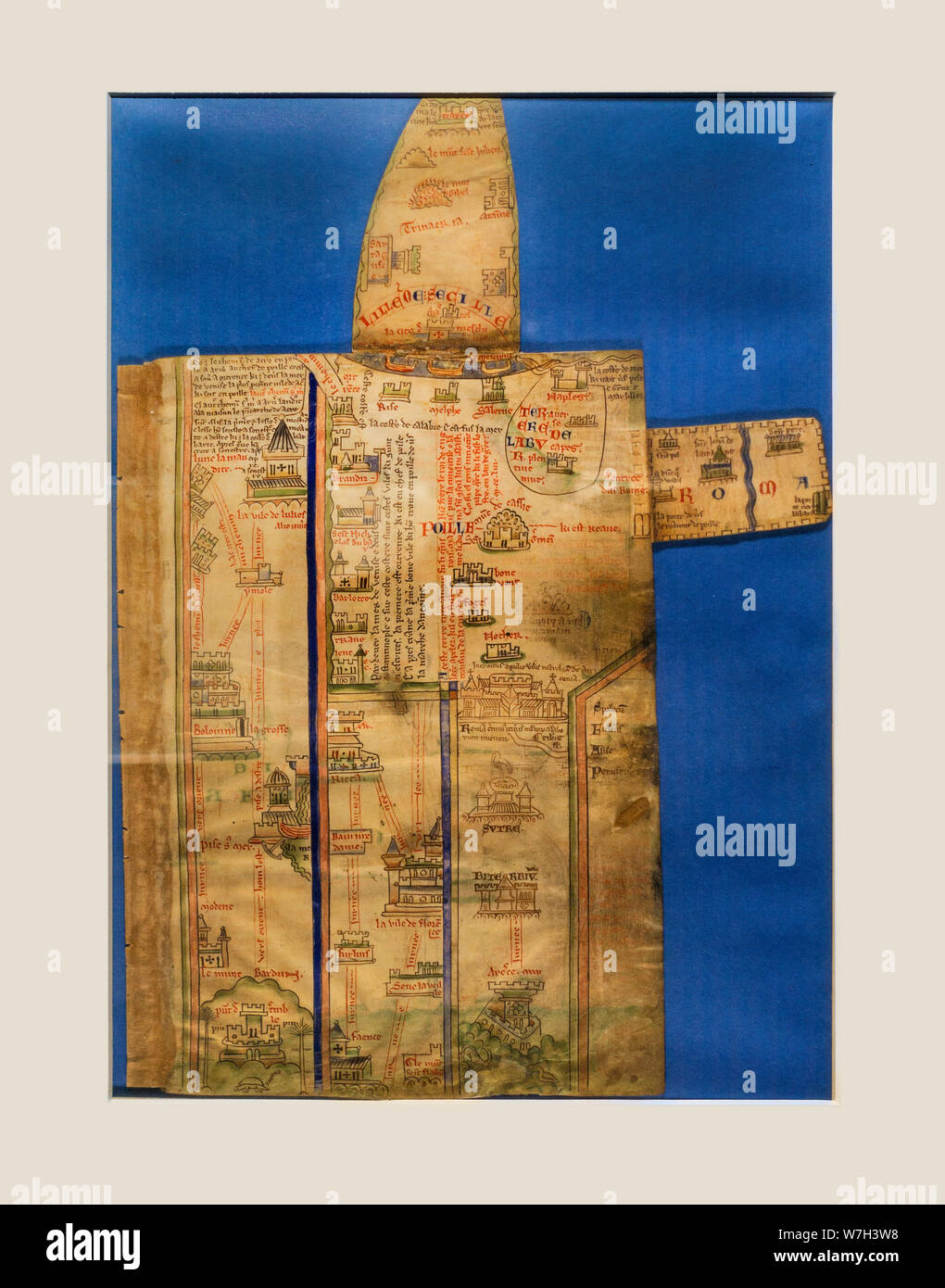 13th century map / itinerary showing route from London to Palestine, part of Historia Anglorum by Matthew Paris, medieval monk and cartographer Stock Photohttps://www.alamy.com/image-license-details/?v=1https://www.alamy.com/13th-century-map-itinerary-showing-route-from-london-to-palestine-part-of-historia-anglorum-by-matthew-paris-medieval-monk-and-cartographer-image262834356.html
13th century map / itinerary showing route from London to Palestine, part of Historia Anglorum by Matthew Paris, medieval monk and cartographer Stock Photohttps://www.alamy.com/image-license-details/?v=1https://www.alamy.com/13th-century-map-itinerary-showing-route-from-london-to-palestine-part-of-historia-anglorum-by-matthew-paris-medieval-monk-and-cartographer-image262834356.htmlRMW7H3W8–13th century map / itinerary showing route from London to Palestine, part of Historia Anglorum by Matthew Paris, medieval monk and cartographer
 Syria. Talkalakh District, Krak des Chevaliers. Crusader castle, under control of Knights Hospitaller (1142-1271) during the Crusades to the Holy Land, fell into Arab control in the 13th century. View of one of the turrets. Photo taken before the Syrian Civil War. Stock Photohttps://www.alamy.com/image-license-details/?v=1https://www.alamy.com/syria-talkalakh-district-krak-des-chevaliers-crusader-castle-under-control-of-knights-hospitaller-1142-1271-during-the-crusades-to-the-holy-land-fell-into-arab-control-in-the-13th-century-view-of-one-of-the-turrets-photo-taken-before-the-syrian-civil-war-image210678561.html
Syria. Talkalakh District, Krak des Chevaliers. Crusader castle, under control of Knights Hospitaller (1142-1271) during the Crusades to the Holy Land, fell into Arab control in the 13th century. View of one of the turrets. Photo taken before the Syrian Civil War. Stock Photohttps://www.alamy.com/image-license-details/?v=1https://www.alamy.com/syria-talkalakh-district-krak-des-chevaliers-crusader-castle-under-control-of-knights-hospitaller-1142-1271-during-the-crusades-to-the-holy-land-fell-into-arab-control-in-the-13th-century-view-of-one-of-the-turrets-photo-taken-before-the-syrian-civil-war-image210678561.htmlRMP6N6J9–Syria. Talkalakh District, Krak des Chevaliers. Crusader castle, under control of Knights Hospitaller (1142-1271) during the Crusades to the Holy Land, fell into Arab control in the 13th century. View of one of the turrets. Photo taken before the Syrian Civil War.
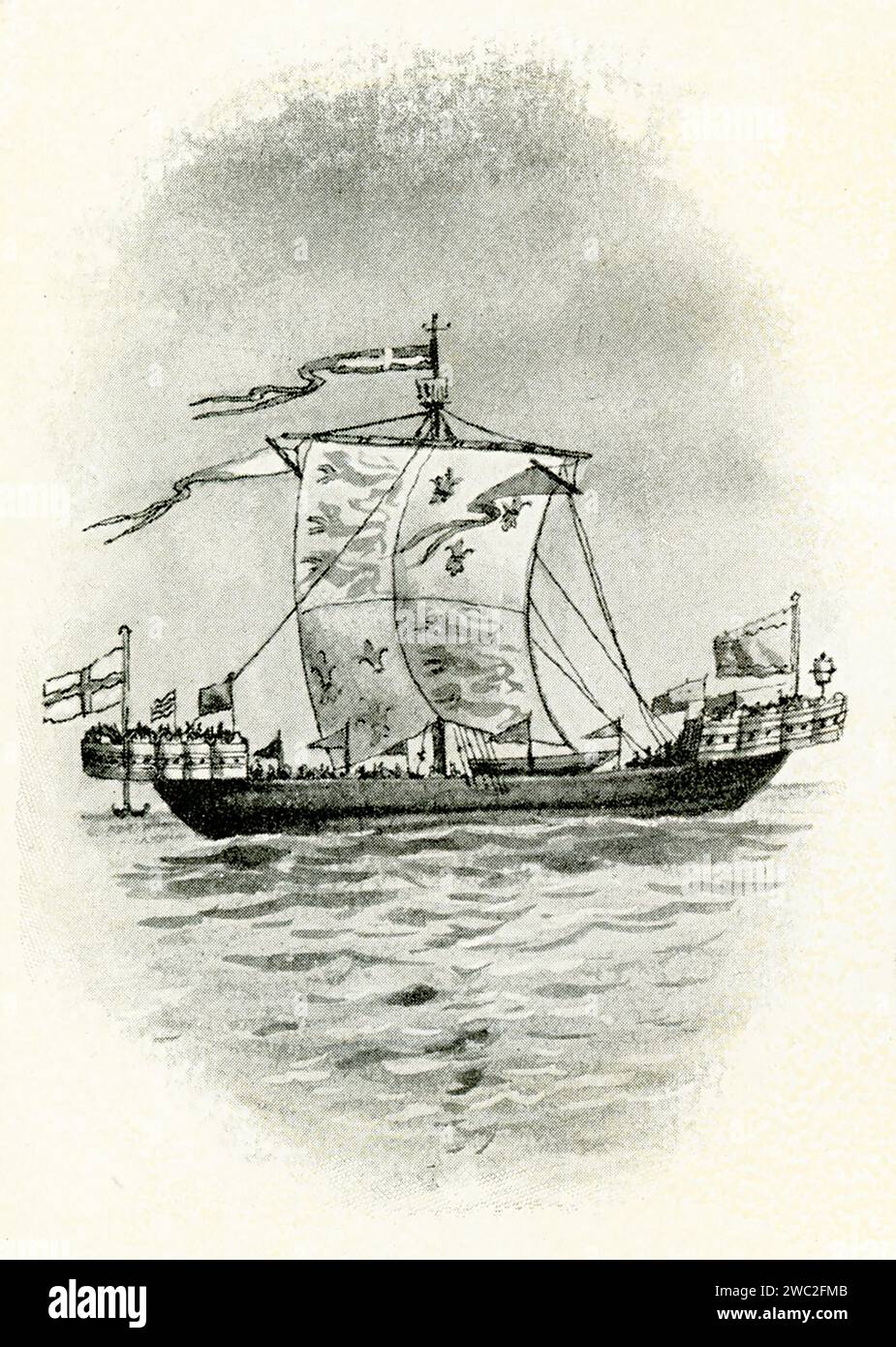 English Ship from time of Crusades Stock Photohttps://www.alamy.com/image-license-details/?v=1https://www.alamy.com/english-ship-from-time-of-crusades-image592584619.html
English Ship from time of Crusades Stock Photohttps://www.alamy.com/image-license-details/?v=1https://www.alamy.com/english-ship-from-time-of-crusades-image592584619.htmlRF2WC2FMB–English Ship from time of Crusades
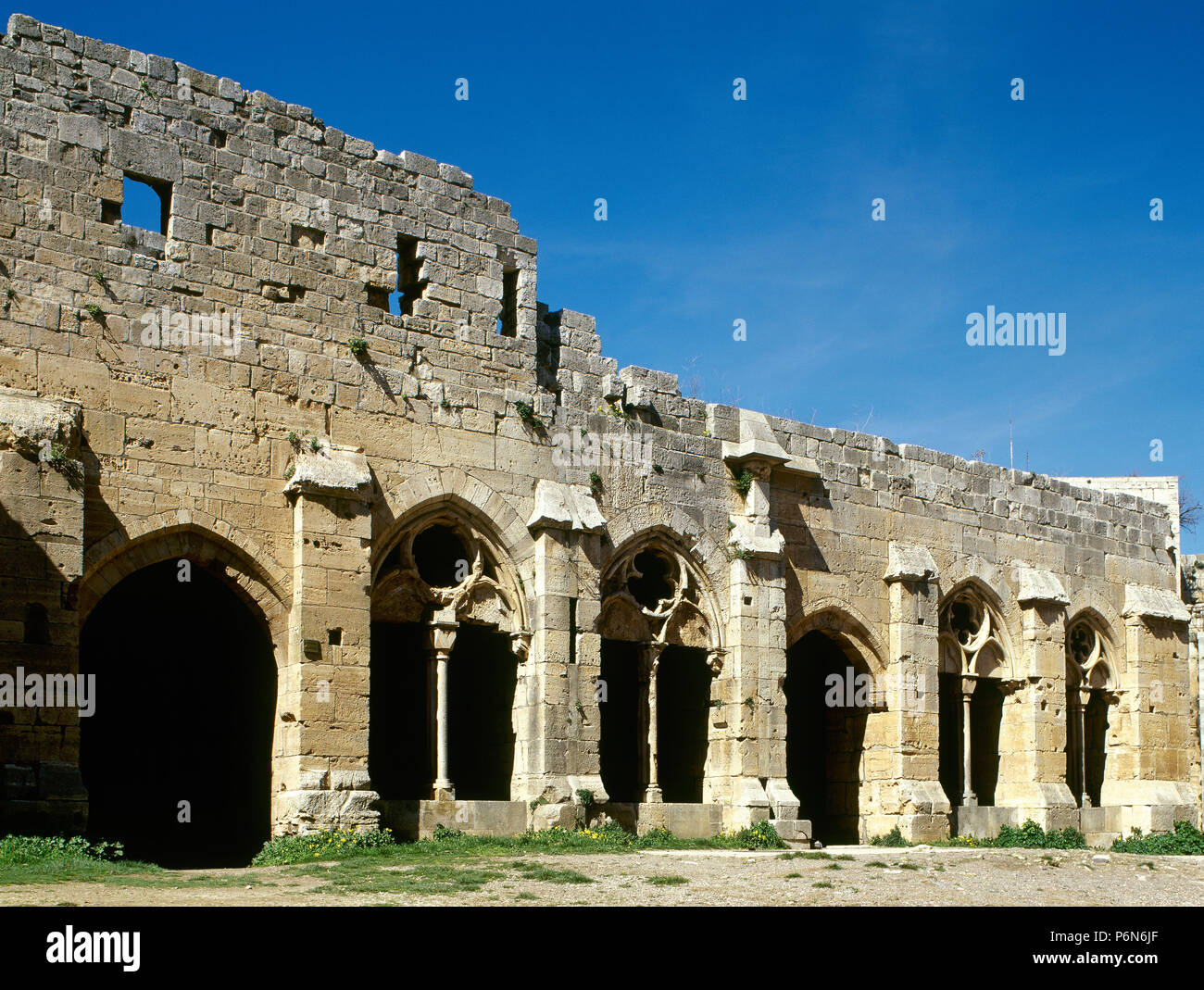 Syria. Talkalakh District, Krak des Chevaliers. Crusader castle, under control of Knights Hospitaller (1142-1271) during the Crusades to the Holy Land, fell into Arab control in the 13th century. Partial view of the reception room and gallery. Photo taken before the Syrian Civil War. Stock Photohttps://www.alamy.com/image-license-details/?v=1https://www.alamy.com/syria-talkalakh-district-krak-des-chevaliers-crusader-castle-under-control-of-knights-hospitaller-1142-1271-during-the-crusades-to-the-holy-land-fell-into-arab-control-in-the-13th-century-partial-view-of-the-reception-room-and-gallery-photo-taken-before-the-syrian-civil-war-image210678567.html
Syria. Talkalakh District, Krak des Chevaliers. Crusader castle, under control of Knights Hospitaller (1142-1271) during the Crusades to the Holy Land, fell into Arab control in the 13th century. Partial view of the reception room and gallery. Photo taken before the Syrian Civil War. Stock Photohttps://www.alamy.com/image-license-details/?v=1https://www.alamy.com/syria-talkalakh-district-krak-des-chevaliers-crusader-castle-under-control-of-knights-hospitaller-1142-1271-during-the-crusades-to-the-holy-land-fell-into-arab-control-in-the-13th-century-partial-view-of-the-reception-room-and-gallery-photo-taken-before-the-syrian-civil-war-image210678567.htmlRMP6N6JF–Syria. Talkalakh District, Krak des Chevaliers. Crusader castle, under control of Knights Hospitaller (1142-1271) during the Crusades to the Holy Land, fell into Arab control in the 13th century. Partial view of the reception room and gallery. Photo taken before the Syrian Civil War.
 William I, Count of Holland, 1167-1222, during the seige of the Egyptian city of Damietta, during the Fifth Crusade. After a 19th century print. Stock Photohttps://www.alamy.com/image-license-details/?v=1https://www.alamy.com/william-i-count-of-holland-1167-1222-during-the-seige-of-the-egyptian-city-of-damietta-during-the-fifth-crusade-after-a-19th-century-print-image230717009.html
William I, Count of Holland, 1167-1222, during the seige of the Egyptian city of Damietta, during the Fifth Crusade. After a 19th century print. Stock Photohttps://www.alamy.com/image-license-details/?v=1https://www.alamy.com/william-i-count-of-holland-1167-1222-during-the-seige-of-the-egyptian-city-of-damietta-during-the-fifth-crusade-after-a-19th-century-print-image230717009.htmlRMRBA1W5–William I, Count of Holland, 1167-1222, during the seige of the Egyptian city of Damietta, during the Fifth Crusade. After a 19th century print.
 History by Polybius. Volume II. French edition translated from Greek by Dom Vincent Thuillier. Comments of Military Science enriched with critical and historical notes by M. De Folard. Paris, chez Pierre Gandouin, Julien-Michel Gandouin, Pierre-Francois Giffart and Nicolas-Pierre Armand, 1727. Printing by Jean-Baptiste Lamesle. Siege Towers with wheels used by the Holy Roman Emperor Frederick II (1194-1250) during the siege of Jerusalem. The Sixth Crusade. Engraving. Stock Photohttps://www.alamy.com/image-license-details/?v=1https://www.alamy.com/history-by-polybius-volume-ii-french-edition-translated-from-greek-by-dom-vincent-thuillier-comments-of-military-science-enriched-with-critical-and-historical-notes-by-m-de-folard-paris-chez-pierre-gandouin-julien-michel-gandouin-pierre-francois-giffart-and-nicolas-pierre-armand-1727-printing-by-jean-baptiste-lamesle-siege-towers-with-wheels-used-by-the-holy-roman-emperor-frederick-ii-1194-1250-during-the-siege-of-jerusalem-the-sixth-crusade-engraving-image244696283.html
History by Polybius. Volume II. French edition translated from Greek by Dom Vincent Thuillier. Comments of Military Science enriched with critical and historical notes by M. De Folard. Paris, chez Pierre Gandouin, Julien-Michel Gandouin, Pierre-Francois Giffart and Nicolas-Pierre Armand, 1727. Printing by Jean-Baptiste Lamesle. Siege Towers with wheels used by the Holy Roman Emperor Frederick II (1194-1250) during the siege of Jerusalem. The Sixth Crusade. Engraving. Stock Photohttps://www.alamy.com/image-license-details/?v=1https://www.alamy.com/history-by-polybius-volume-ii-french-edition-translated-from-greek-by-dom-vincent-thuillier-comments-of-military-science-enriched-with-critical-and-historical-notes-by-m-de-folard-paris-chez-pierre-gandouin-julien-michel-gandouin-pierre-francois-giffart-and-nicolas-pierre-armand-1727-printing-by-jean-baptiste-lamesle-siege-towers-with-wheels-used-by-the-holy-roman-emperor-frederick-ii-1194-1250-during-the-siege-of-jerusalem-the-sixth-crusade-engraving-image244696283.htmlRMT62TGY–History by Polybius. Volume II. French edition translated from Greek by Dom Vincent Thuillier. Comments of Military Science enriched with critical and historical notes by M. De Folard. Paris, chez Pierre Gandouin, Julien-Michel Gandouin, Pierre-Francois Giffart and Nicolas-Pierre Armand, 1727. Printing by Jean-Baptiste Lamesle. Siege Towers with wheels used by the Holy Roman Emperor Frederick II (1194-1250) during the siege of Jerusalem. The Sixth Crusade. Engraving.
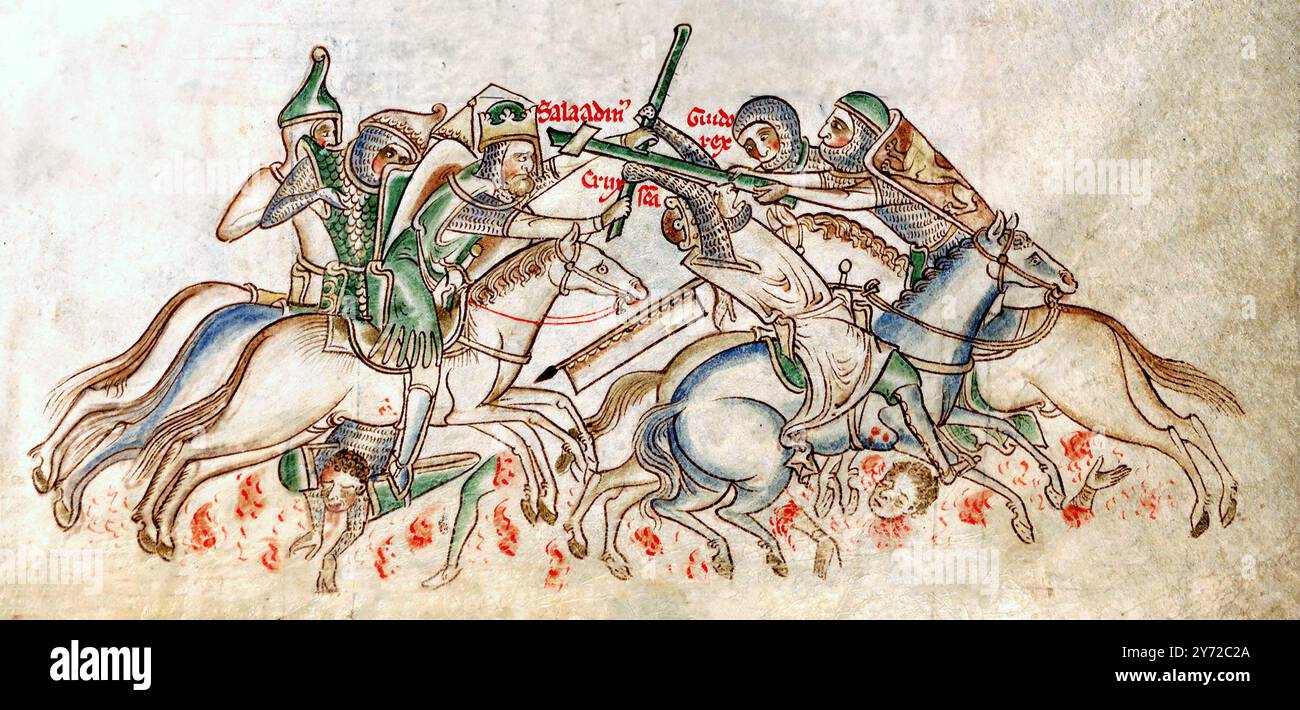 Battle of Hattin. The Battle of Hattin, from a 13th-century manuscript of the Chronica Majora depicting the capture of the True Cross by Saladin. The Battle of Hattin took place on 4 July 1187, between the Crusader states of the Levant and the forces of the Ayyubid sultan Saladin. Stock Photohttps://www.alamy.com/image-license-details/?v=1https://www.alamy.com/battle-of-hattin-the-battle-of-hattin-from-a-13th-century-manuscript-of-the-chronica-majora-depicting-the-capture-of-the-true-cross-by-saladin-the-battle-of-hattin-took-place-on-4-july-1187-between-the-crusader-states-of-the-levant-and-the-forces-of-the-ayyubid-sultan-saladin-image623929218.html
Battle of Hattin. The Battle of Hattin, from a 13th-century manuscript of the Chronica Majora depicting the capture of the True Cross by Saladin. The Battle of Hattin took place on 4 July 1187, between the Crusader states of the Levant and the forces of the Ayyubid sultan Saladin. Stock Photohttps://www.alamy.com/image-license-details/?v=1https://www.alamy.com/battle-of-hattin-the-battle-of-hattin-from-a-13th-century-manuscript-of-the-chronica-majora-depicting-the-capture-of-the-true-cross-by-saladin-the-battle-of-hattin-took-place-on-4-july-1187-between-the-crusader-states-of-the-levant-and-the-forces-of-the-ayyubid-sultan-saladin-image623929218.htmlRM2Y72C2A–Battle of Hattin. The Battle of Hattin, from a 13th-century manuscript of the Chronica Majora depicting the capture of the True Cross by Saladin. The Battle of Hattin took place on 4 July 1187, between the Crusader states of the Levant and the forces of the Ayyubid sultan Saladin.
 Seventh Crusade (248-1254). Led by Louis IX of France (1214-1270). Conquest of Damietta. Disembarkation of the Crusaders at Damietta (Nile Delta) on 5 June 1249. Facsimile of an engraving from 'Grand Voyage de Hierusalem', printed in Paris in 1522. Due to one of the anachronisms common among ancient artists, St Louis' army and fleet are armed with cannons. 'Vie Militaire et Religieuse au Moyen Age et a L'Epoque de la Renaissance'. Paris, 1877. Stock Photohttps://www.alamy.com/image-license-details/?v=1https://www.alamy.com/seventh-crusade-248-1254-led-by-louis-ix-of-france-1214-1270-conquest-of-damietta-disembarkation-of-the-crusaders-at-damietta-nile-delta-on-5-june-1249-facsimile-of-an-engraving-from-grand-voyage-de-hierusalem-printed-in-paris-in-1522-due-to-one-of-the-anachronisms-common-among-ancient-artists-st-louis-army-and-fleet-are-armed-with-cannons-vie-militaire-et-religieuse-au-moyen-age-et-a-lepoque-de-la-renaissance-paris-1877-image591436794.html
Seventh Crusade (248-1254). Led by Louis IX of France (1214-1270). Conquest of Damietta. Disembarkation of the Crusaders at Damietta (Nile Delta) on 5 June 1249. Facsimile of an engraving from 'Grand Voyage de Hierusalem', printed in Paris in 1522. Due to one of the anachronisms common among ancient artists, St Louis' army and fleet are armed with cannons. 'Vie Militaire et Religieuse au Moyen Age et a L'Epoque de la Renaissance'. Paris, 1877. Stock Photohttps://www.alamy.com/image-license-details/?v=1https://www.alamy.com/seventh-crusade-248-1254-led-by-louis-ix-of-france-1214-1270-conquest-of-damietta-disembarkation-of-the-crusaders-at-damietta-nile-delta-on-5-june-1249-facsimile-of-an-engraving-from-grand-voyage-de-hierusalem-printed-in-paris-in-1522-due-to-one-of-the-anachronisms-common-among-ancient-artists-st-louis-army-and-fleet-are-armed-with-cannons-vie-militaire-et-religieuse-au-moyen-age-et-a-lepoque-de-la-renaissance-paris-1877-image591436794.htmlRM2WA67JJ–Seventh Crusade (248-1254). Led by Louis IX of France (1214-1270). Conquest of Damietta. Disembarkation of the Crusaders at Damietta (Nile Delta) on 5 June 1249. Facsimile of an engraving from 'Grand Voyage de Hierusalem', printed in Paris in 1522. Due to one of the anachronisms common among ancient artists, St Louis' army and fleet are armed with cannons. 'Vie Militaire et Religieuse au Moyen Age et a L'Epoque de la Renaissance'. Paris, 1877.
 geography / travel, Lebanon, Saida (Sidon), sea fort of the crusaders, built 1227 - 1228, destroyed 1291, exterior view, castle, built in water, Sayda, crusades, sea, ruin, coast, coastline, bridge, stone bridge, Middle Ages, 13th century, knight's castle, Mediterranean, Asia, historical, historic, ancient people, medieval, Stock Photohttps://www.alamy.com/image-license-details/?v=1https://www.alamy.com/stock-photo-geography-travel-lebanon-saida-sidon-sea-fort-of-the-crusaders-built-11694656.html
geography / travel, Lebanon, Saida (Sidon), sea fort of the crusaders, built 1227 - 1228, destroyed 1291, exterior view, castle, built in water, Sayda, crusades, sea, ruin, coast, coastline, bridge, stone bridge, Middle Ages, 13th century, knight's castle, Mediterranean, Asia, historical, historic, ancient people, medieval, Stock Photohttps://www.alamy.com/image-license-details/?v=1https://www.alamy.com/stock-photo-geography-travel-lebanon-saida-sidon-sea-fort-of-the-crusaders-built-11694656.htmlRMA71M5N–geography / travel, Lebanon, Saida (Sidon), sea fort of the crusaders, built 1227 - 1228, destroyed 1291, exterior view, castle, built in water, Sayda, crusades, sea, ruin, coast, coastline, bridge, stone bridge, Middle Ages, 13th century, knight's castle, Mediterranean, Asia, historical, historic, ancient people, medieval,
 Conrad V of Germany. King of the Germans, Sicily and Jerusalem. Scene of his Execution. Engraving by Germania, 1882. Stock Photohttps://www.alamy.com/image-license-details/?v=1https://www.alamy.com/conrad-v-of-germany-king-of-the-germans-sicily-and-jerusalem-scene-of-his-execution-engraving-by-germania-1882-image224172071.html
Conrad V of Germany. King of the Germans, Sicily and Jerusalem. Scene of his Execution. Engraving by Germania, 1882. Stock Photohttps://www.alamy.com/image-license-details/?v=1https://www.alamy.com/conrad-v-of-germany-king-of-the-germans-sicily-and-jerusalem-scene-of-his-execution-engraving-by-germania-1882-image224172071.htmlRMR0KWNB–Conrad V of Germany. King of the Germans, Sicily and Jerusalem. Scene of his Execution. Engraving by Germania, 1882.
 Middle Ages. The Crusades. Chromolithography. 'Historia Universal', by Cesar Cantu. Volume VI, 1885. Stock Photohttps://www.alamy.com/image-license-details/?v=1https://www.alamy.com/middle-ages-the-crusades-chromolithography-historia-universal-by-cesar-cantu-volume-vi-1885-image608948806.html
Middle Ages. The Crusades. Chromolithography. 'Historia Universal', by Cesar Cantu. Volume VI, 1885. Stock Photohttps://www.alamy.com/image-license-details/?v=1https://www.alamy.com/middle-ages-the-crusades-chromolithography-historia-universal-by-cesar-cantu-volume-vi-1885-image608948806.htmlRM2XAM0BJ–Middle Ages. The Crusades. Chromolithography. 'Historia Universal', by Cesar Cantu. Volume VI, 1885.
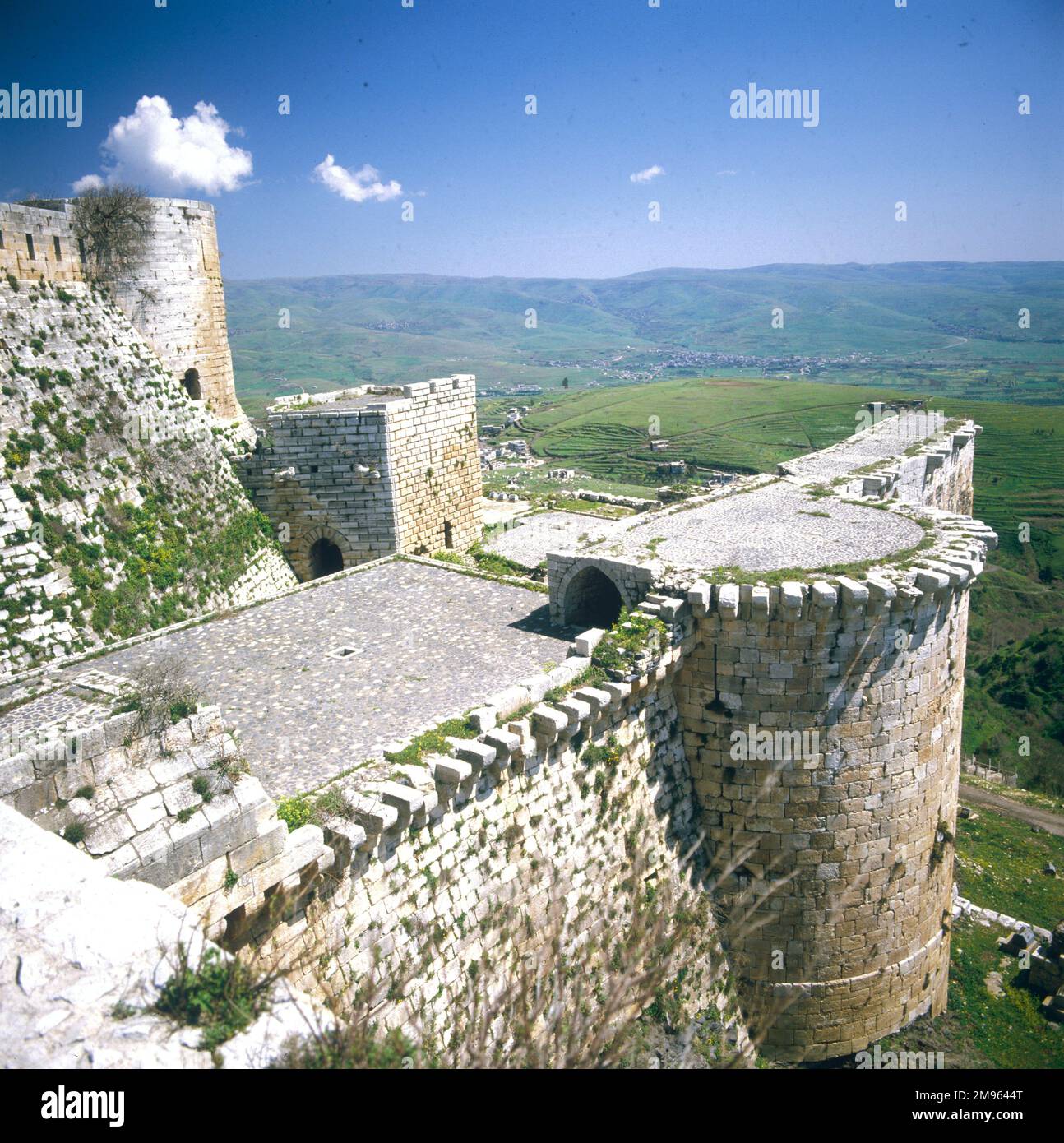 This fortress was built by the Kurds. It was taken by the crusaders in the 12th century. They made additions to it before the fort was taken by Baybars in the 13th century. Stock Photohttps://www.alamy.com/image-license-details/?v=1https://www.alamy.com/this-fortress-was-built-by-the-kurds-it-was-taken-by-the-crusaders-in-the-12th-century-they-made-additions-to-it-before-the-fort-was-taken-by-baybars-in-the-13th-century-image504767560.html
This fortress was built by the Kurds. It was taken by the crusaders in the 12th century. They made additions to it before the fort was taken by Baybars in the 13th century. Stock Photohttps://www.alamy.com/image-license-details/?v=1https://www.alamy.com/this-fortress-was-built-by-the-kurds-it-was-taken-by-the-crusaders-in-the-12th-century-they-made-additions-to-it-before-the-fort-was-taken-by-baybars-in-the-13th-century-image504767560.htmlRM2M9644T–This fortress was built by the Kurds. It was taken by the crusaders in the 12th century. They made additions to it before the fort was taken by Baybars in the 13th century.
 Departure of crusaders for Palestine. (Later colouration). 19th century Stock Photohttps://www.alamy.com/image-license-details/?v=1https://www.alamy.com/departure-of-crusaders-for-palestine-later-colouration-19th-century-image68406255.html
Departure of crusaders for Palestine. (Later colouration). 19th century Stock Photohttps://www.alamy.com/image-license-details/?v=1https://www.alamy.com/departure-of-crusaders-for-palestine-later-colouration-19th-century-image68406255.htmlRMDY84TF–Departure of crusaders for Palestine. (Later colouration). 19th century
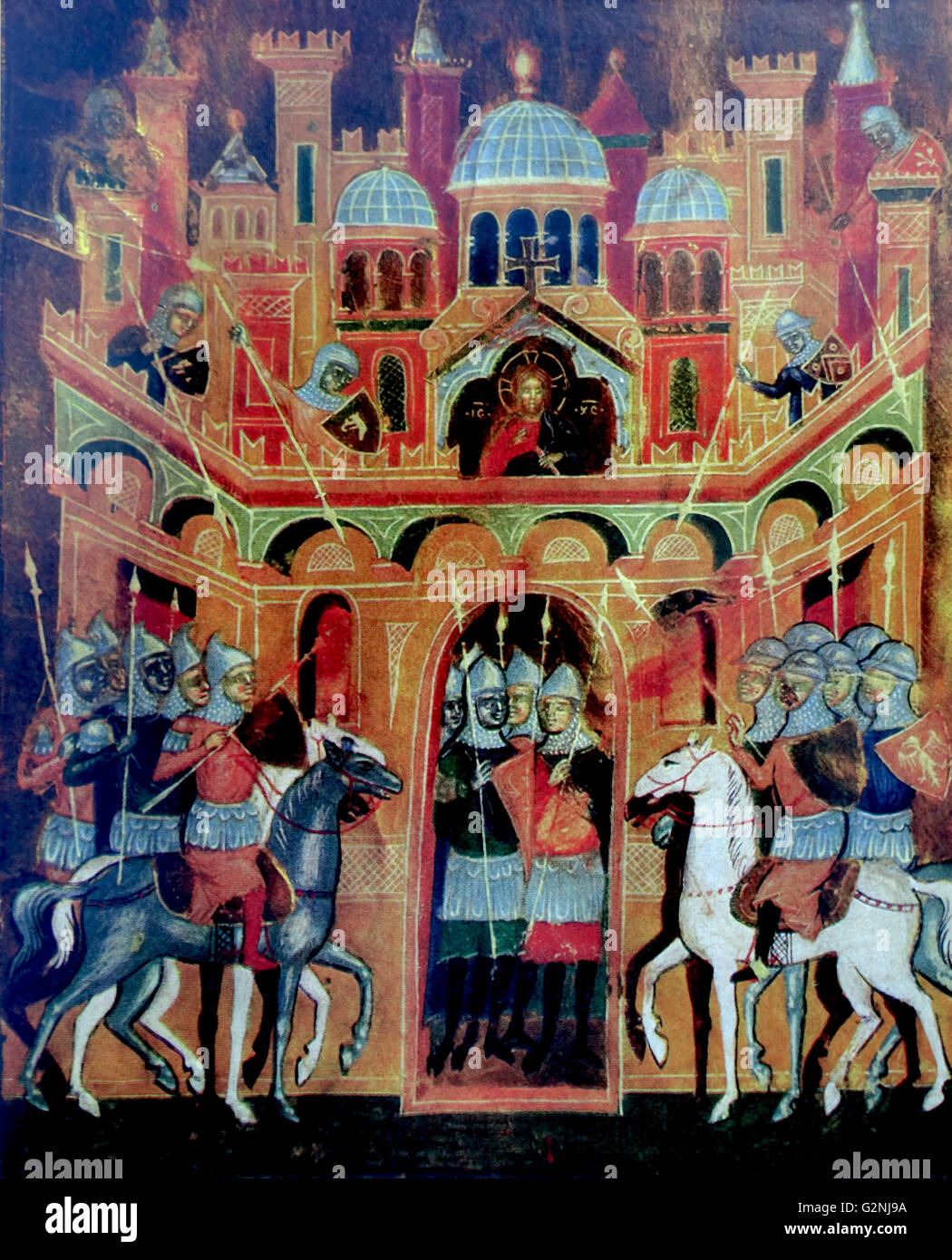 Venetian Miniature depicting the Holy War on Jerusalem. Also known as, the Siege of Jerusalem, took place in July 1099 resulting in victory for the Crusaders and the formation of the Kingdom of Jerusalem. Dated 13th Century Stock Photohttps://www.alamy.com/image-license-details/?v=1https://www.alamy.com/stock-photo-venetian-miniature-depicting-the-holy-war-on-jerusalem-also-known-104966886.html
Venetian Miniature depicting the Holy War on Jerusalem. Also known as, the Siege of Jerusalem, took place in July 1099 resulting in victory for the Crusaders and the formation of the Kingdom of Jerusalem. Dated 13th Century Stock Photohttps://www.alamy.com/image-license-details/?v=1https://www.alamy.com/stock-photo-venetian-miniature-depicting-the-holy-war-on-jerusalem-also-known-104966886.htmlRMG2NJ9A–Venetian Miniature depicting the Holy War on Jerusalem. Also known as, the Siege of Jerusalem, took place in July 1099 resulting in victory for the Crusaders and the formation of the Kingdom of Jerusalem. Dated 13th Century
 13th century monument to the crusader Walter de Dunstanville in the church of St Andrew, Castle Combe, Cotswolds, Wiltshire, England, Great Britain, Europe Stock Photohttps://www.alamy.com/image-license-details/?v=1https://www.alamy.com/13th-century-monument-to-the-crusader-walter-de-dunstanville-in-the-church-of-st-andrew-castle-combe-cotswolds-wiltshire-england-great-britain-europe-image599160573.html
13th century monument to the crusader Walter de Dunstanville in the church of St Andrew, Castle Combe, Cotswolds, Wiltshire, England, Great Britain, Europe Stock Photohttps://www.alamy.com/image-license-details/?v=1https://www.alamy.com/13th-century-monument-to-the-crusader-walter-de-dunstanville-in-the-church-of-st-andrew-castle-combe-cotswolds-wiltshire-england-great-britain-europe-image599160573.htmlRM2WPP3BW–13th century monument to the crusader Walter de Dunstanville in the church of St Andrew, Castle Combe, Cotswolds, Wiltshire, England, Great Britain, Europe
 Gallipoli Italy Stock Photohttps://www.alamy.com/image-license-details/?v=1https://www.alamy.com/gallipoli-italy-image212568233.html
Gallipoli Italy Stock Photohttps://www.alamy.com/image-license-details/?v=1https://www.alamy.com/gallipoli-italy-image212568233.htmlRFP9R8XH–Gallipoli Italy
 The tomb of the Crusader knight Richard de Crupes in the church in the Cotswold village of Whittington, Gloucestershire UK Stock Photohttps://www.alamy.com/image-license-details/?v=1https://www.alamy.com/the-tomb-of-the-crusader-knight-richard-de-crupes-in-the-church-in-the-cotswold-village-of-whittington-gloucestershire-uk-image416476500.html
The tomb of the Crusader knight Richard de Crupes in the church in the Cotswold village of Whittington, Gloucestershire UK Stock Photohttps://www.alamy.com/image-license-details/?v=1https://www.alamy.com/the-tomb-of-the-crusader-knight-richard-de-crupes-in-the-church-in-the-cotswold-village-of-whittington-gloucestershire-uk-image416476500.htmlRM2F5G40M–The tomb of the Crusader knight Richard de Crupes in the church in the Cotswold village of Whittington, Gloucestershire UK
 . English: Crusaders bombard Nicaea with heads in 1097. Literature: David Nicolle, Medieval Siege Weapons (1): Western Europe AD 585-1385, Osprey Publishing, 2002, p. 21. Deutsch: Belagerung von Nikäa. Kreuzfahrer schleudern die Köpfe getöteter Feinde in die Stadt. Miniatur aus dem 13. Jahrhundert . 13th century. anonymous master (French school) 148 CrusadersThrowingHeadsOfMuslimsOverRamparts Stock Photohttps://www.alamy.com/image-license-details/?v=1https://www.alamy.com/english-crusaders-bombard-nicaea-with-heads-in-1097-literature-david-nicolle-medieval-siege-weapons-1-western-europe-ad-585-1385-osprey-publishing-2002-p-21-deutsch-belagerung-von-nika-kreuzfahrer-schleudern-die-kpfe-getteter-feinde-in-die-stadt-miniatur-aus-dem-13-jahrhundert-13th-century-anonymous-master-french-school-148-crusadersthrowingheadsofmuslimsoverramparts-image188329299.html
. English: Crusaders bombard Nicaea with heads in 1097. Literature: David Nicolle, Medieval Siege Weapons (1): Western Europe AD 585-1385, Osprey Publishing, 2002, p. 21. Deutsch: Belagerung von Nikäa. Kreuzfahrer schleudern die Köpfe getöteter Feinde in die Stadt. Miniatur aus dem 13. Jahrhundert . 13th century. anonymous master (French school) 148 CrusadersThrowingHeadsOfMuslimsOverRamparts Stock Photohttps://www.alamy.com/image-license-details/?v=1https://www.alamy.com/english-crusaders-bombard-nicaea-with-heads-in-1097-literature-david-nicolle-medieval-siege-weapons-1-western-europe-ad-585-1385-osprey-publishing-2002-p-21-deutsch-belagerung-von-nika-kreuzfahrer-schleudern-die-kpfe-getteter-feinde-in-die-stadt-miniatur-aus-dem-13-jahrhundert-13th-century-anonymous-master-french-school-148-crusadersthrowingheadsofmuslimsoverramparts-image188329299.htmlRMMXB3XB–. English: Crusaders bombard Nicaea with heads in 1097. Literature: David Nicolle, Medieval Siege Weapons (1): Western Europe AD 585-1385, Osprey Publishing, 2002, p. 21. Deutsch: Belagerung von Nikäa. Kreuzfahrer schleudern die Köpfe getöteter Feinde in die Stadt. Miniatur aus dem 13. Jahrhundert . 13th century. anonymous master (French school) 148 CrusadersThrowingHeadsOfMuslimsOverRamparts
 CRUSADERS Stock Photohttps://www.alamy.com/image-license-details/?v=1https://www.alamy.com/stock-photo-crusaders-105285992.html
CRUSADERS Stock Photohttps://www.alamy.com/image-license-details/?v=1https://www.alamy.com/stock-photo-crusaders-105285992.htmlRMG385A0–CRUSADERS
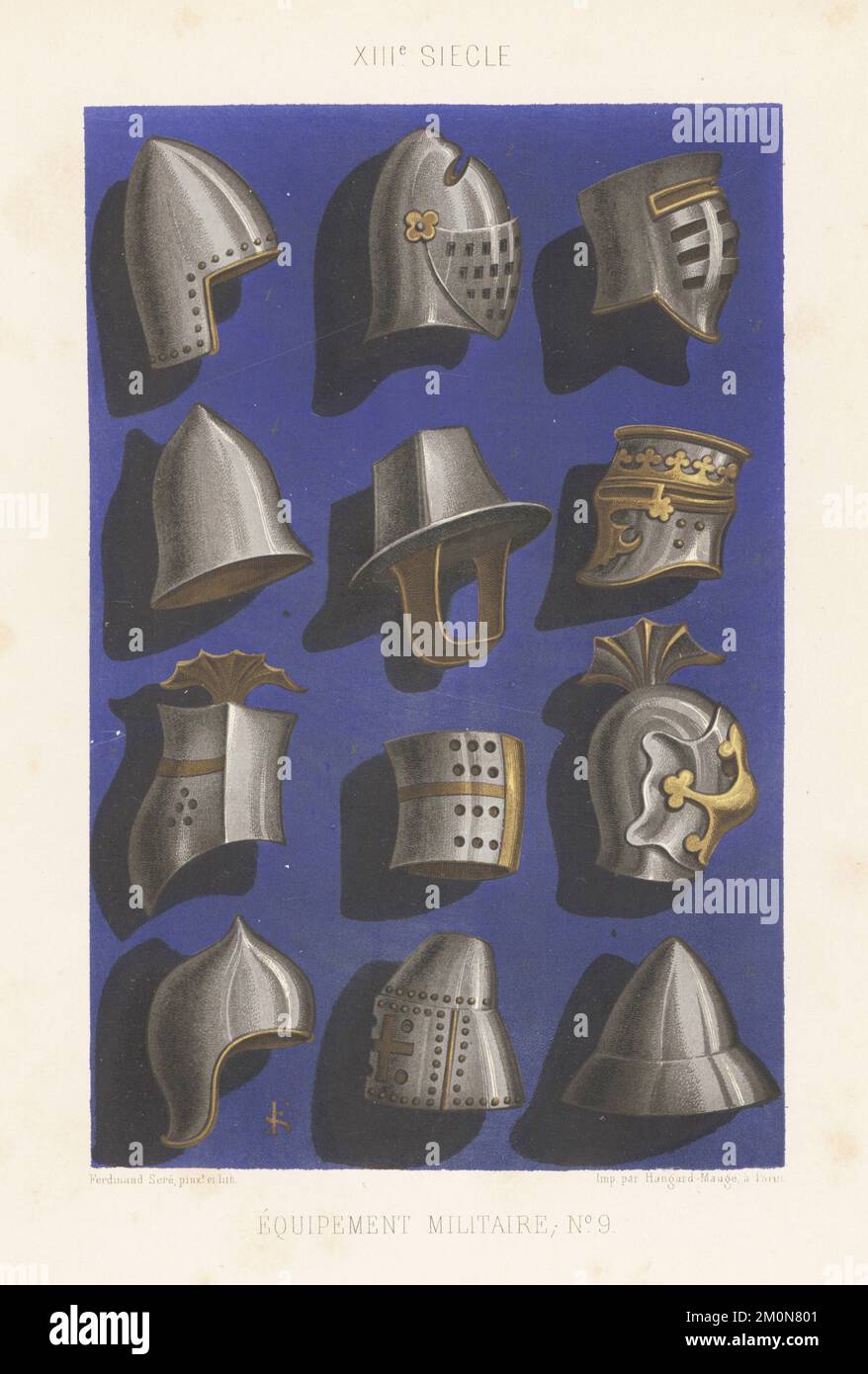 Military equipment, 13th century. Various types of helmets, great helms, bascinets, morions, crested, conical and cylindrical helmets used by soldiers, courtly knights and crusaders. Taken from manuscripts in libraries in Burgundy, Brussels, Paris and London. Equipement militaire, XIIIe siecle. Chromolithograph by Ferdinand Sere from Charles Louandre’s Les Arts Somptuaires, The Sumptuary Arts, Hangard-Mauge, Paris, 1858. Stock Photohttps://www.alamy.com/image-license-details/?v=1https://www.alamy.com/military-equipment-13th-century-various-types-of-helmets-great-helms-bascinets-morions-crested-conical-and-cylindrical-helmets-used-by-soldiers-courtly-knights-and-crusaders-taken-from-manuscripts-in-libraries-in-burgundy-brussels-paris-and-london-equipement-militaire-xiiie-siecle-chromolithograph-by-ferdinand-sere-from-charles-louandres-les-arts-somptuaires-the-sumptuary-arts-hangard-mauge-paris-1858-image499567937.html
Military equipment, 13th century. Various types of helmets, great helms, bascinets, morions, crested, conical and cylindrical helmets used by soldiers, courtly knights and crusaders. Taken from manuscripts in libraries in Burgundy, Brussels, Paris and London. Equipement militaire, XIIIe siecle. Chromolithograph by Ferdinand Sere from Charles Louandre’s Les Arts Somptuaires, The Sumptuary Arts, Hangard-Mauge, Paris, 1858. Stock Photohttps://www.alamy.com/image-license-details/?v=1https://www.alamy.com/military-equipment-13th-century-various-types-of-helmets-great-helms-bascinets-morions-crested-conical-and-cylindrical-helmets-used-by-soldiers-courtly-knights-and-crusaders-taken-from-manuscripts-in-libraries-in-burgundy-brussels-paris-and-london-equipement-militaire-xiiie-siecle-chromolithograph-by-ferdinand-sere-from-charles-louandres-les-arts-somptuaires-the-sumptuary-arts-hangard-mauge-paris-1858-image499567937.htmlRM2M0N801–Military equipment, 13th century. Various types of helmets, great helms, bascinets, morions, crested, conical and cylindrical helmets used by soldiers, courtly knights and crusaders. Taken from manuscripts in libraries in Burgundy, Brussels, Paris and London. Equipement militaire, XIIIe siecle. Chromolithograph by Ferdinand Sere from Charles Louandre’s Les Arts Somptuaires, The Sumptuary Arts, Hangard-Mauge, Paris, 1858.
 CRUSADERS' FORTRESS Stock Photohttps://www.alamy.com/image-license-details/?v=1https://www.alamy.com/stock-photo-crusaders-fortress-56773723.html
CRUSADERS' FORTRESS Stock Photohttps://www.alamy.com/image-license-details/?v=1https://www.alamy.com/stock-photo-crusaders-fortress-56773723.htmlRMD8A7CY–CRUSADERS' FORTRESS
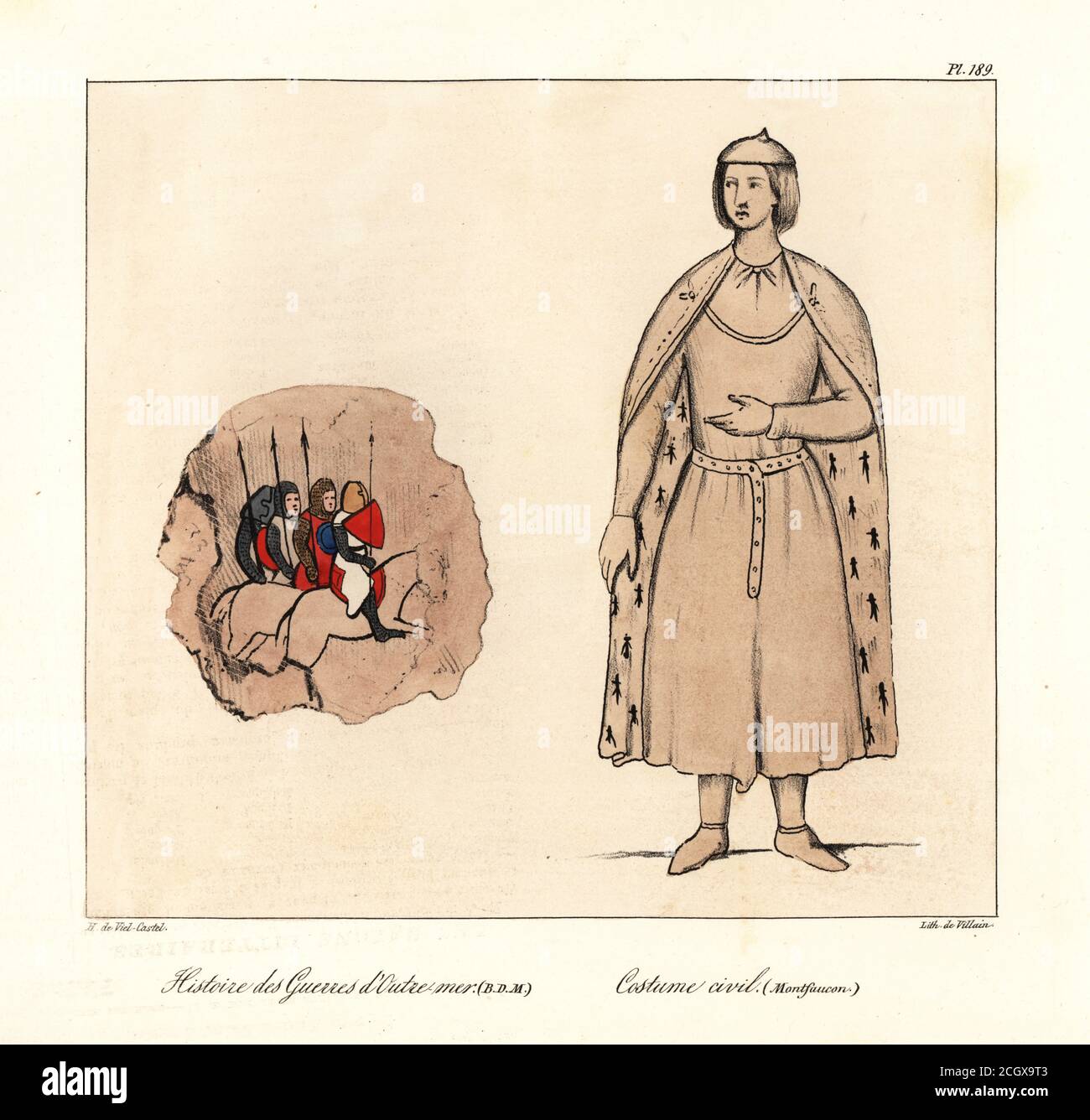 Crusader knights on horseback with lances, and male costume of robe and cloak lined with ermine fur, 13th century. Crusaders taken from Guillaume de Tyr’s manuscrupt History of Foreign Wars. Histoire des Guerres d’Outre-mer, BDM, Costume civil (Montfaucon). Handcoloured lithograph by Villain after an illustration by Horace de Viel-Castel from his Collection des costumes, armes et meubles pour servir à l'histoire de la France (Collection of costumes, weapons and furniture to be used in the history of France), Treuttel & Wurtz, Bossange, 1829. Stock Photohttps://www.alamy.com/image-license-details/?v=1https://www.alamy.com/crusader-knights-on-horseback-with-lances-and-male-costume-of-robe-and-cloak-lined-with-ermine-fur-13th-century-crusaders-taken-from-guillaume-de-tyrs-manuscrupt-history-of-foreign-wars-histoire-des-guerres-doutre-mer-bdm-costume-civil-montfaucon-handcoloured-lithograph-by-villain-after-an-illustration-by-horace-de-viel-castel-from-his-collection-des-costumes-armes-et-meubles-pour-servir-lhistoire-de-la-france-collection-of-costumes-weapons-and-furniture-to-be-used-in-the-history-of-france-treuttel-wurtz-bossange-1829-image371830707.html
Crusader knights on horseback with lances, and male costume of robe and cloak lined with ermine fur, 13th century. Crusaders taken from Guillaume de Tyr’s manuscrupt History of Foreign Wars. Histoire des Guerres d’Outre-mer, BDM, Costume civil (Montfaucon). Handcoloured lithograph by Villain after an illustration by Horace de Viel-Castel from his Collection des costumes, armes et meubles pour servir à l'histoire de la France (Collection of costumes, weapons and furniture to be used in the history of France), Treuttel & Wurtz, Bossange, 1829. Stock Photohttps://www.alamy.com/image-license-details/?v=1https://www.alamy.com/crusader-knights-on-horseback-with-lances-and-male-costume-of-robe-and-cloak-lined-with-ermine-fur-13th-century-crusaders-taken-from-guillaume-de-tyrs-manuscrupt-history-of-foreign-wars-histoire-des-guerres-doutre-mer-bdm-costume-civil-montfaucon-handcoloured-lithograph-by-villain-after-an-illustration-by-horace-de-viel-castel-from-his-collection-des-costumes-armes-et-meubles-pour-servir-lhistoire-de-la-france-collection-of-costumes-weapons-and-furniture-to-be-used-in-the-history-of-france-treuttel-wurtz-bossange-1829-image371830707.htmlRM2CGX9T3–Crusader knights on horseback with lances, and male costume of robe and cloak lined with ermine fur, 13th century. Crusaders taken from Guillaume de Tyr’s manuscrupt History of Foreign Wars. Histoire des Guerres d’Outre-mer, BDM, Costume civil (Montfaucon). Handcoloured lithograph by Villain after an illustration by Horace de Viel-Castel from his Collection des costumes, armes et meubles pour servir à l'histoire de la France (Collection of costumes, weapons and furniture to be used in the history of France), Treuttel & Wurtz, Bossange, 1829.
 12th Century Map of Jerusalem: Knights Templar Crusades Stock Photohttps://www.alamy.com/image-license-details/?v=1https://www.alamy.com/12th-century-map-of-jerusalem-knights-templar-crusades-image425922869.html
12th Century Map of Jerusalem: Knights Templar Crusades Stock Photohttps://www.alamy.com/image-license-details/?v=1https://www.alamy.com/12th-century-map-of-jerusalem-knights-templar-crusades-image425922869.htmlRM2FMXCY1–12th Century Map of Jerusalem: Knights Templar Crusades
 Lebanon, Crusader Sea Castle at Sidon, an early 13th century fortress built by the Crusaders on a small island connected to the mainland by a causeway. Stock Photohttps://www.alamy.com/image-license-details/?v=1https://www.alamy.com/lebanon-crusader-sea-castle-at-sidon-an-early-13th-century-fortress-built-by-the-crusaders-on-a-small-island-connected-to-the-mainland-by-a-causeway-image216190457.html
Lebanon, Crusader Sea Castle at Sidon, an early 13th century fortress built by the Crusaders on a small island connected to the mainland by a causeway. Stock Photohttps://www.alamy.com/image-license-details/?v=1https://www.alamy.com/lebanon-crusader-sea-castle-at-sidon-an-early-13th-century-fortress-built-by-the-crusaders-on-a-small-island-connected-to-the-mainland-by-a-causeway-image216190457.htmlRMPFM93N–Lebanon, Crusader Sea Castle at Sidon, an early 13th century fortress built by the Crusaders on a small island connected to the mainland by a causeway.
 History by Polybius. Volume II. French edition translated from Greek by Dom Vincent Thuillier. Comments of Military Science enriched with critical and historical notes by M. De Folard. Paris, chez Pierre Gandouin, Julien-Michel Gandouin, Pierre-Francois Giffart and Nicolas-Pierre Armand, 1727. Printing by Jean-Baptiste Lamesle. Siege Towers with wheels used by the Holy Roman Emperor Frederick II (1194-1250) during the siege of Jerusalem. The Sixth Crusade. Engraving. Stock Photohttps://www.alamy.com/image-license-details/?v=1https://www.alamy.com/history-by-polybius-volume-ii-french-edition-translated-from-greek-by-dom-vincent-thuillier-comments-of-military-science-enriched-with-critical-and-historical-notes-by-m-de-folard-paris-chez-pierre-gandouin-julien-michel-gandouin-pierre-francois-giffart-and-nicolas-pierre-armand-1727-printing-by-jean-baptiste-lamesle-siege-towers-with-wheels-used-by-the-holy-roman-emperor-frederick-ii-1194-1250-during-the-siege-of-jerusalem-the-sixth-crusade-engraving-image244696287.html
History by Polybius. Volume II. French edition translated from Greek by Dom Vincent Thuillier. Comments of Military Science enriched with critical and historical notes by M. De Folard. Paris, chez Pierre Gandouin, Julien-Michel Gandouin, Pierre-Francois Giffart and Nicolas-Pierre Armand, 1727. Printing by Jean-Baptiste Lamesle. Siege Towers with wheels used by the Holy Roman Emperor Frederick II (1194-1250) during the siege of Jerusalem. The Sixth Crusade. Engraving. Stock Photohttps://www.alamy.com/image-license-details/?v=1https://www.alamy.com/history-by-polybius-volume-ii-french-edition-translated-from-greek-by-dom-vincent-thuillier-comments-of-military-science-enriched-with-critical-and-historical-notes-by-m-de-folard-paris-chez-pierre-gandouin-julien-michel-gandouin-pierre-francois-giffart-and-nicolas-pierre-armand-1727-printing-by-jean-baptiste-lamesle-siege-towers-with-wheels-used-by-the-holy-roman-emperor-frederick-ii-1194-1250-during-the-siege-of-jerusalem-the-sixth-crusade-engraving-image244696287.htmlRMT62TH3–History by Polybius. Volume II. French edition translated from Greek by Dom Vincent Thuillier. Comments of Military Science enriched with critical and historical notes by M. De Folard. Paris, chez Pierre Gandouin, Julien-Michel Gandouin, Pierre-Francois Giffart and Nicolas-Pierre Armand, 1727. Printing by Jean-Baptiste Lamesle. Siege Towers with wheels used by the Holy Roman Emperor Frederick II (1194-1250) during the siege of Jerusalem. The Sixth Crusade. Engraving.
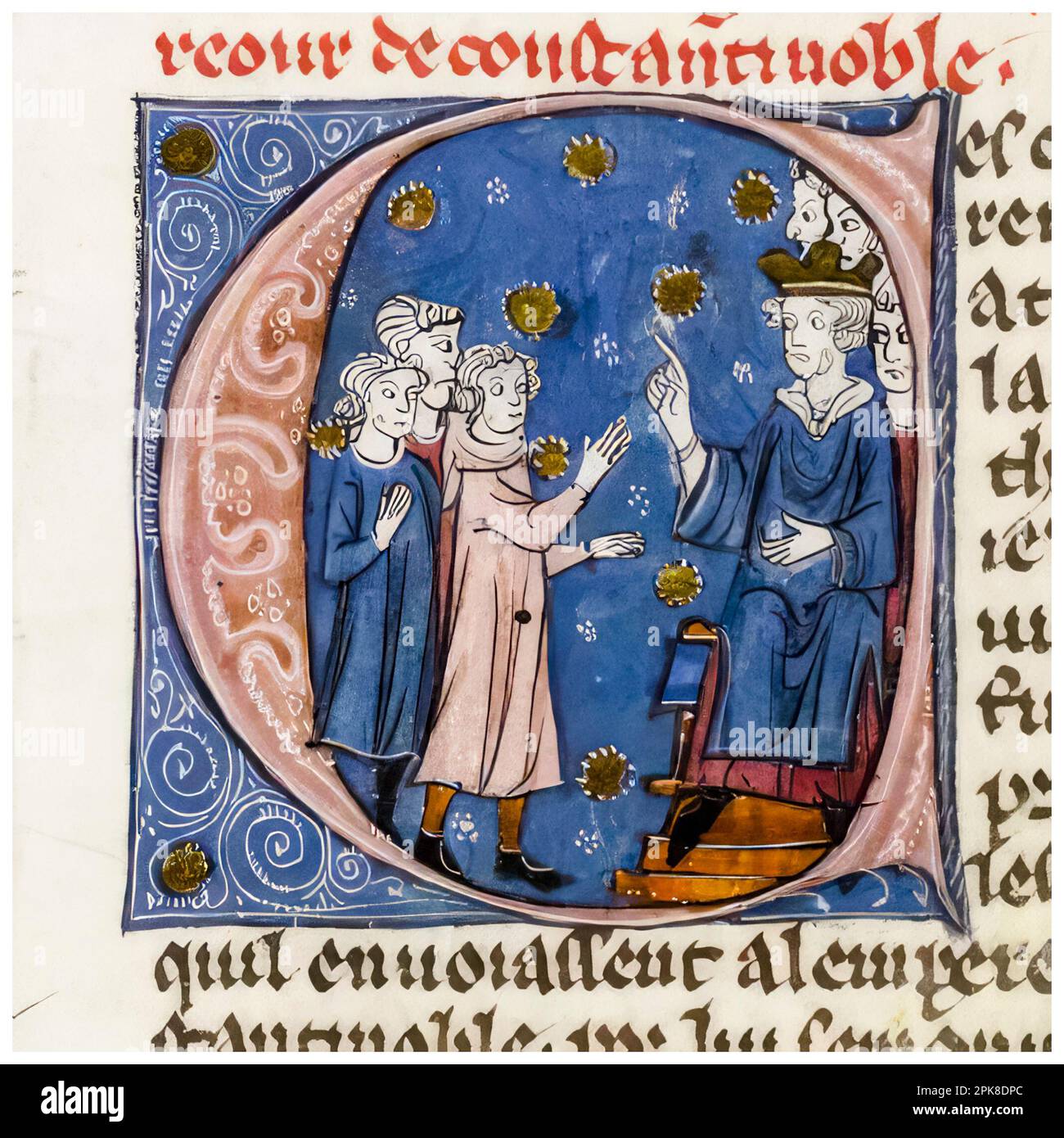 Three Envoys of Crusaders Before the Crowned Emperor of Constantinople, illuminated manuscript painting, circa 1295-1299 Stock Photohttps://www.alamy.com/image-license-details/?v=1https://www.alamy.com/three-envoys-of-crusaders-before-the-crowned-emperor-of-constantinople-illuminated-manuscript-painting-circa-1295-1299-image545386308.html
Three Envoys of Crusaders Before the Crowned Emperor of Constantinople, illuminated manuscript painting, circa 1295-1299 Stock Photohttps://www.alamy.com/image-license-details/?v=1https://www.alamy.com/three-envoys-of-crusaders-before-the-crowned-emperor-of-constantinople-illuminated-manuscript-painting-circa-1295-1299-image545386308.htmlRM2PK8DPC–Three Envoys of Crusaders Before the Crowned Emperor of Constantinople, illuminated manuscript painting, circa 1295-1299
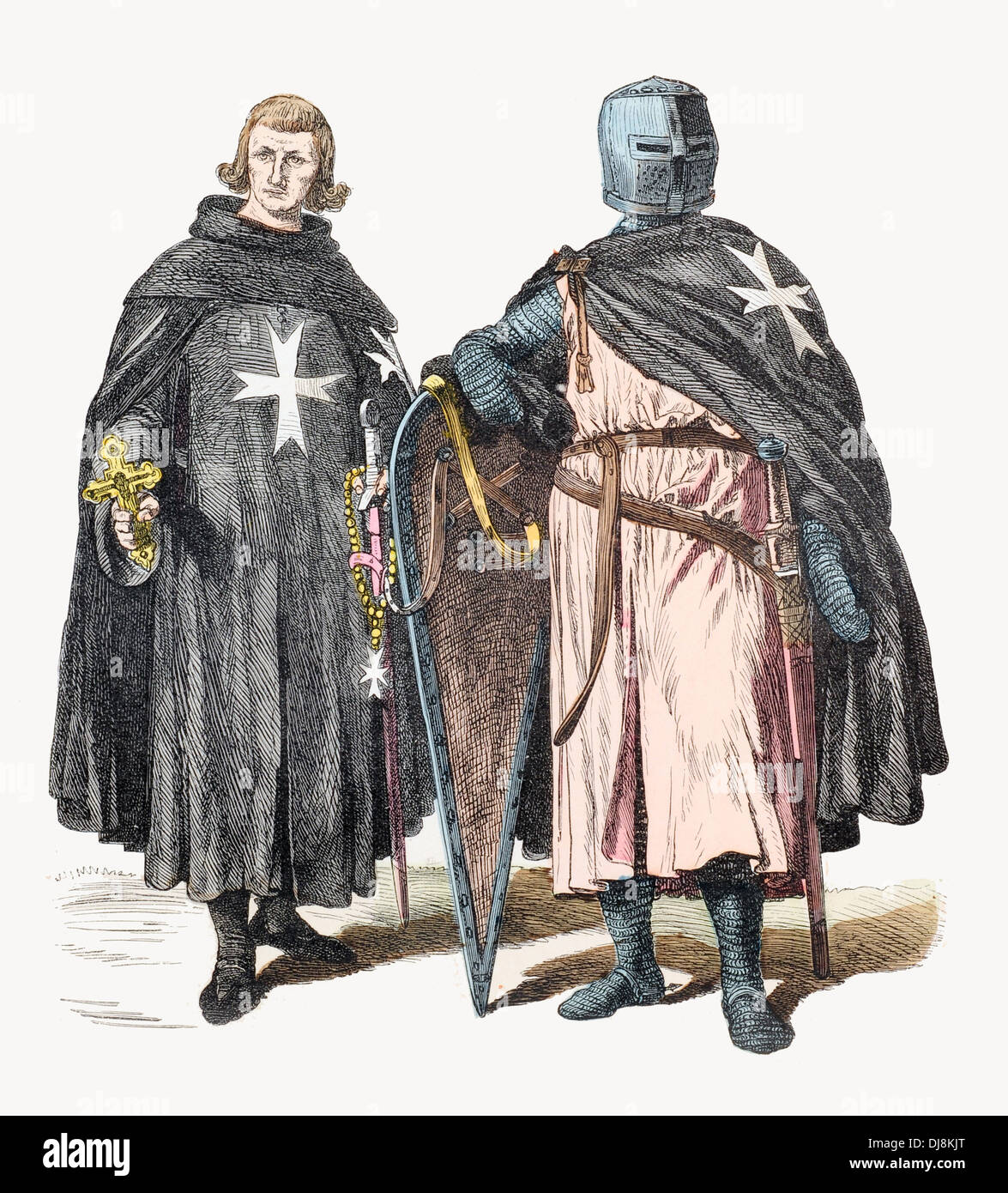 12th XII 13th XIII Century Knights of the Order of St John Hospitaller Stock Photohttps://www.alamy.com/image-license-details/?v=1https://www.alamy.com/12th-xii-13th-xiii-century-knights-of-the-order-of-st-john-hospitaller-image62885952.html
12th XII 13th XIII Century Knights of the Order of St John Hospitaller Stock Photohttps://www.alamy.com/image-license-details/?v=1https://www.alamy.com/12th-xii-13th-xiii-century-knights-of-the-order-of-st-john-hospitaller-image62885952.htmlRFDJ8KJT–12th XII 13th XIII Century Knights of the Order of St John Hospitaller
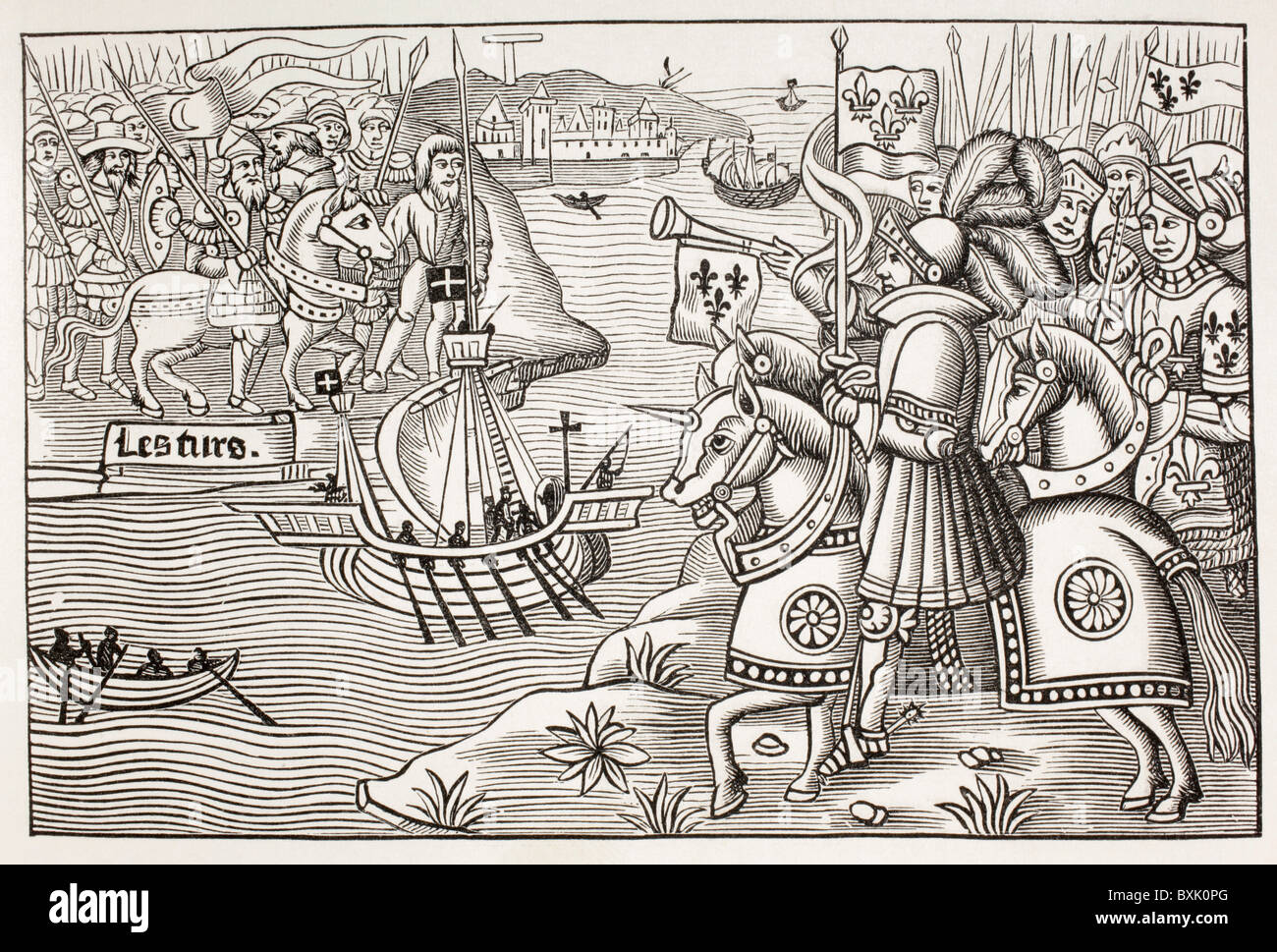 St Louis, King Louis IX of France, disembarks in Carthage in 1270 during the 8th Crusade. Stock Photohttps://www.alamy.com/image-license-details/?v=1https://www.alamy.com/stock-photo-st-louis-king-louis-ix-of-france-disembarks-in-carthage-in-1270-during-33609144.html
St Louis, King Louis IX of France, disembarks in Carthage in 1270 during the 8th Crusade. Stock Photohttps://www.alamy.com/image-license-details/?v=1https://www.alamy.com/stock-photo-st-louis-king-louis-ix-of-france-disembarks-in-carthage-in-1270-during-33609144.htmlRMBXK0PG–St Louis, King Louis IX of France, disembarks in Carthage in 1270 during the 8th Crusade.
 Combat between Crusaders ( Europeans) and Saracens ('Muslims'). Illustration of fighting during the religious wars of the 11th Stock Photohttps://www.alamy.com/image-license-details/?v=1https://www.alamy.com/stock-photo-combat-between-crusaders-europeans-and-saracens-muslims-illustration-83345409.html
Combat between Crusaders ( Europeans) and Saracens ('Muslims'). Illustration of fighting during the religious wars of the 11th Stock Photohttps://www.alamy.com/image-license-details/?v=1https://www.alamy.com/stock-photo-combat-between-crusaders-europeans-and-saracens-muslims-illustration-83345409.htmlRMERGKWN–Combat between Crusaders ( Europeans) and Saracens ('Muslims'). Illustration of fighting during the religious wars of the 11th
 Great Conquest of Overseas. The Crusaders Attacking a Muslim Castle. 13th century. Gothic miniature. Madrid, National Library. Location: BIBLIOTECA NACIONAL-COLECCION, MADRID, SPAIN. Stock Photohttps://www.alamy.com/image-license-details/?v=1https://www.alamy.com/great-conquest-of-overseas-the-crusaders-attacking-a-muslim-castle-13th-century-gothic-miniature-madrid-national-library-location-biblioteca-nacional-coleccion-madrid-spain-image208320100.html
Great Conquest of Overseas. The Crusaders Attacking a Muslim Castle. 13th century. Gothic miniature. Madrid, National Library. Location: BIBLIOTECA NACIONAL-COLECCION, MADRID, SPAIN. Stock Photohttps://www.alamy.com/image-license-details/?v=1https://www.alamy.com/great-conquest-of-overseas-the-crusaders-attacking-a-muslim-castle-13th-century-gothic-miniature-madrid-national-library-location-biblioteca-nacional-coleccion-madrid-spain-image208320100.htmlRMP2WPBG–Great Conquest of Overseas. The Crusaders Attacking a Muslim Castle. 13th century. Gothic miniature. Madrid, National Library. Location: BIBLIOTECA NACIONAL-COLECCION, MADRID, SPAIN.
 A 19th century British engraving of Beziers Cathedral / Béziers Cathedral /: Cathédrale Saint-Nazaire-et-Saint-Celse de Béziers. The medieval church was built on the site of another which had been destroyed during the Massacre at Béziers in the Albigensian Crusade aka Cathar Crusade, Croisade des albigeois or Crosada dels albigeses. Stock Photohttps://www.alamy.com/image-license-details/?v=1https://www.alamy.com/a-19th-century-british-engraving-of-beziers-cathedral-bziers-cathedral-cathdrale-saint-nazaire-et-saint-celse-de-bziers-the-medieval-church-was-built-on-the-site-of-another-which-had-been-destroyed-during-the-massacre-at-bziers-in-the-albigensian-crusade-aka-cathar-crusade-croisade-des-albigeois-or-crosada-dels-albigeses-image467571303.html
A 19th century British engraving of Beziers Cathedral / Béziers Cathedral /: Cathédrale Saint-Nazaire-et-Saint-Celse de Béziers. The medieval church was built on the site of another which had been destroyed during the Massacre at Béziers in the Albigensian Crusade aka Cathar Crusade, Croisade des albigeois or Crosada dels albigeses. Stock Photohttps://www.alamy.com/image-license-details/?v=1https://www.alamy.com/a-19th-century-british-engraving-of-beziers-cathedral-bziers-cathedral-cathdrale-saint-nazaire-et-saint-celse-de-bziers-the-medieval-church-was-built-on-the-site-of-another-which-had-been-destroyed-during-the-massacre-at-bziers-in-the-albigensian-crusade-aka-cathar-crusade-croisade-des-albigeois-or-crosada-dels-albigeses-image467571303.htmlRM2J4KKY3–A 19th century British engraving of Beziers Cathedral / Béziers Cathedral /: Cathédrale Saint-Nazaire-et-Saint-Celse de Béziers. The medieval church was built on the site of another which had been destroyed during the Massacre at Béziers in the Albigensian Crusade aka Cathar Crusade, Croisade des albigeois or Crosada dels albigeses.
RMDY85B2–Departure of crusaders for Palestine. Iconographic Enclyclopaedia of science, Literature and Art. 19th century
 The Children’s Crusade of 1212 AD. After a 19th century engraving by an anonymous artist. Stock Photohttps://www.alamy.com/image-license-details/?v=1https://www.alamy.com/the-childrens-crusade-of-1212-ad-after-a-19th-century-engraving-by-an-anonymous-artist-image362301908.html
The Children’s Crusade of 1212 AD. After a 19th century engraving by an anonymous artist. Stock Photohttps://www.alamy.com/image-license-details/?v=1https://www.alamy.com/the-childrens-crusade-of-1212-ad-after-a-19th-century-engraving-by-an-anonymous-artist-image362301908.htmlRM2C1C7NT–The Children’s Crusade of 1212 AD. After a 19th century engraving by an anonymous artist.
 The Crusaders. Religion wars 11th.16th century. Priest exhorting the Crusaders. Engraving by Gustave Dore, 19th century. Stock Photohttps://www.alamy.com/image-license-details/?v=1https://www.alamy.com/stock-photo-the-crusaders-religion-wars-11th16th-century-priest-exhorting-the-122585283.html
The Crusaders. Religion wars 11th.16th century. Priest exhorting the Crusaders. Engraving by Gustave Dore, 19th century. Stock Photohttps://www.alamy.com/image-license-details/?v=1https://www.alamy.com/stock-photo-the-crusaders-religion-wars-11th16th-century-priest-exhorting-the-122585283.htmlRMH3C6NR–The Crusaders. Religion wars 11th.16th century. Priest exhorting the Crusaders. Engraving by Gustave Dore, 19th century.
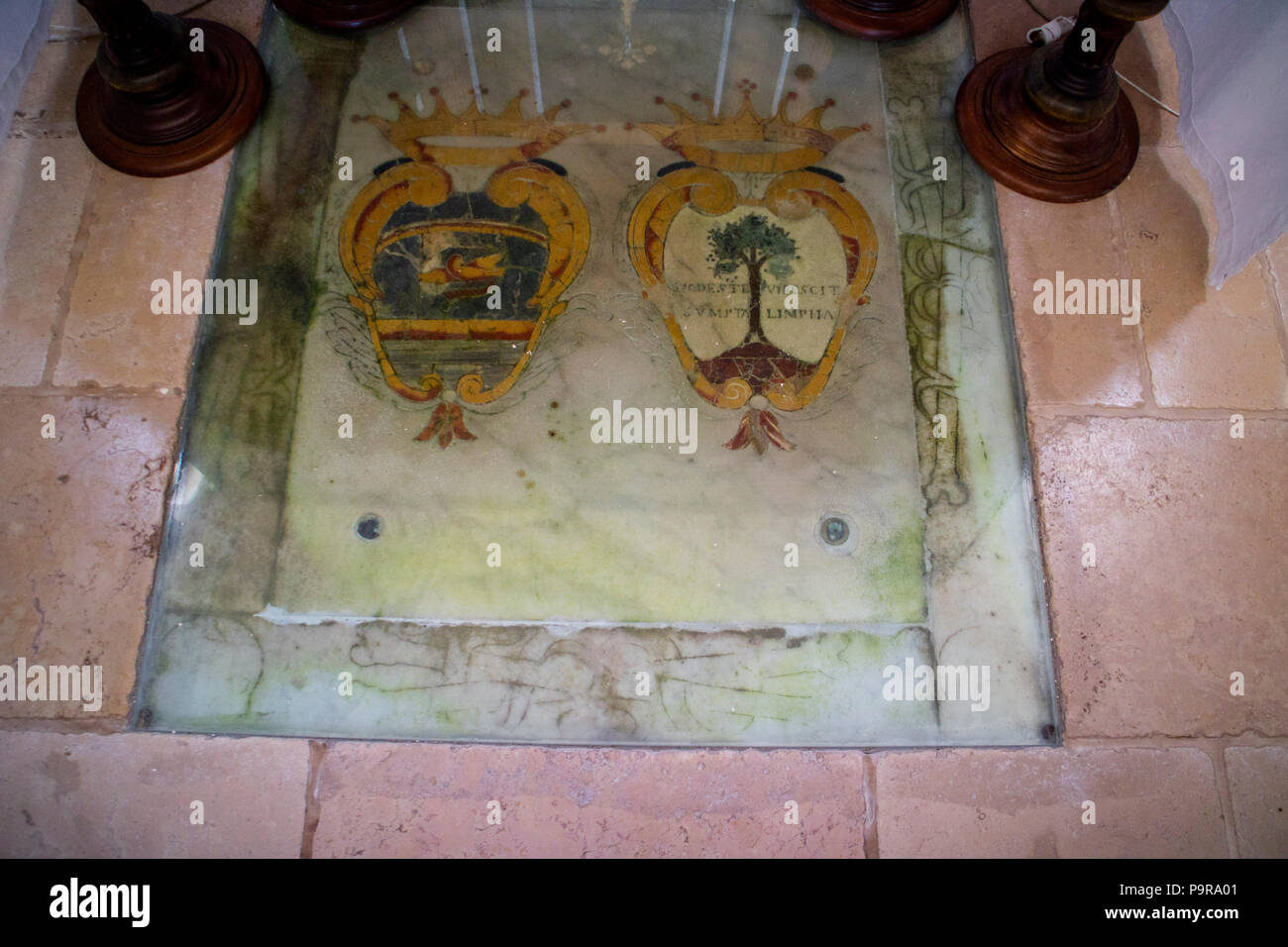 Gallipoli Italy Stock Photohttps://www.alamy.com/image-license-details/?v=1https://www.alamy.com/gallipoli-italy-image212569057.html
Gallipoli Italy Stock Photohttps://www.alamy.com/image-license-details/?v=1https://www.alamy.com/gallipoli-italy-image212569057.htmlRFP9RA01–Gallipoli Italy
 13th century monument to the crusader Walter de Dunstanville in the church of St Andrew, Castle Combe, Cotswolds, Wiltshire, England, Great Britain, Europe Stock Photohttps://www.alamy.com/image-license-details/?v=1https://www.alamy.com/13th-century-monument-to-the-crusader-walter-de-dunstanville-in-the-church-of-st-andrew-castle-combe-cotswolds-wiltshire-england-great-britain-europe-image599160556.html
13th century monument to the crusader Walter de Dunstanville in the church of St Andrew, Castle Combe, Cotswolds, Wiltshire, England, Great Britain, Europe Stock Photohttps://www.alamy.com/image-license-details/?v=1https://www.alamy.com/13th-century-monument-to-the-crusader-walter-de-dunstanville-in-the-church-of-st-andrew-castle-combe-cotswolds-wiltshire-england-great-britain-europe-image599160556.htmlRM2WPP3B8–13th century monument to the crusader Walter de Dunstanville in the church of St Andrew, Castle Combe, Cotswolds, Wiltshire, England, Great Britain, Europe
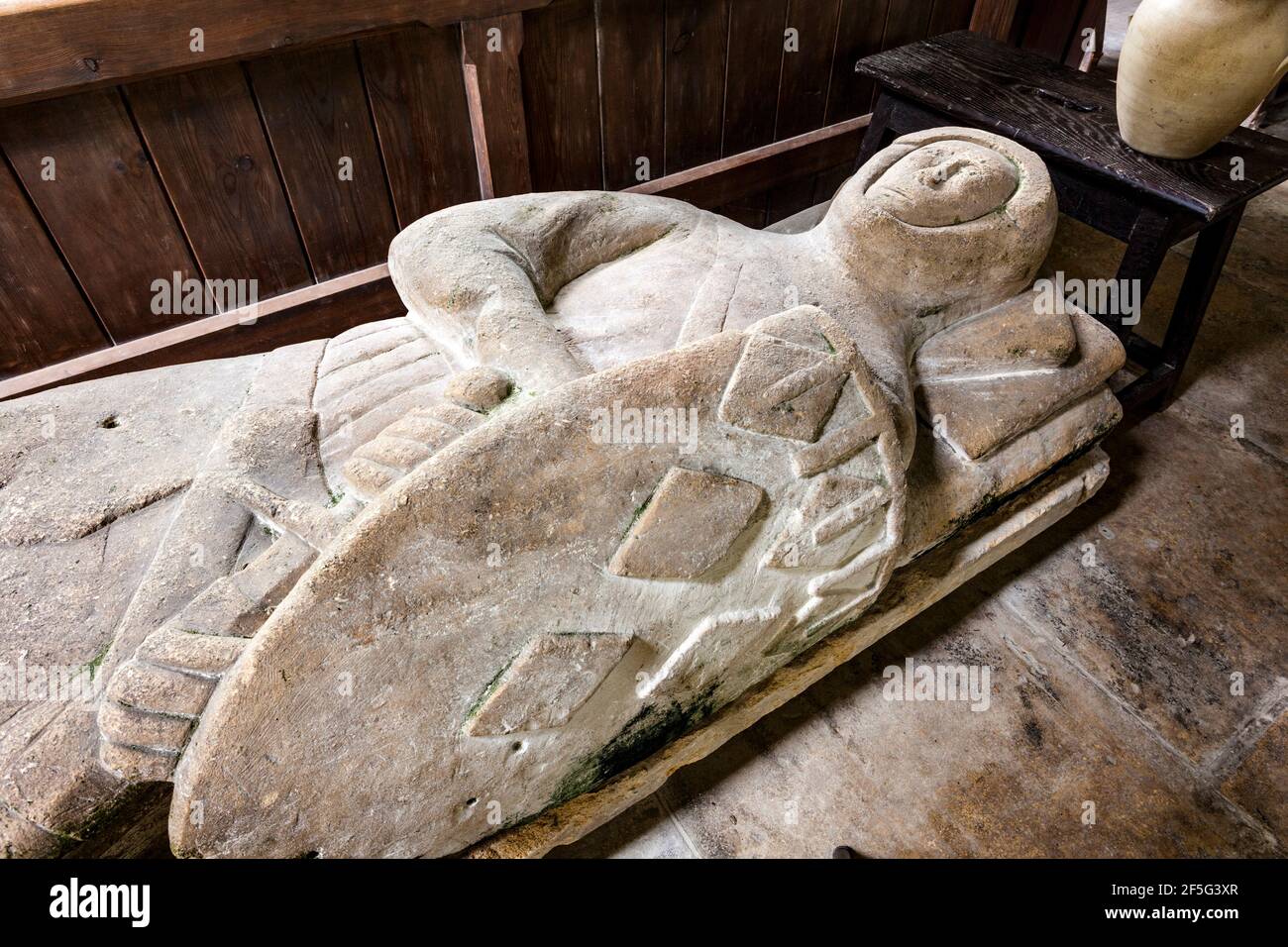 The tomb of the Crusader knight Richard de Crupes in the church in the Cotswold village of Whittington, Gloucestershire UK Stock Photohttps://www.alamy.com/image-license-details/?v=1https://www.alamy.com/the-tomb-of-the-crusader-knight-richard-de-crupes-in-the-church-in-the-cotswold-village-of-whittington-gloucestershire-uk-image416476447.html
The tomb of the Crusader knight Richard de Crupes in the church in the Cotswold village of Whittington, Gloucestershire UK Stock Photohttps://www.alamy.com/image-license-details/?v=1https://www.alamy.com/the-tomb-of-the-crusader-knight-richard-de-crupes-in-the-church-in-the-cotswold-village-of-whittington-gloucestershire-uk-image416476447.htmlRM2F5G3XR–The tomb of the Crusader knight Richard de Crupes in the church in the Cotswold village of Whittington, Gloucestershire UK
 . English: Crusaders bombard Nicaea with heads in 1097. Literature: David Nicolle, Medieval Siege Weapons (1): Western Europe AD 585-1385, Osprey Publishing, 2002, p. 21. Deutsch: Belagerung von Nikäa. Kreuzfahrer schleudern die Köpfe getöteter Feinde in die Stadt. Miniatur aus dem 13. Jahrhundert . 13th century. anonymous master (French school) 127 CrusadersThrowingHeadsOfMuslimsOverRamparts Stock Photohttps://www.alamy.com/image-license-details/?v=1https://www.alamy.com/english-crusaders-bombard-nicaea-with-heads-in-1097-literature-david-nicolle-medieval-siege-weapons-1-western-europe-ad-585-1385-osprey-publishing-2002-p-21-deutsch-belagerung-von-nika-kreuzfahrer-schleudern-die-kpfe-getteter-feinde-in-die-stadt-miniatur-aus-dem-13-jahrhundert-13th-century-anonymous-master-french-school-127-crusadersthrowingheadsofmuslimsoverramparts-image189120267.html
. English: Crusaders bombard Nicaea with heads in 1097. Literature: David Nicolle, Medieval Siege Weapons (1): Western Europe AD 585-1385, Osprey Publishing, 2002, p. 21. Deutsch: Belagerung von Nikäa. Kreuzfahrer schleudern die Köpfe getöteter Feinde in die Stadt. Miniatur aus dem 13. Jahrhundert . 13th century. anonymous master (French school) 127 CrusadersThrowingHeadsOfMuslimsOverRamparts Stock Photohttps://www.alamy.com/image-license-details/?v=1https://www.alamy.com/english-crusaders-bombard-nicaea-with-heads-in-1097-literature-david-nicolle-medieval-siege-weapons-1-western-europe-ad-585-1385-osprey-publishing-2002-p-21-deutsch-belagerung-von-nika-kreuzfahrer-schleudern-die-kpfe-getteter-feinde-in-die-stadt-miniatur-aus-dem-13-jahrhundert-13th-century-anonymous-master-french-school-127-crusadersthrowingheadsofmuslimsoverramparts-image189120267.htmlRMMYK4R7–. English: Crusaders bombard Nicaea with heads in 1097. Literature: David Nicolle, Medieval Siege Weapons (1): Western Europe AD 585-1385, Osprey Publishing, 2002, p. 21. Deutsch: Belagerung von Nikäa. Kreuzfahrer schleudern die Köpfe getöteter Feinde in die Stadt. Miniatur aus dem 13. Jahrhundert . 13th century. anonymous master (French school) 127 CrusadersThrowingHeadsOfMuslimsOverRamparts
 Crusaders landing at Damietta, Egypt, in 1249 during the Seventh Crusade. Stock Photohttps://www.alamy.com/image-license-details/?v=1https://www.alamy.com/stock-photo-crusaders-landing-at-damietta-egypt-in-1249-during-the-seventh-crusade-33608923.html
Crusaders landing at Damietta, Egypt, in 1249 during the Seventh Crusade. Stock Photohttps://www.alamy.com/image-license-details/?v=1https://www.alamy.com/stock-photo-crusaders-landing-at-damietta-egypt-in-1249-during-the-seventh-crusade-33608923.htmlRMBXK0EK–Crusaders landing at Damietta, Egypt, in 1249 during the Seventh Crusade.
 The fleet of the crusaders in front of Constantinople during the Fourth Crusade in 1203, Riva river, Turkey Stock Photohttps://www.alamy.com/image-license-details/?v=1https://www.alamy.com/the-fleet-of-the-crusaders-in-front-of-constantinople-during-the-fourth-image156676369.html
The fleet of the crusaders in front of Constantinople during the Fourth Crusade in 1203, Riva river, Turkey Stock Photohttps://www.alamy.com/image-license-details/?v=1https://www.alamy.com/the-fleet-of-the-crusaders-in-front-of-constantinople-during-the-fourth-image156676369.htmlRMK2W68H–The fleet of the crusaders in front of Constantinople during the Fourth Crusade in 1203, Riva river, Turkey
 The storming of Constantinople by Venetians and crusaders during the Fourth Crusade in 1204. The Venetians carried the low sea-wall by running gangway bridges onto it from the mastheads of galleys coupled together. From Hutchinson's History of the Nations, published 1915. Stock Photohttps://www.alamy.com/image-license-details/?v=1https://www.alamy.com/stock-photo-the-storming-of-constantinople-by-venetians-and-crusaders-during-the-172814761.html
The storming of Constantinople by Venetians and crusaders during the Fourth Crusade in 1204. The Venetians carried the low sea-wall by running gangway bridges onto it from the mastheads of galleys coupled together. From Hutchinson's History of the Nations, published 1915. Stock Photohttps://www.alamy.com/image-license-details/?v=1https://www.alamy.com/stock-photo-the-storming-of-constantinople-by-venetians-and-crusaders-during-the-172814761.htmlRMM14AYN–The storming of Constantinople by Venetians and crusaders during the Fourth Crusade in 1204. The Venetians carried the low sea-wall by running gangway bridges onto it from the mastheads of galleys coupled together. From Hutchinson's History of the Nations, published 1915.
 The sack of Constantinople by crusaders and Venetians during the Fourth Crusade in 1204. A strong north wind helped the Venetian ships near the Golden Horn to come close to the city wall, this enabled the attackers to seize some of the towers along the wall, they carried the low sea-wall by running gangway bridges onto it from the mastheads of galleys coupled together. Stock Photohttps://www.alamy.com/image-license-details/?v=1https://www.alamy.com/the-sack-of-constantinople-by-crusaders-and-venetians-during-the-fourth-crusade-in-1204-a-strong-north-wind-helped-the-venetian-ships-near-the-golden-horn-to-come-close-to-the-city-wall-this-enabled-the-attackers-to-seize-some-of-the-towers-along-the-wall-they-carried-the-low-sea-wall-by-running-gangway-bridges-onto-it-from-the-mastheads-of-galleys-coupled-together-image435919974.html
The sack of Constantinople by crusaders and Venetians during the Fourth Crusade in 1204. A strong north wind helped the Venetian ships near the Golden Horn to come close to the city wall, this enabled the attackers to seize some of the towers along the wall, they carried the low sea-wall by running gangway bridges onto it from the mastheads of galleys coupled together. Stock Photohttps://www.alamy.com/image-license-details/?v=1https://www.alamy.com/the-sack-of-constantinople-by-crusaders-and-venetians-during-the-fourth-crusade-in-1204-a-strong-north-wind-helped-the-venetian-ships-near-the-golden-horn-to-come-close-to-the-city-wall-this-enabled-the-attackers-to-seize-some-of-the-towers-along-the-wall-they-carried-the-low-sea-wall-by-running-gangway-bridges-onto-it-from-the-mastheads-of-galleys-coupled-together-image435919974.htmlRM2G95TAE–The sack of Constantinople by crusaders and Venetians during the Fourth Crusade in 1204. A strong north wind helped the Venetian ships near the Golden Horn to come close to the city wall, this enabled the attackers to seize some of the towers along the wall, they carried the low sea-wall by running gangway bridges onto it from the mastheads of galleys coupled together.
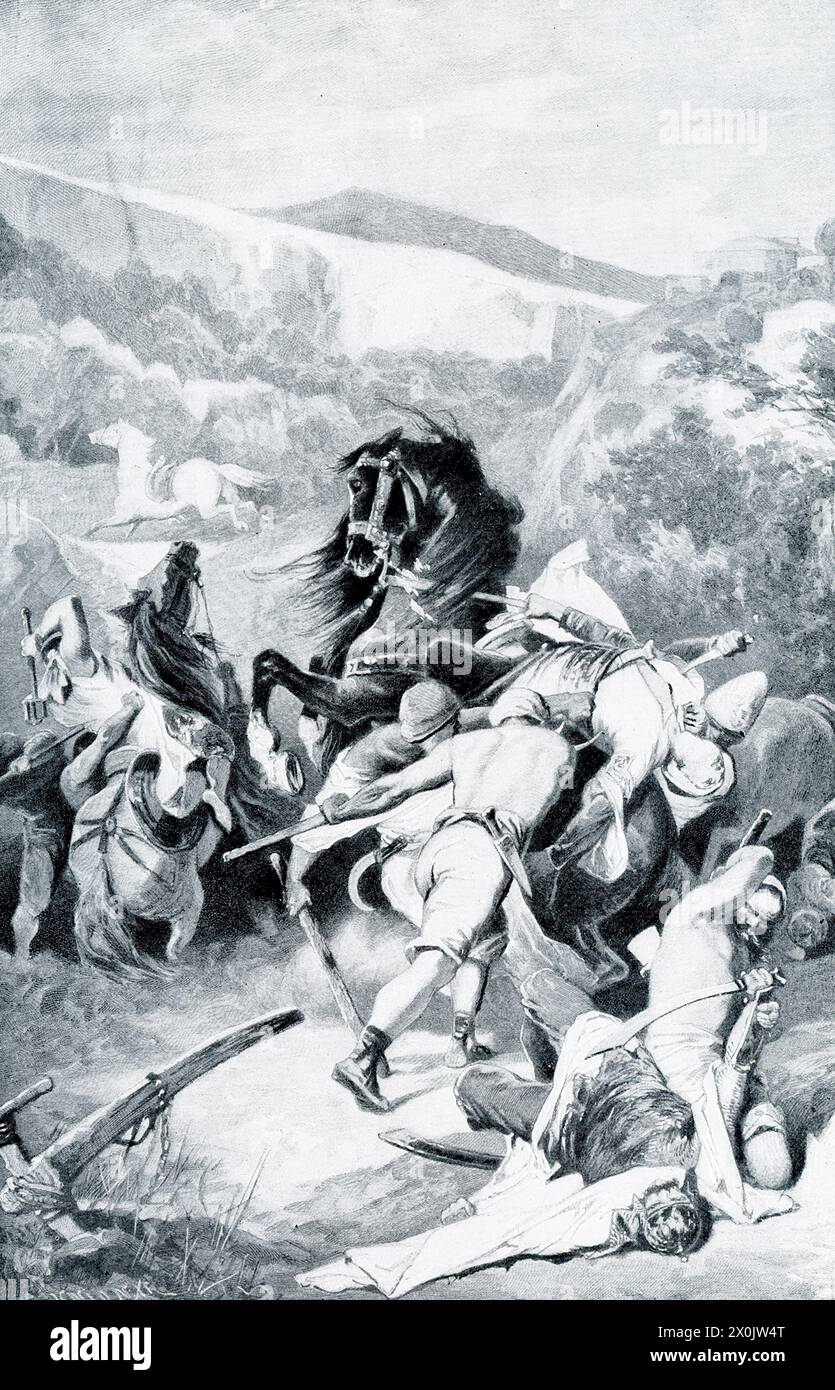 The early 1900s caption reads: “ASSASSINATION OF THE SULTAN OF EGYPT.—When Louis IX of France, the crusading St. Louis, was a prisoner in Egypt, the Sultan there became so friendly toward him that the Mahometans suspected their chiefs, and finally broke into rebellion and slew the Sultan, despite his attempted flight. The imprisoned crusaders saw the murder from a distance, and for a time it looked as though all of them would be massacred. Only the huge ransoms they had promised to pay, saved them.” Louis IX, commonly revered as Saint Louis, was King of France from 1226 until his death in 1270 Stock Photohttps://www.alamy.com/image-license-details/?v=1https://www.alamy.com/the-early-1900s-caption-reads-assassination-of-the-sultan-of-egyptwhen-louis-ix-of-france-the-crusading-st-louis-was-a-prisoner-in-egypt-the-sultan-there-became-so-friendly-toward-him-that-the-mahometans-suspected-their-chiefs-and-finally-broke-into-rebellion-and-slew-the-sultan-despite-his-attempted-flight-the-imprisoned-crusaders-saw-the-murder-from-a-distance-and-for-a-time-it-looked-as-though-all-of-them-would-be-massacred-only-the-huge-ransoms-they-had-promised-to-pay-saved-them-louis-ix-commonly-revered-as-saint-louis-was-king-of-france-from-1226-until-his-death-in-1270-image602777752.html
The early 1900s caption reads: “ASSASSINATION OF THE SULTAN OF EGYPT.—When Louis IX of France, the crusading St. Louis, was a prisoner in Egypt, the Sultan there became so friendly toward him that the Mahometans suspected their chiefs, and finally broke into rebellion and slew the Sultan, despite his attempted flight. The imprisoned crusaders saw the murder from a distance, and for a time it looked as though all of them would be massacred. Only the huge ransoms they had promised to pay, saved them.” Louis IX, commonly revered as Saint Louis, was King of France from 1226 until his death in 1270 Stock Photohttps://www.alamy.com/image-license-details/?v=1https://www.alamy.com/the-early-1900s-caption-reads-assassination-of-the-sultan-of-egyptwhen-louis-ix-of-france-the-crusading-st-louis-was-a-prisoner-in-egypt-the-sultan-there-became-so-friendly-toward-him-that-the-mahometans-suspected-their-chiefs-and-finally-broke-into-rebellion-and-slew-the-sultan-despite-his-attempted-flight-the-imprisoned-crusaders-saw-the-murder-from-a-distance-and-for-a-time-it-looked-as-though-all-of-them-would-be-massacred-only-the-huge-ransoms-they-had-promised-to-pay-saved-them-louis-ix-commonly-revered-as-saint-louis-was-king-of-france-from-1226-until-his-death-in-1270-image602777752.htmlRF2X0JW4T–The early 1900s caption reads: “ASSASSINATION OF THE SULTAN OF EGYPT.—When Louis IX of France, the crusading St. Louis, was a prisoner in Egypt, the Sultan there became so friendly toward him that the Mahometans suspected their chiefs, and finally broke into rebellion and slew the Sultan, despite his attempted flight. The imprisoned crusaders saw the murder from a distance, and for a time it looked as though all of them would be massacred. Only the huge ransoms they had promised to pay, saved them.” Louis IX, commonly revered as Saint Louis, was King of France from 1226 until his death in 1270
 History by Polybius. Volume II. French edition translated from Greek by Dom Vincent Thuillier. Comments of Military Science enriched with critical and historical notes by M. De Folard. Paris, chez Pierre Gandouin, Julien-Michel Gandouin, Pierre-Francois Giffart and Nicolas-Pierre Armand, 1727. Printing by Jean-Baptiste Lamesle. Siege Towers with wheels used by the Holy Roman Emperor Frederick II (1194-1250) during the siege of Jerusalem. The Sixth Crusade. Engraving. Stock Photohttps://www.alamy.com/image-license-details/?v=1https://www.alamy.com/history-by-polybius-volume-ii-french-edition-translated-from-greek-by-dom-vincent-thuillier-comments-of-military-science-enriched-with-critical-and-historical-notes-by-m-de-folard-paris-chez-pierre-gandouin-julien-michel-gandouin-pierre-francois-giffart-and-nicolas-pierre-armand-1727-printing-by-jean-baptiste-lamesle-siege-towers-with-wheels-used-by-the-holy-roman-emperor-frederick-ii-1194-1250-during-the-siege-of-jerusalem-the-sixth-crusade-engraving-image244696294.html
History by Polybius. Volume II. French edition translated from Greek by Dom Vincent Thuillier. Comments of Military Science enriched with critical and historical notes by M. De Folard. Paris, chez Pierre Gandouin, Julien-Michel Gandouin, Pierre-Francois Giffart and Nicolas-Pierre Armand, 1727. Printing by Jean-Baptiste Lamesle. Siege Towers with wheels used by the Holy Roman Emperor Frederick II (1194-1250) during the siege of Jerusalem. The Sixth Crusade. Engraving. Stock Photohttps://www.alamy.com/image-license-details/?v=1https://www.alamy.com/history-by-polybius-volume-ii-french-edition-translated-from-greek-by-dom-vincent-thuillier-comments-of-military-science-enriched-with-critical-and-historical-notes-by-m-de-folard-paris-chez-pierre-gandouin-julien-michel-gandouin-pierre-francois-giffart-and-nicolas-pierre-armand-1727-printing-by-jean-baptiste-lamesle-siege-towers-with-wheels-used-by-the-holy-roman-emperor-frederick-ii-1194-1250-during-the-siege-of-jerusalem-the-sixth-crusade-engraving-image244696294.htmlRMT62THA–History by Polybius. Volume II. French edition translated from Greek by Dom Vincent Thuillier. Comments of Military Science enriched with critical and historical notes by M. De Folard. Paris, chez Pierre Gandouin, Julien-Michel Gandouin, Pierre-Francois Giffart and Nicolas-Pierre Armand, 1727. Printing by Jean-Baptiste Lamesle. Siege Towers with wheels used by the Holy Roman Emperor Frederick II (1194-1250) during the siege of Jerusalem. The Sixth Crusade. Engraving.
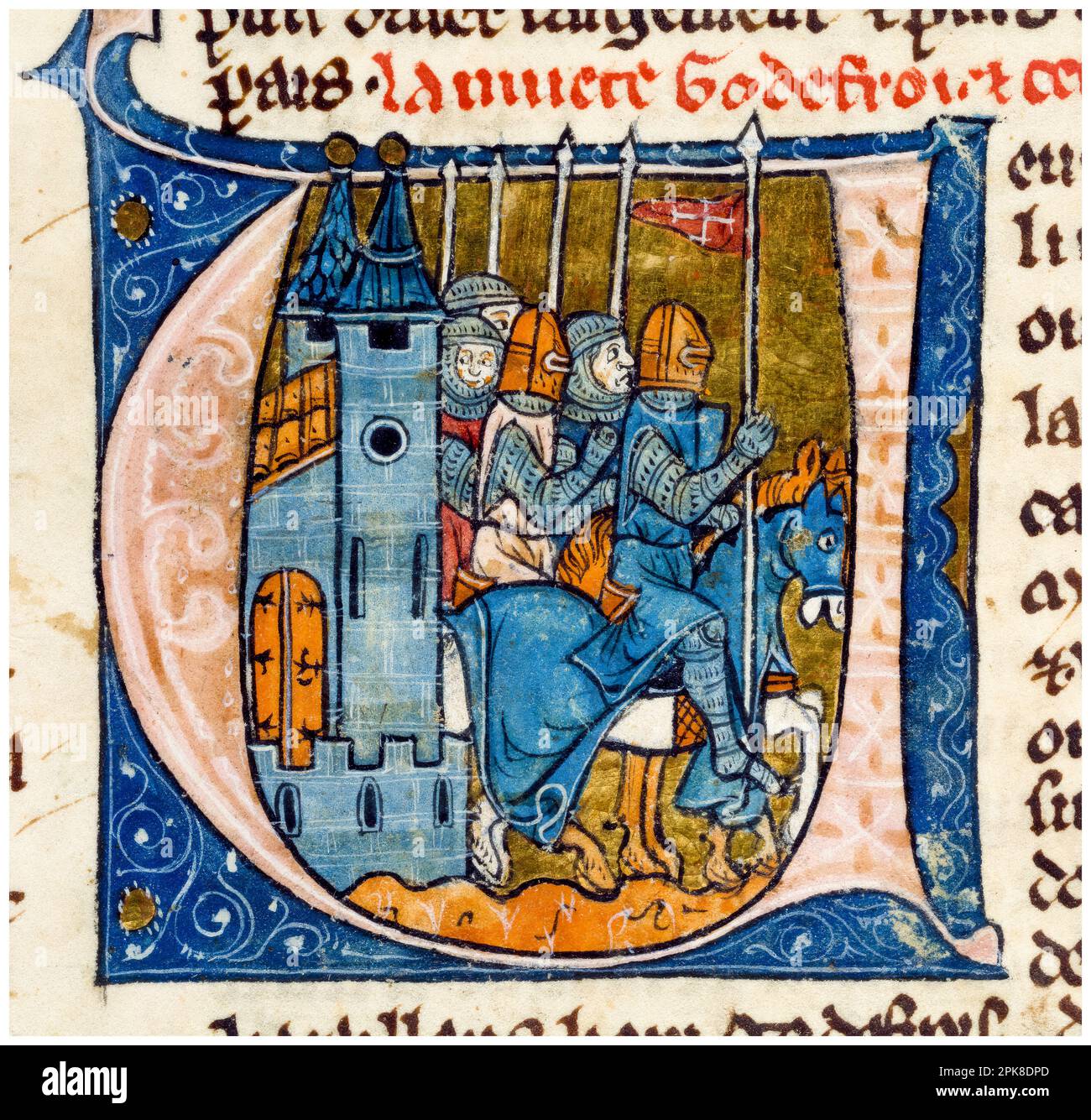 Godfrey of Bouillon (Godefroy de Bouillon, 1060-1100), Leader of the First Crusade and First ruler of the Kingdom of Jerusalem (1099-1100) with four Knights (Crusaders), illuminated manuscript painting, circa 1295-1299 Stock Photohttps://www.alamy.com/image-license-details/?v=1https://www.alamy.com/godfrey-of-bouillon-godefroy-de-bouillon-1060-1100-leader-of-the-first-crusade-and-first-ruler-of-the-kingdom-of-jerusalem-1099-1100-with-four-knights-crusaders-illuminated-manuscript-painting-circa-1295-1299-image545386309.html
Godfrey of Bouillon (Godefroy de Bouillon, 1060-1100), Leader of the First Crusade and First ruler of the Kingdom of Jerusalem (1099-1100) with four Knights (Crusaders), illuminated manuscript painting, circa 1295-1299 Stock Photohttps://www.alamy.com/image-license-details/?v=1https://www.alamy.com/godfrey-of-bouillon-godefroy-de-bouillon-1060-1100-leader-of-the-first-crusade-and-first-ruler-of-the-kingdom-of-jerusalem-1099-1100-with-four-knights-crusaders-illuminated-manuscript-painting-circa-1295-1299-image545386309.htmlRM2PK8DPD–Godfrey of Bouillon (Godefroy de Bouillon, 1060-1100), Leader of the First Crusade and First ruler of the Kingdom of Jerusalem (1099-1100) with four Knights (Crusaders), illuminated manuscript painting, circa 1295-1299
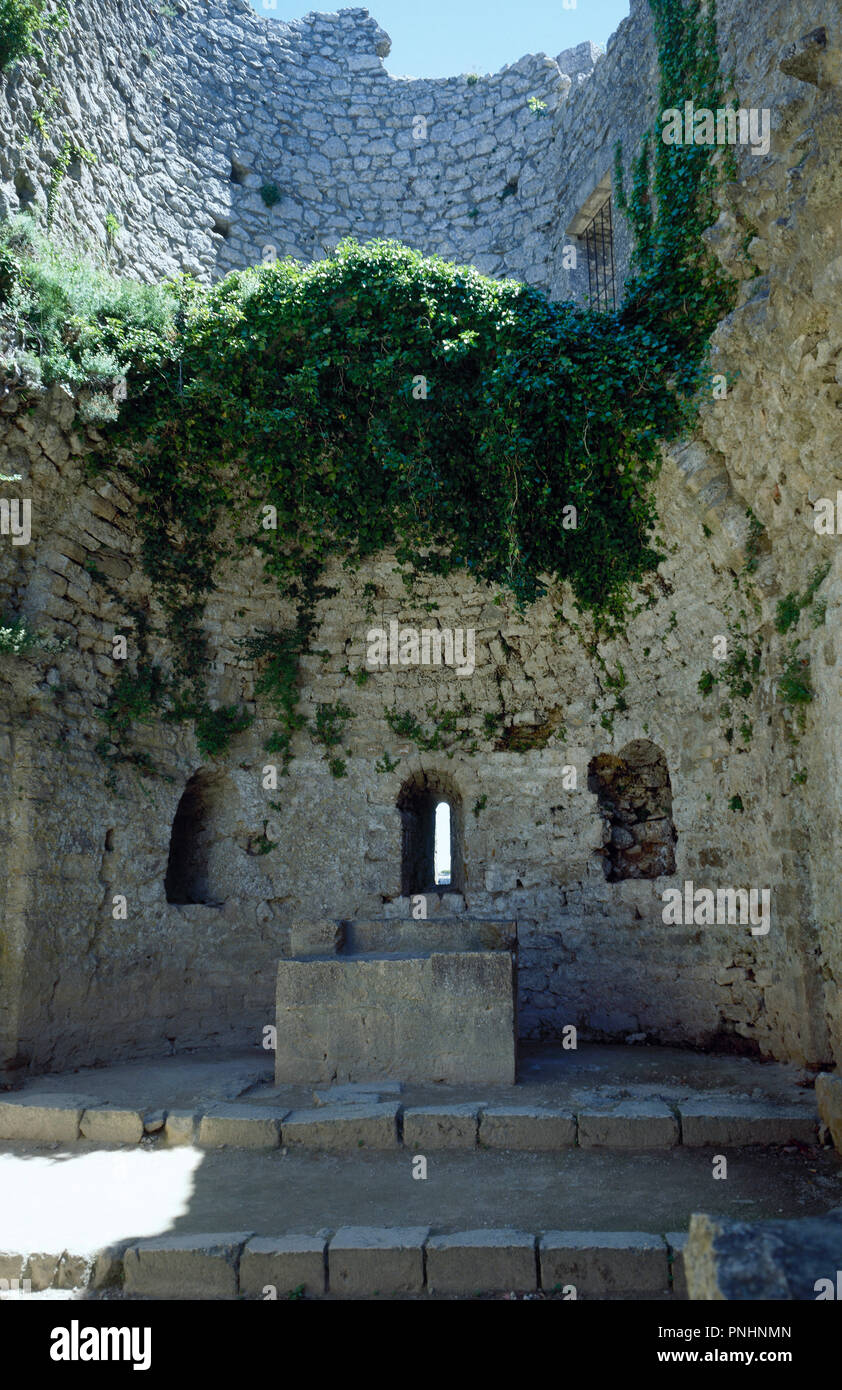 France. Aude. Peyrepertuse. Cathar Castle. Built on a strategic location. French Pyrenees. 11th-13th century. Ruins of the chapel of St. Mary. Stock Photohttps://www.alamy.com/image-license-details/?v=1https://www.alamy.com/france-aude-peyrepertuse-cathar-castle-built-on-a-strategic-location-french-pyrenees-11th-13th-century-ruins-of-the-chapel-of-st-mary-image219822421.html
France. Aude. Peyrepertuse. Cathar Castle. Built on a strategic location. French Pyrenees. 11th-13th century. Ruins of the chapel of St. Mary. Stock Photohttps://www.alamy.com/image-license-details/?v=1https://www.alamy.com/france-aude-peyrepertuse-cathar-castle-built-on-a-strategic-location-french-pyrenees-11th-13th-century-ruins-of-the-chapel-of-st-mary-image219822421.htmlRMPNHNMN–France. Aude. Peyrepertuse. Cathar Castle. Built on a strategic location. French Pyrenees. 11th-13th century. Ruins of the chapel of St. Mary.
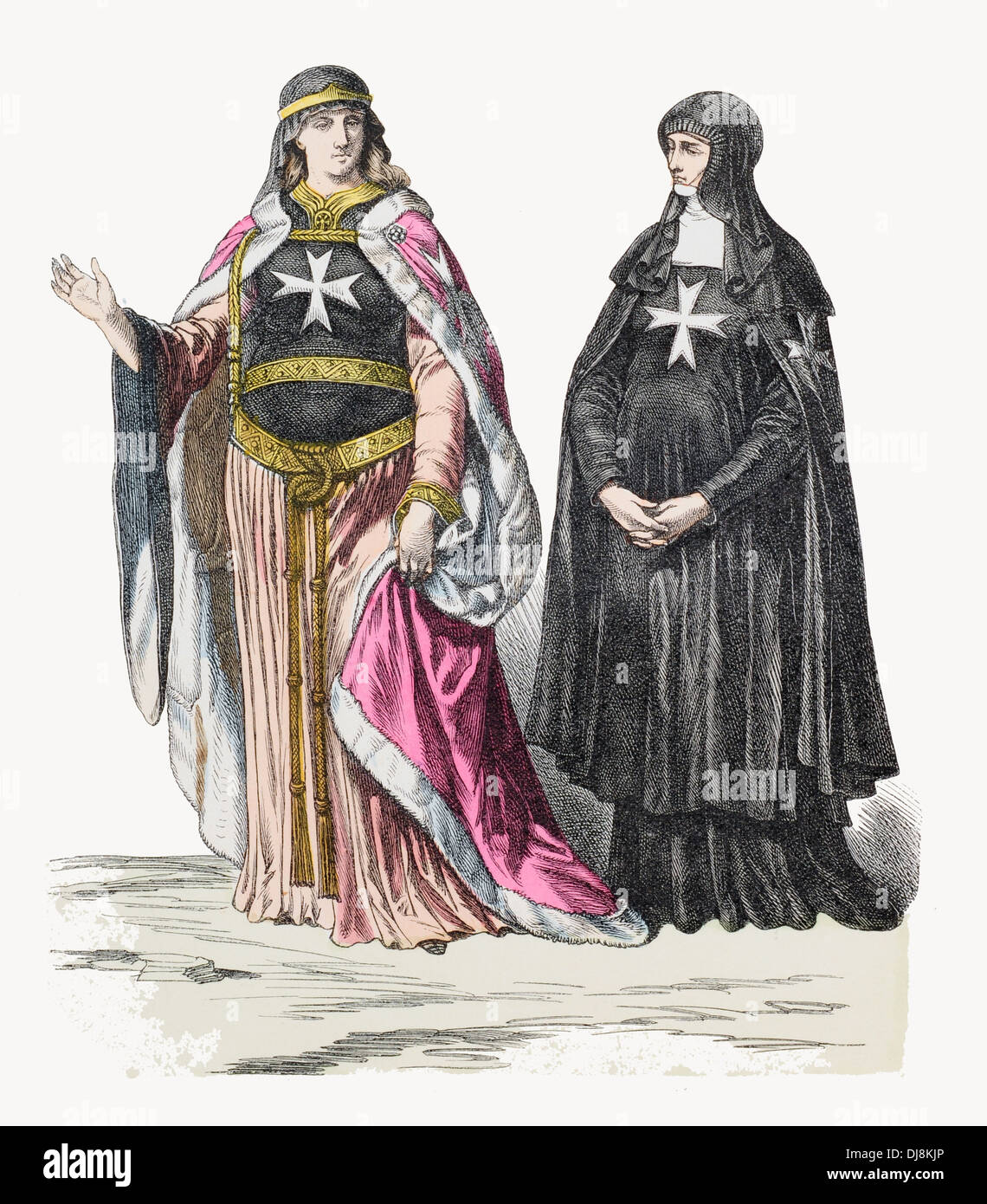 Nuns of St. John. Crusaders of the 12th XII and 13th XIII Century Stock Photohttps://www.alamy.com/image-license-details/?v=1https://www.alamy.com/nuns-of-st-john-crusaders-of-the-12th-xii-and-13th-xiii-century-image62885950.html
Nuns of St. John. Crusaders of the 12th XII and 13th XIII Century Stock Photohttps://www.alamy.com/image-license-details/?v=1https://www.alamy.com/nuns-of-st-john-crusaders-of-the-12th-xii-and-13th-xiii-century-image62885950.htmlRFDJ8KJP–Nuns of St. John. Crusaders of the 12th XII and 13th XIII Century
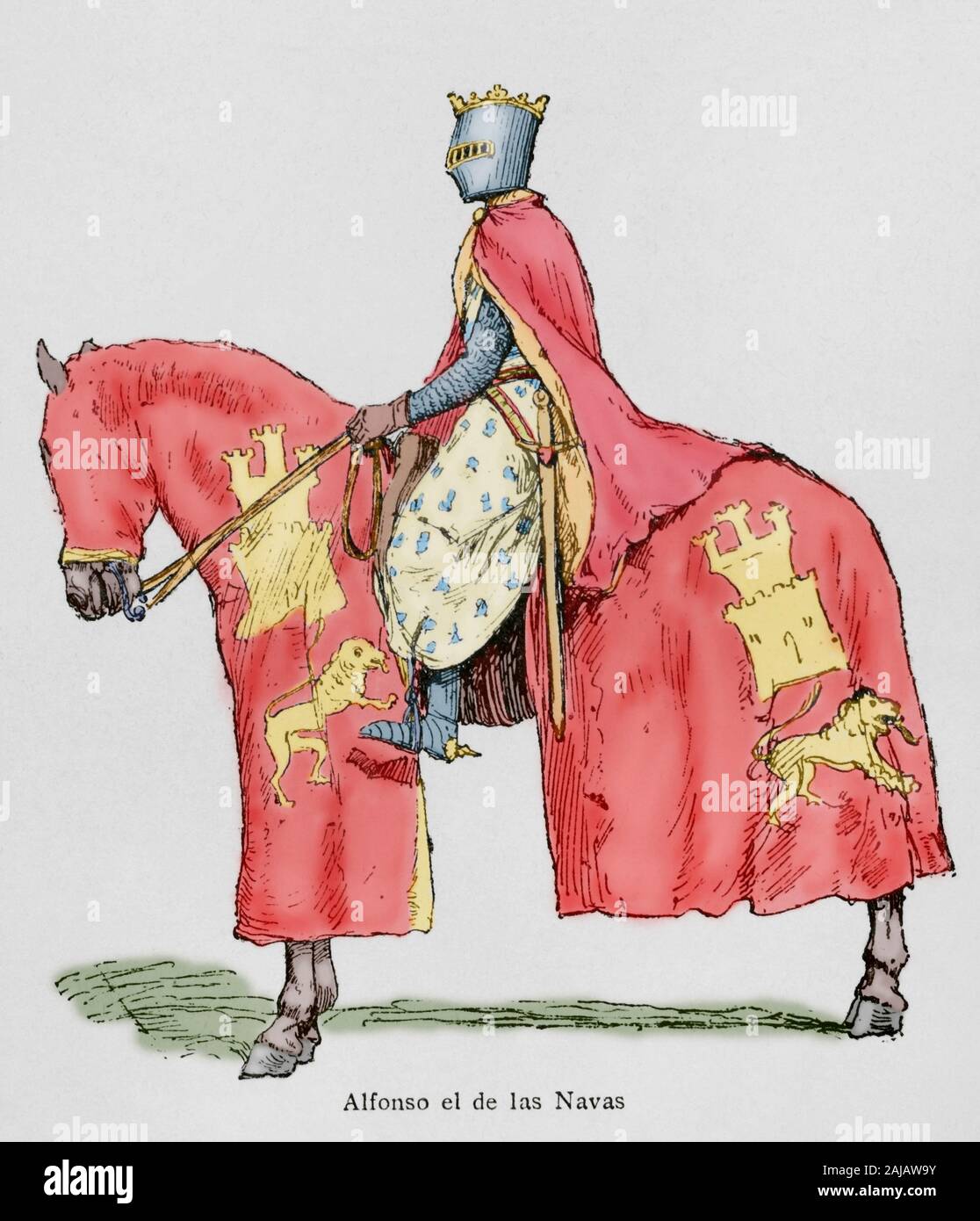 Alfonso VIII of Castile (1155-1214), called the Noble or the one of the Navas. King of Castile from 1158 and King of Toledo. Engraving. Museo Militar, 1883. Later colouration. Stock Photohttps://www.alamy.com/image-license-details/?v=1https://www.alamy.com/alfonso-viii-of-castile-1155-1214-called-the-noble-or-the-one-of-the-navas-king-of-castile-from-1158-and-king-of-toledo-engraving-museo-militar-1883-later-colouration-image338300199.html
Alfonso VIII of Castile (1155-1214), called the Noble or the one of the Navas. King of Castile from 1158 and King of Toledo. Engraving. Museo Militar, 1883. Later colouration. Stock Photohttps://www.alamy.com/image-license-details/?v=1https://www.alamy.com/alfonso-viii-of-castile-1155-1214-called-the-noble-or-the-one-of-the-navas-king-of-castile-from-1158-and-king-of-toledo-engraving-museo-militar-1883-later-colouration-image338300199.htmlRM2AJAW9Y–Alfonso VIII of Castile (1155-1214), called the Noble or the one of the Navas. King of Castile from 1158 and King of Toledo. Engraving. Museo Militar, 1883. Later colouration.
 Head of a knight figure. England, 13th century. Stone. Erworben 1994. The crusades emanated from the whole of western Europe. Most of the crusaders into the Holy Land, however, came from England and France. The German Historical Museum. Berlin. Germany. Stock Photohttps://www.alamy.com/image-license-details/?v=1https://www.alamy.com/head-of-a-knight-figure-england-13th-century-stone-erworben-1994-the-crusades-emanated-from-the-whole-of-western-europe-most-of-the-crusaders-into-the-holy-land-however-came-from-england-and-france-the-german-historical-museum-berlin-germany-image220026371.html
Head of a knight figure. England, 13th century. Stone. Erworben 1994. The crusades emanated from the whole of western Europe. Most of the crusaders into the Holy Land, however, came from England and France. The German Historical Museum. Berlin. Germany. Stock Photohttps://www.alamy.com/image-license-details/?v=1https://www.alamy.com/head-of-a-knight-figure-england-13th-century-stone-erworben-1994-the-crusades-emanated-from-the-whole-of-western-europe-most-of-the-crusaders-into-the-holy-land-however-came-from-england-and-france-the-german-historical-museum-berlin-germany-image220026371.htmlRMPNY1TK–Head of a knight figure. England, 13th century. Stone. Erworben 1994. The crusades emanated from the whole of western Europe. Most of the crusaders into the Holy Land, however, came from England and France. The German Historical Museum. Berlin. Germany.
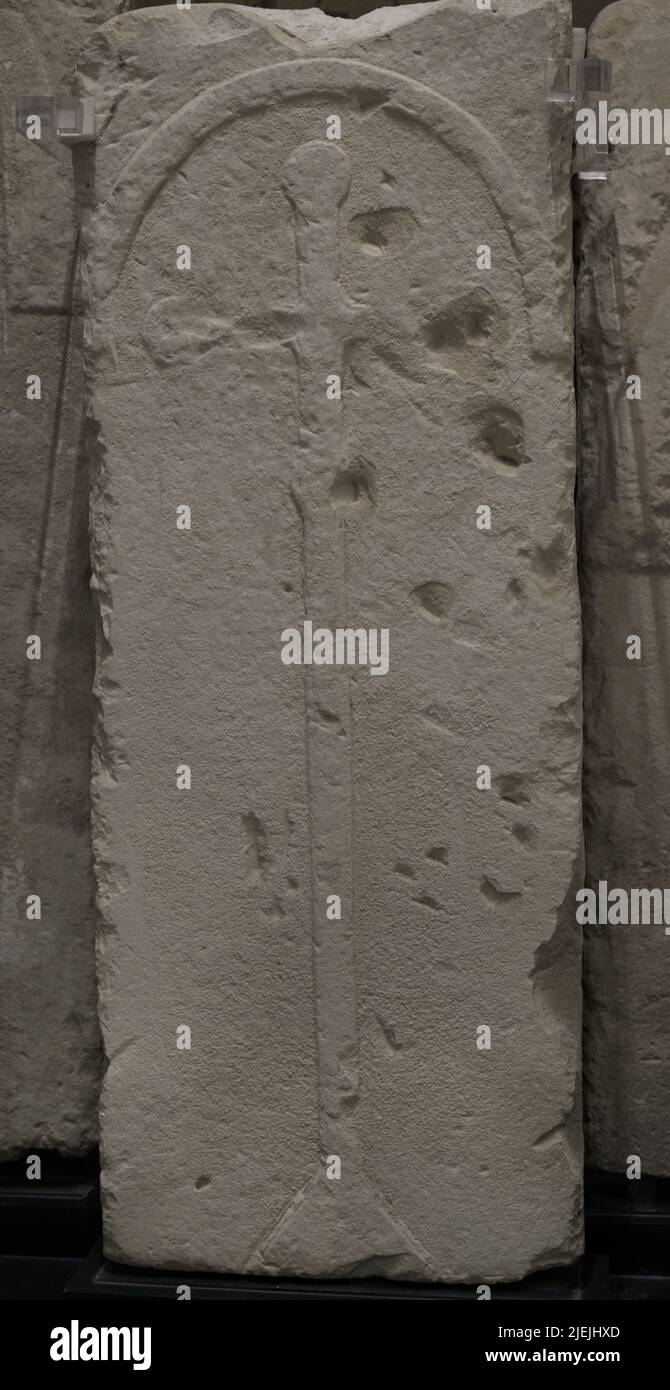 Medieval tombstone belonging to one of the ancient tombs of a cemetery, which no longer exists, located near the church of St Augustine at Rabat (Victoria) on the island of Gozo, Malta. According to tradition, the tombstones marked the graves of illustrious personages who accompanied King Louis IX of France in his crusade against Tunis in 1270. The returning French ships were scattered by a storm. Some of their crews also died of disease. Several ships arrived in the port of Gozo, where the dead were buried. Gozo Museum of Archaeology. Cittadela of Victoria in Gozo. Malta. Stock Photohttps://www.alamy.com/image-license-details/?v=1https://www.alamy.com/medieval-tombstone-belonging-to-one-of-the-ancient-tombs-of-a-cemetery-which-no-longer-exists-located-near-the-church-of-st-augustine-at-rabat-victoria-on-the-island-of-gozo-malta-according-to-tradition-the-tombstones-marked-the-graves-of-illustrious-personages-who-accompanied-king-louis-ix-of-france-in-his-crusade-against-tunis-in-1270-the-returning-french-ships-were-scattered-by-a-storm-some-of-their-crews-also-died-of-disease-several-ships-arrived-in-the-port-of-gozo-where-the-dead-were-buried-gozo-museum-of-archaeology-cittadela-of-victoria-in-gozo-malta-image473694325.html
Medieval tombstone belonging to one of the ancient tombs of a cemetery, which no longer exists, located near the church of St Augustine at Rabat (Victoria) on the island of Gozo, Malta. According to tradition, the tombstones marked the graves of illustrious personages who accompanied King Louis IX of France in his crusade against Tunis in 1270. The returning French ships were scattered by a storm. Some of their crews also died of disease. Several ships arrived in the port of Gozo, where the dead were buried. Gozo Museum of Archaeology. Cittadela of Victoria in Gozo. Malta. Stock Photohttps://www.alamy.com/image-license-details/?v=1https://www.alamy.com/medieval-tombstone-belonging-to-one-of-the-ancient-tombs-of-a-cemetery-which-no-longer-exists-located-near-the-church-of-st-augustine-at-rabat-victoria-on-the-island-of-gozo-malta-according-to-tradition-the-tombstones-marked-the-graves-of-illustrious-personages-who-accompanied-king-louis-ix-of-france-in-his-crusade-against-tunis-in-1270-the-returning-french-ships-were-scattered-by-a-storm-some-of-their-crews-also-died-of-disease-several-ships-arrived-in-the-port-of-gozo-where-the-dead-were-buried-gozo-museum-of-archaeology-cittadela-of-victoria-in-gozo-malta-image473694325.htmlRM2JEJHXD–Medieval tombstone belonging to one of the ancient tombs of a cemetery, which no longer exists, located near the church of St Augustine at Rabat (Victoria) on the island of Gozo, Malta. According to tradition, the tombstones marked the graves of illustrious personages who accompanied King Louis IX of France in his crusade against Tunis in 1270. The returning French ships were scattered by a storm. Some of their crews also died of disease. Several ships arrived in the port of Gozo, where the dead were buried. Gozo Museum of Archaeology. Cittadela of Victoria in Gozo. Malta.
 Crusaders Stock Photohttps://www.alamy.com/image-license-details/?v=1https://www.alamy.com/crusaders-image5541896.html
Crusaders Stock Photohttps://www.alamy.com/image-license-details/?v=1https://www.alamy.com/crusaders-image5541896.htmlRMAY2T09–Crusaders
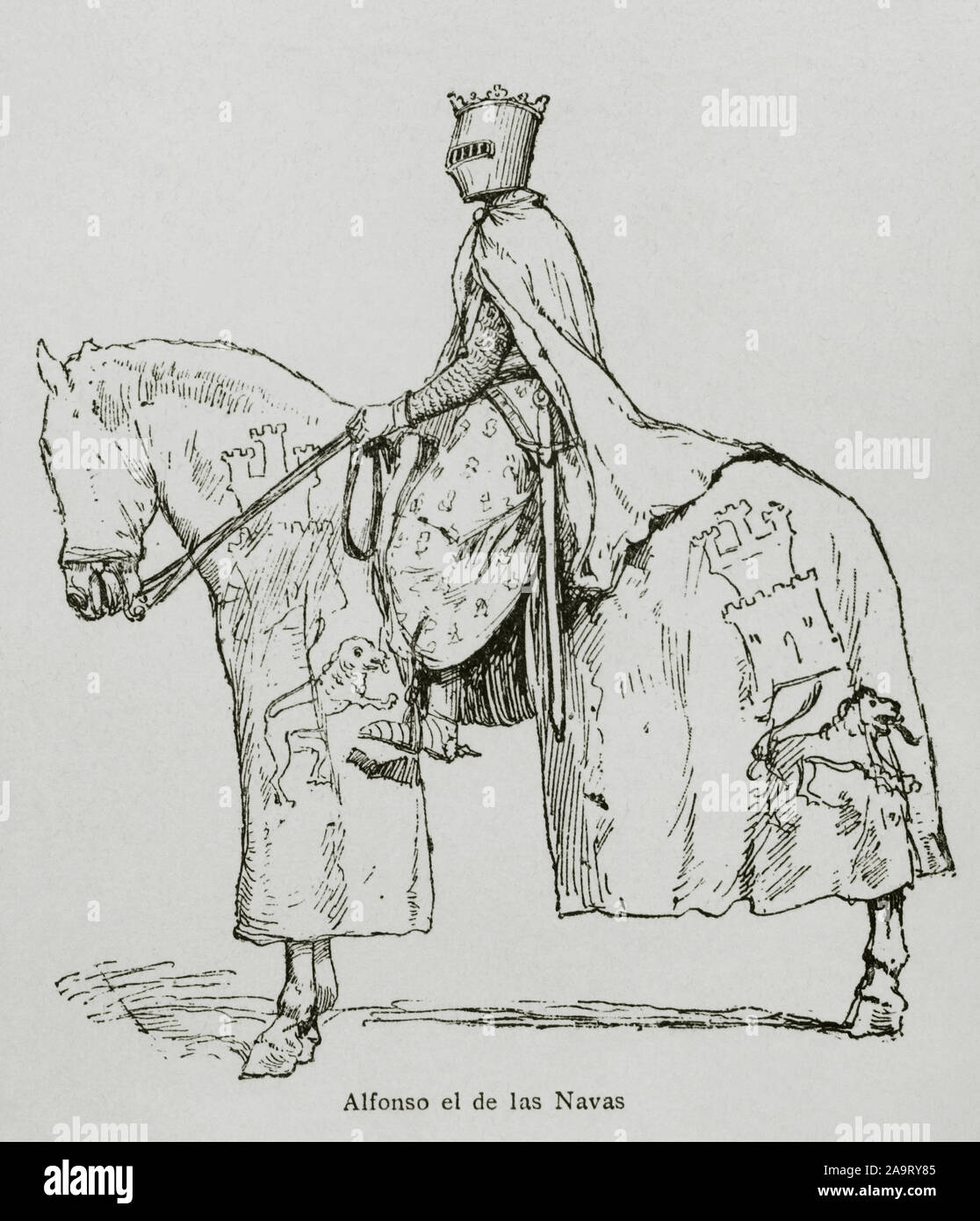 Alfonso VIII of Castile (1155-1214), called the Noble or the one of the Navas. King of Castile from 1158 and King of Toledo. Engraving. Museo Militar, 1883. Stock Photohttps://www.alamy.com/image-license-details/?v=1https://www.alamy.com/alfonso-viii-of-castile-1155-1214-called-the-noble-or-the-one-of-the-navas-king-of-castile-from-1158-and-king-of-toledo-engraving-museo-militar-1883-image333055189.html
Alfonso VIII of Castile (1155-1214), called the Noble or the one of the Navas. King of Castile from 1158 and King of Toledo. Engraving. Museo Militar, 1883. Stock Photohttps://www.alamy.com/image-license-details/?v=1https://www.alamy.com/alfonso-viii-of-castile-1155-1214-called-the-noble-or-the-one-of-the-navas-king-of-castile-from-1158-and-king-of-toledo-engraving-museo-militar-1883-image333055189.htmlRM2A9RY85–Alfonso VIII of Castile (1155-1214), called the Noble or the one of the Navas. King of Castile from 1158 and King of Toledo. Engraving. Museo Militar, 1883.
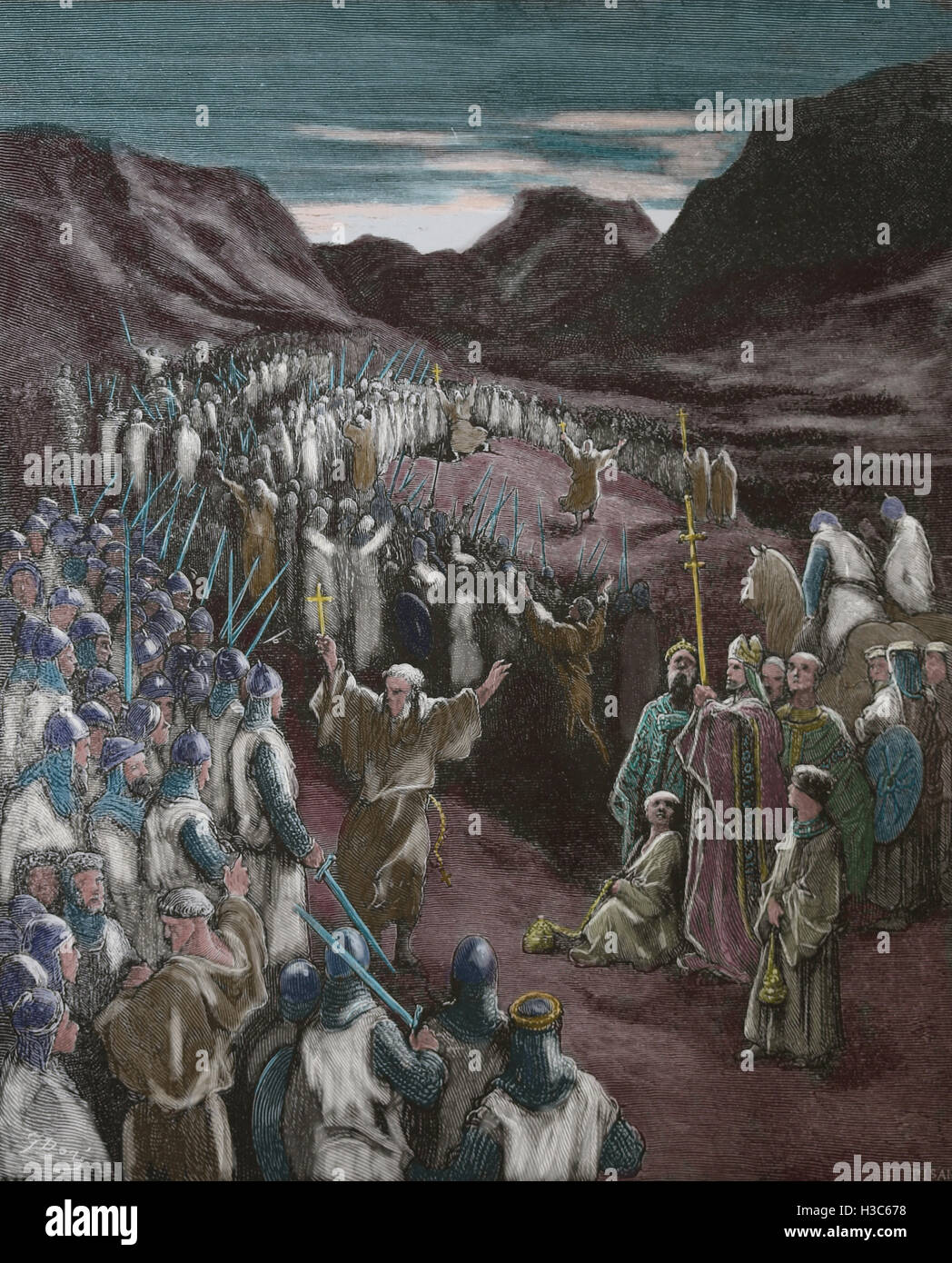 The Crusaders. Religion wars 11th-16th century. Priest exhorting the Crusaders. Engraving by Gustave Dore, 19th century. Color. Stock Photohttps://www.alamy.com/image-license-details/?v=1https://www.alamy.com/stock-photo-the-crusaders-religion-wars-11th-16th-century-priest-exhorting-the-122584876.html
The Crusaders. Religion wars 11th-16th century. Priest exhorting the Crusaders. Engraving by Gustave Dore, 19th century. Color. Stock Photohttps://www.alamy.com/image-license-details/?v=1https://www.alamy.com/stock-photo-the-crusaders-religion-wars-11th-16th-century-priest-exhorting-the-122584876.htmlRMH3C678–The Crusaders. Religion wars 11th-16th century. Priest exhorting the Crusaders. Engraving by Gustave Dore, 19th century. Color.
 Gallipoli Italy Stock Photohttps://www.alamy.com/image-license-details/?v=1https://www.alamy.com/gallipoli-italy-image212568335.html
Gallipoli Italy Stock Photohttps://www.alamy.com/image-license-details/?v=1https://www.alamy.com/gallipoli-italy-image212568335.htmlRFP9R927–Gallipoli Italy
 History by Polybius. Volume II. French edition translated from Greek by Dom Vincent Thuillier. Comments of Military Science enriched with critical and historical notes by M. De Folard. Paris, chez Pierre Gandouin, Julien-Michel Gandouin, Pierre-Francois Giffart and Nicolas-Pierre Armand, 1727. Printing by Jean-Baptiste Lamesle. Siege Towers with wheels used by the Holy Roman Emperor Frederick II (1194-1250) during the siege of Jerusalem. The Sixth Crusade. Engraving. Later colouration. Stock Photohttps://www.alamy.com/image-license-details/?v=1https://www.alamy.com/history-by-polybius-volume-ii-french-edition-translated-from-greek-by-dom-vincent-thuillier-comments-of-military-science-enriched-with-critical-and-historical-notes-by-m-de-folard-paris-chez-pierre-gandouin-julien-michel-gandouin-pierre-francois-giffart-and-nicolas-pierre-armand-1727-printing-by-jean-baptiste-lamesle-siege-towers-with-wheels-used-by-the-holy-roman-emperor-frederick-ii-1194-1250-during-the-siege-of-jerusalem-the-sixth-crusade-engraving-later-colouration-image256079963.html
History by Polybius. Volume II. French edition translated from Greek by Dom Vincent Thuillier. Comments of Military Science enriched with critical and historical notes by M. De Folard. Paris, chez Pierre Gandouin, Julien-Michel Gandouin, Pierre-Francois Giffart and Nicolas-Pierre Armand, 1727. Printing by Jean-Baptiste Lamesle. Siege Towers with wheels used by the Holy Roman Emperor Frederick II (1194-1250) during the siege of Jerusalem. The Sixth Crusade. Engraving. Later colouration. Stock Photohttps://www.alamy.com/image-license-details/?v=1https://www.alamy.com/history-by-polybius-volume-ii-french-edition-translated-from-greek-by-dom-vincent-thuillier-comments-of-military-science-enriched-with-critical-and-historical-notes-by-m-de-folard-paris-chez-pierre-gandouin-julien-michel-gandouin-pierre-francois-giffart-and-nicolas-pierre-armand-1727-printing-by-jean-baptiste-lamesle-siege-towers-with-wheels-used-by-the-holy-roman-emperor-frederick-ii-1194-1250-during-the-siege-of-jerusalem-the-sixth-crusade-engraving-later-colouration-image256079963.htmlRMTTHCGY–History by Polybius. Volume II. French edition translated from Greek by Dom Vincent Thuillier. Comments of Military Science enriched with critical and historical notes by M. De Folard. Paris, chez Pierre Gandouin, Julien-Michel Gandouin, Pierre-Francois Giffart and Nicolas-Pierre Armand, 1727. Printing by Jean-Baptiste Lamesle. Siege Towers with wheels used by the Holy Roman Emperor Frederick II (1194-1250) during the siege of Jerusalem. The Sixth Crusade. Engraving. Later colouration.
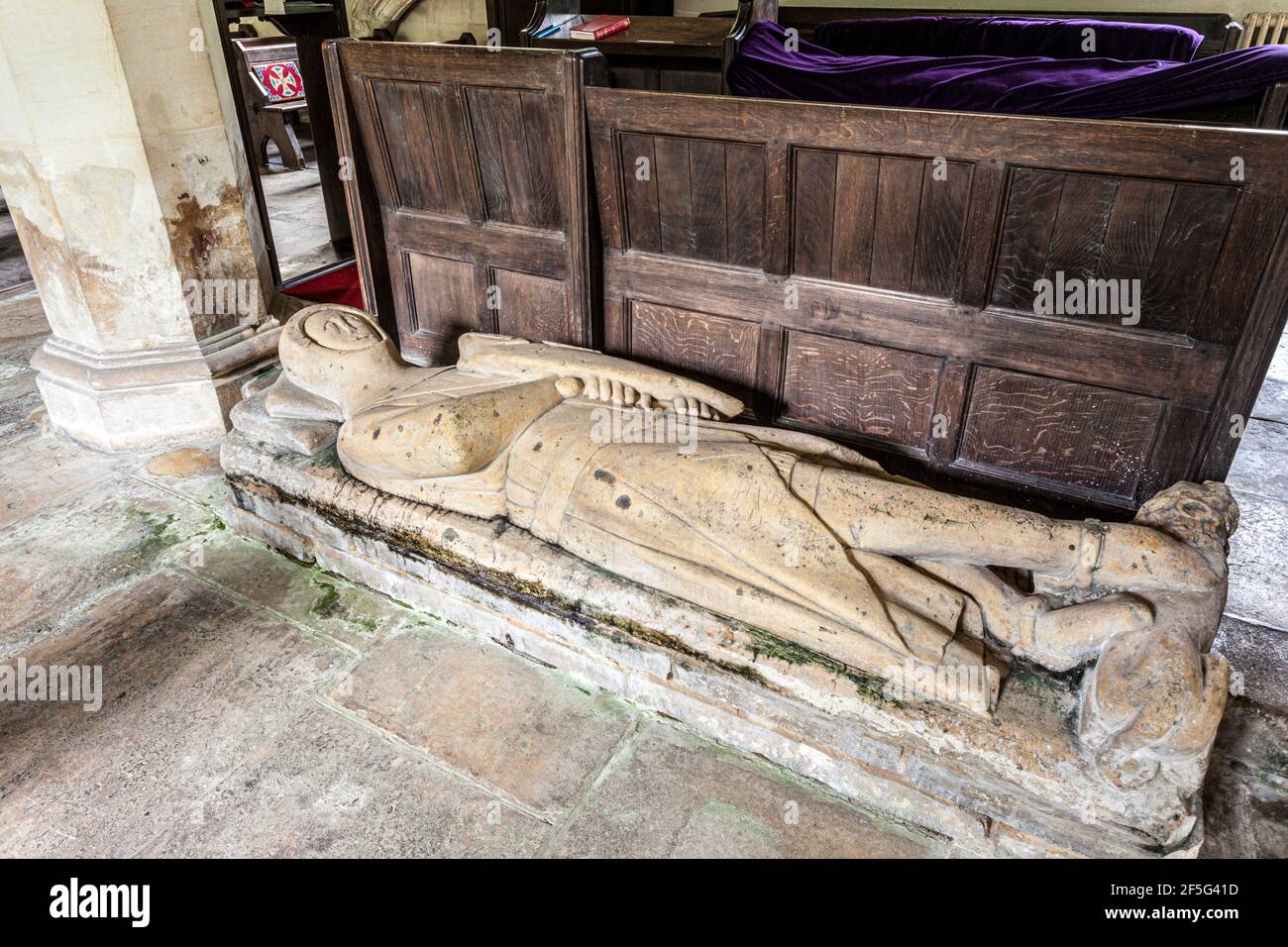 The tomb of the Crusader knight Richard de Crupes in the church in the Cotswold village of Whittington, Gloucestershire UK Stock Photohttps://www.alamy.com/image-license-details/?v=1https://www.alamy.com/the-tomb-of-the-crusader-knight-richard-de-crupes-in-the-church-in-the-cotswold-village-of-whittington-gloucestershire-uk-image416476521.html
The tomb of the Crusader knight Richard de Crupes in the church in the Cotswold village of Whittington, Gloucestershire UK Stock Photohttps://www.alamy.com/image-license-details/?v=1https://www.alamy.com/the-tomb-of-the-crusader-knight-richard-de-crupes-in-the-church-in-the-cotswold-village-of-whittington-gloucestershire-uk-image416476521.htmlRM2F5G41D–The tomb of the Crusader knight Richard de Crupes in the church in the Cotswold village of Whittington, Gloucestershire UK
 . English: Crusaders bombard Nicaea with heads in 1097. Literature: David Nicolle, Medieval Siege Weapons (1): Western Europe AD 585-1385, Osprey Publishing, 2002, p. 21. Deutsch: Belagerung von Nikäa. Kreuzfahrer schleudern die Köpfe getöteter Feinde in die Stadt. Miniatur aus dem 13. Jahrhundert . 13th century. anonymous master (French school) 147 CrusadersThrowingHeadsOfMuslimsOverRamparts Stock Photohttps://www.alamy.com/image-license-details/?v=1https://www.alamy.com/english-crusaders-bombard-nicaea-with-heads-in-1097-literature-david-nicolle-medieval-siege-weapons-1-western-europe-ad-585-1385-osprey-publishing-2002-p-21-deutsch-belagerung-von-nika-kreuzfahrer-schleudern-die-kpfe-getteter-feinde-in-die-stadt-miniatur-aus-dem-13-jahrhundert-13th-century-anonymous-master-french-school-147-crusadersthrowingheadsofmuslimsoverramparts-image187820425.html
. English: Crusaders bombard Nicaea with heads in 1097. Literature: David Nicolle, Medieval Siege Weapons (1): Western Europe AD 585-1385, Osprey Publishing, 2002, p. 21. Deutsch: Belagerung von Nikäa. Kreuzfahrer schleudern die Köpfe getöteter Feinde in die Stadt. Miniatur aus dem 13. Jahrhundert . 13th century. anonymous master (French school) 147 CrusadersThrowingHeadsOfMuslimsOverRamparts Stock Photohttps://www.alamy.com/image-license-details/?v=1https://www.alamy.com/english-crusaders-bombard-nicaea-with-heads-in-1097-literature-david-nicolle-medieval-siege-weapons-1-western-europe-ad-585-1385-osprey-publishing-2002-p-21-deutsch-belagerung-von-nika-kreuzfahrer-schleudern-die-kpfe-getteter-feinde-in-die-stadt-miniatur-aus-dem-13-jahrhundert-13th-century-anonymous-master-french-school-147-crusadersthrowingheadsofmuslimsoverramparts-image187820425.htmlRMMWFXT9–. English: Crusaders bombard Nicaea with heads in 1097. Literature: David Nicolle, Medieval Siege Weapons (1): Western Europe AD 585-1385, Osprey Publishing, 2002, p. 21. Deutsch: Belagerung von Nikäa. Kreuzfahrer schleudern die Köpfe getöteter Feinde in die Stadt. Miniatur aus dem 13. Jahrhundert . 13th century. anonymous master (French school) 147 CrusadersThrowingHeadsOfMuslimsOverRamparts
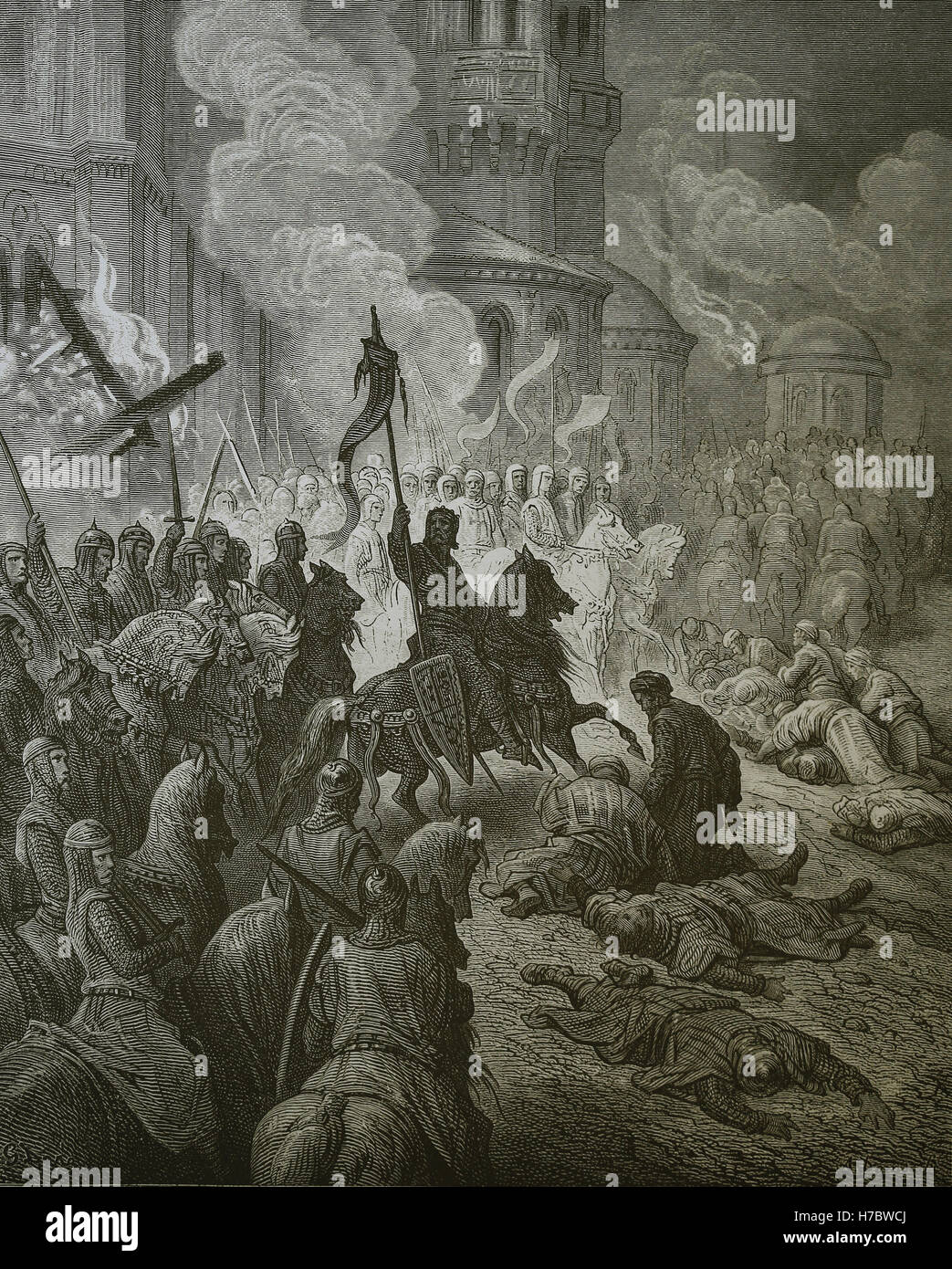 Fourth Crusade. Entry of the Crusaders into Constantinople, 1204. Engraving by Gustave Dore, 19th c. Stock Photohttps://www.alamy.com/image-license-details/?v=1https://www.alamy.com/stock-photo-fourth-crusade-entry-of-the-crusaders-into-constantinople-1204-engraving-125036594.html
Fourth Crusade. Entry of the Crusaders into Constantinople, 1204. Engraving by Gustave Dore, 19th c. Stock Photohttps://www.alamy.com/image-license-details/?v=1https://www.alamy.com/stock-photo-fourth-crusade-entry-of-the-crusaders-into-constantinople-1204-engraving-125036594.htmlRMH7BWCJ–Fourth Crusade. Entry of the Crusaders into Constantinople, 1204. Engraving by Gustave Dore, 19th c.
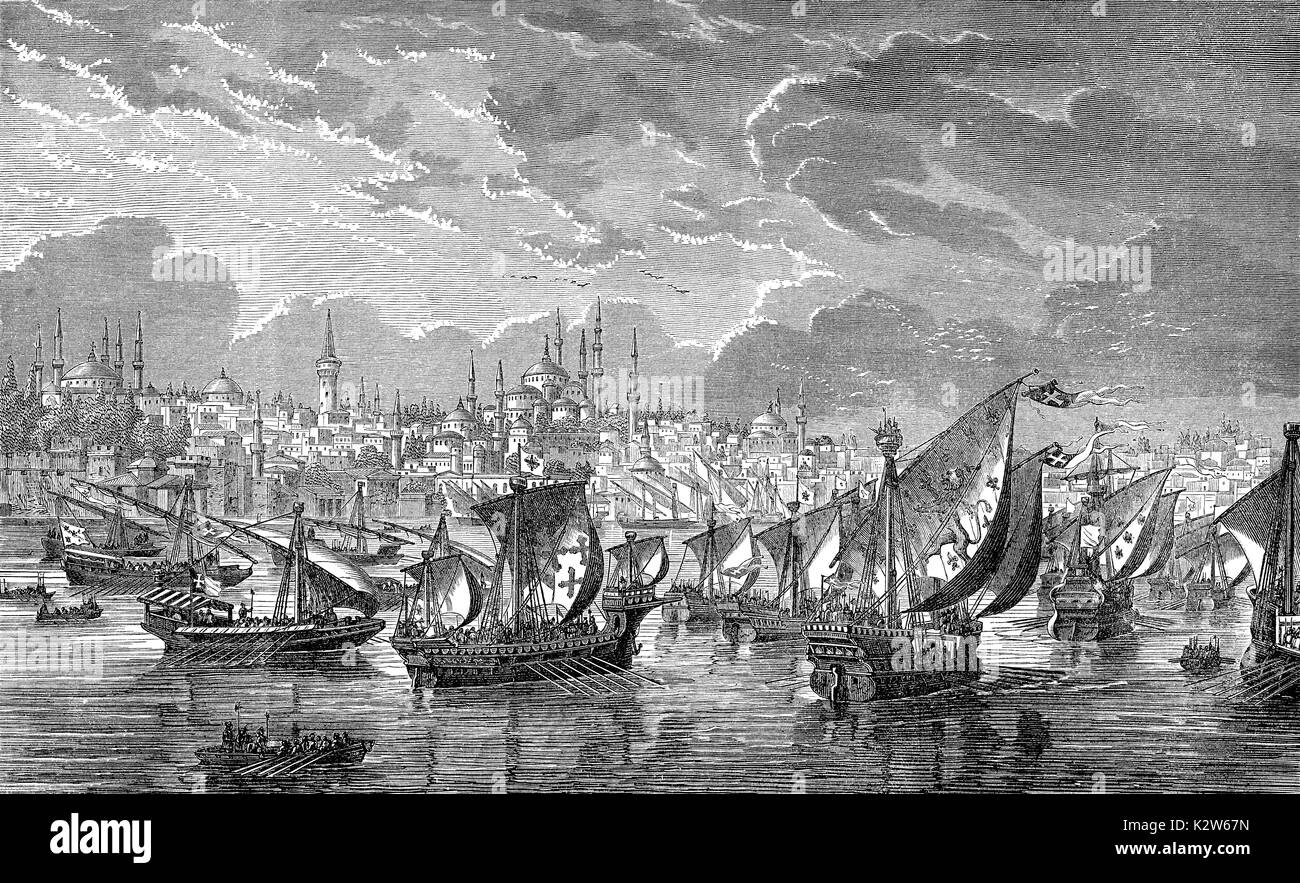 The fleet of the crusaders in front of Constantinople during the Fourth Crusade in 1203, Riva river, Turkey Stock Photohttps://www.alamy.com/image-license-details/?v=1https://www.alamy.com/the-fleet-of-the-crusaders-in-front-of-constantinople-during-the-fourth-image156676345.html
The fleet of the crusaders in front of Constantinople during the Fourth Crusade in 1203, Riva river, Turkey Stock Photohttps://www.alamy.com/image-license-details/?v=1https://www.alamy.com/the-fleet-of-the-crusaders-in-front-of-constantinople-during-the-fourth-image156676345.htmlRMK2W67N–The fleet of the crusaders in front of Constantinople during the Fourth Crusade in 1203, Riva river, Turkey
 The London to Dover section from Matthew Paris's Itinerary map of London to Palestine, 13th century. By Matthew Paris (c1200-1259). Pilgrimage maps of Jerusalem began to appear in the 1200s. Here English Benedictine monk, Matthew Paris, depicts the journey from London to Jerusalem. The map appears in versions of Paris’s Chronica Maiora, his history of the world from its creation to 1253. It appears in a linear style, with folios pasted back to back, and may have originally been a single long strip map. Stock Photohttps://www.alamy.com/image-license-details/?v=1https://www.alamy.com/the-london-to-dover-section-from-matthew-pariss-itinerary-map-of-london-to-palestine-13th-century-by-matthew-paris-c1200-1259-pilgrimage-maps-of-jerusalem-began-to-appear-in-the-1200s-here-english-benedictine-monk-matthew-paris-depicts-the-journey-from-london-to-jerusalem-the-map-appears-in-versions-of-pariss-chronica-maiora-his-history-of-the-world-from-its-creation-to-1253-it-appears-in-a-linear-style-with-folios-pasted-back-to-back-and-may-have-originally-been-a-single-long-strip-map-image484791677.html
The London to Dover section from Matthew Paris's Itinerary map of London to Palestine, 13th century. By Matthew Paris (c1200-1259). Pilgrimage maps of Jerusalem began to appear in the 1200s. Here English Benedictine monk, Matthew Paris, depicts the journey from London to Jerusalem. The map appears in versions of Paris’s Chronica Maiora, his history of the world from its creation to 1253. It appears in a linear style, with folios pasted back to back, and may have originally been a single long strip map. Stock Photohttps://www.alamy.com/image-license-details/?v=1https://www.alamy.com/the-london-to-dover-section-from-matthew-pariss-itinerary-map-of-london-to-palestine-13th-century-by-matthew-paris-c1200-1259-pilgrimage-maps-of-jerusalem-began-to-appear-in-the-1200s-here-english-benedictine-monk-matthew-paris-depicts-the-journey-from-london-to-jerusalem-the-map-appears-in-versions-of-pariss-chronica-maiora-his-history-of-the-world-from-its-creation-to-1253-it-appears-in-a-linear-style-with-folios-pasted-back-to-back-and-may-have-originally-been-a-single-long-strip-map-image484791677.htmlRM2K4M4MD–The London to Dover section from Matthew Paris's Itinerary map of London to Palestine, 13th century. By Matthew Paris (c1200-1259). Pilgrimage maps of Jerusalem began to appear in the 1200s. Here English Benedictine monk, Matthew Paris, depicts the journey from London to Jerusalem. The map appears in versions of Paris’s Chronica Maiora, his history of the world from its creation to 1253. It appears in a linear style, with folios pasted back to back, and may have originally been a single long strip map.
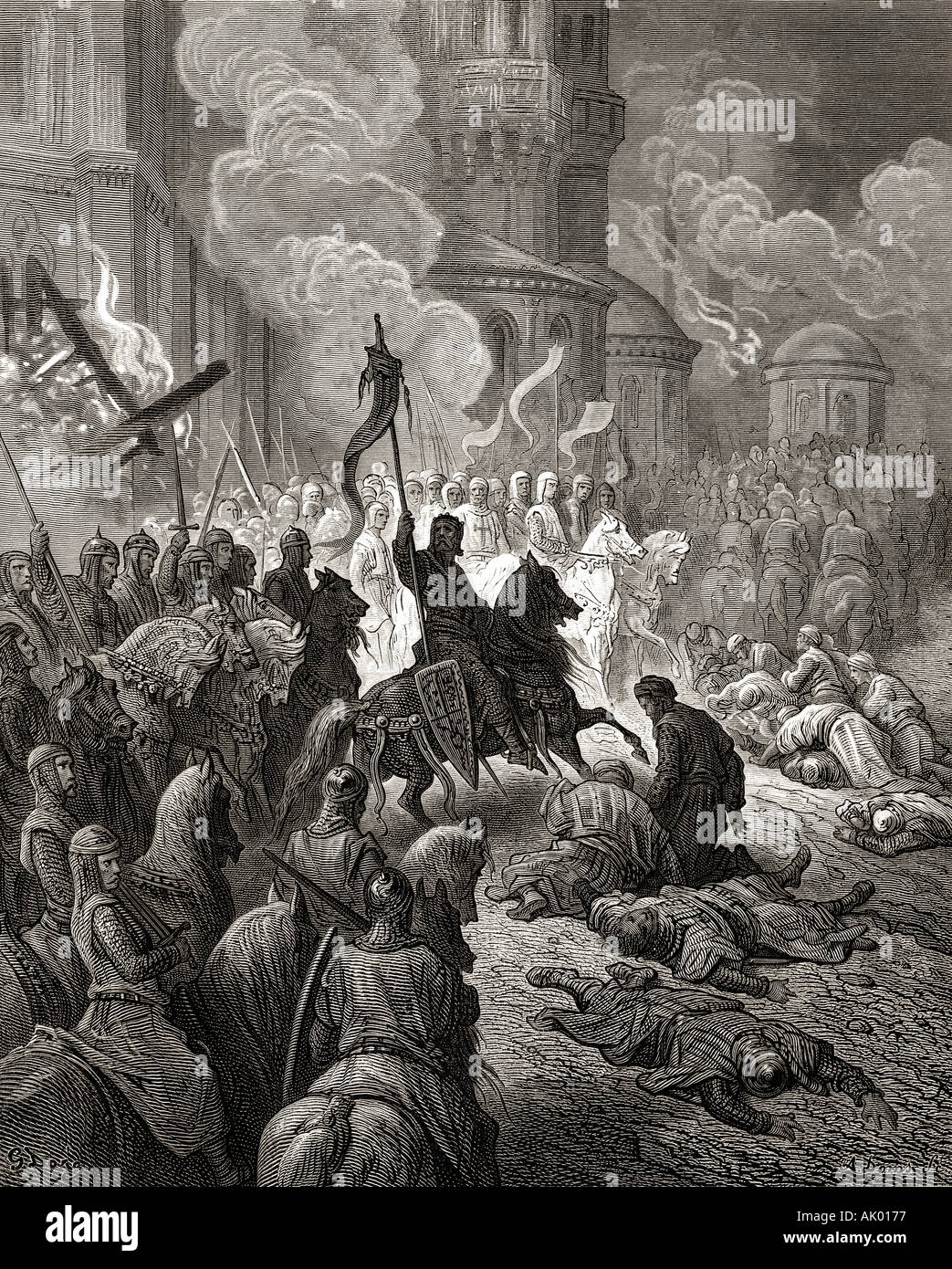 Entry of the crusaders into Constantinople during the fourth crusade,1204. Stock Photohttps://www.alamy.com/image-license-details/?v=1https://www.alamy.com/entry-of-the-crusaders-into-constantinople-during-the-fourth-crusade1204-image1245558.html
Entry of the crusaders into Constantinople during the fourth crusade,1204. Stock Photohttps://www.alamy.com/image-license-details/?v=1https://www.alamy.com/entry-of-the-crusaders-into-constantinople-during-the-fourth-crusade1204-image1245558.htmlRMAK0177–Entry of the crusaders into Constantinople during the fourth crusade,1204.
 A woodcut engraving depicting envoys of a Sultan, with an old merchant on crutches to act as an interpreter, discussing ransoms terms with Christian knights taken prisoner during the Crusade. Woodcut after a miniature in Credo du Joinville, a late 13th-century manuscript. Dated 15th century Stock Photohttps://www.alamy.com/image-license-details/?v=1https://www.alamy.com/a-woodcut-engraving-depicting-envoys-of-a-sultan-with-an-old-merchant-on-crutches-to-act-as-an-interpreter-discussing-ransoms-terms-with-christian-knights-taken-prisoner-during-the-crusade-woodcut-after-a-miniature-in-credo-du-joinville-a-late-13th-century-manuscript-dated-15th-century-image235029755.html
A woodcut engraving depicting envoys of a Sultan, with an old merchant on crutches to act as an interpreter, discussing ransoms terms with Christian knights taken prisoner during the Crusade. Woodcut after a miniature in Credo du Joinville, a late 13th-century manuscript. Dated 15th century Stock Photohttps://www.alamy.com/image-license-details/?v=1https://www.alamy.com/a-woodcut-engraving-depicting-envoys-of-a-sultan-with-an-old-merchant-on-crutches-to-act-as-an-interpreter-discussing-ransoms-terms-with-christian-knights-taken-prisoner-during-the-crusade-woodcut-after-a-miniature-in-credo-du-joinville-a-late-13th-century-manuscript-dated-15th-century-image235029755.htmlRMRJAERR–A woodcut engraving depicting envoys of a Sultan, with an old merchant on crutches to act as an interpreter, discussing ransoms terms with Christian knights taken prisoner during the Crusade. Woodcut after a miniature in Credo du Joinville, a late 13th-century manuscript. Dated 15th century
 Remains of the Sidon Sea Castle, a castle built by Crusaders in the 13th century consisting of two towers and a wall. Stock Photohttps://www.alamy.com/image-license-details/?v=1https://www.alamy.com/remains-of-the-sidon-sea-castle-a-castle-built-by-crusaders-in-the-13th-century-consisting-of-two-towers-and-a-wall-image572920615.html
Remains of the Sidon Sea Castle, a castle built by Crusaders in the 13th century consisting of two towers and a wall. Stock Photohttps://www.alamy.com/image-license-details/?v=1https://www.alamy.com/remains-of-the-sidon-sea-castle-a-castle-built-by-crusaders-in-the-13th-century-consisting-of-two-towers-and-a-wall-image572920615.htmlRF2T82P2F–Remains of the Sidon Sea Castle, a castle built by Crusaders in the 13th century consisting of two towers and a wall.
 Crusaders and Two Men Discussing the Renewal of the Treaty between the Sultan of Egypt and the King of Jerusalem, illuminated manuscript painting, circa 1295-1299 Stock Photohttps://www.alamy.com/image-license-details/?v=1https://www.alamy.com/crusaders-and-two-men-discussing-the-renewal-of-the-treaty-between-the-sultan-of-egypt-and-the-king-of-jerusalem-illuminated-manuscript-painting-circa-1295-1299-image545386318.html
Crusaders and Two Men Discussing the Renewal of the Treaty between the Sultan of Egypt and the King of Jerusalem, illuminated manuscript painting, circa 1295-1299 Stock Photohttps://www.alamy.com/image-license-details/?v=1https://www.alamy.com/crusaders-and-two-men-discussing-the-renewal-of-the-treaty-between-the-sultan-of-egypt-and-the-king-of-jerusalem-illuminated-manuscript-painting-circa-1295-1299-image545386318.htmlRM2PK8DPP–Crusaders and Two Men Discussing the Renewal of the Treaty between the Sultan of Egypt and the King of Jerusalem, illuminated manuscript painting, circa 1295-1299
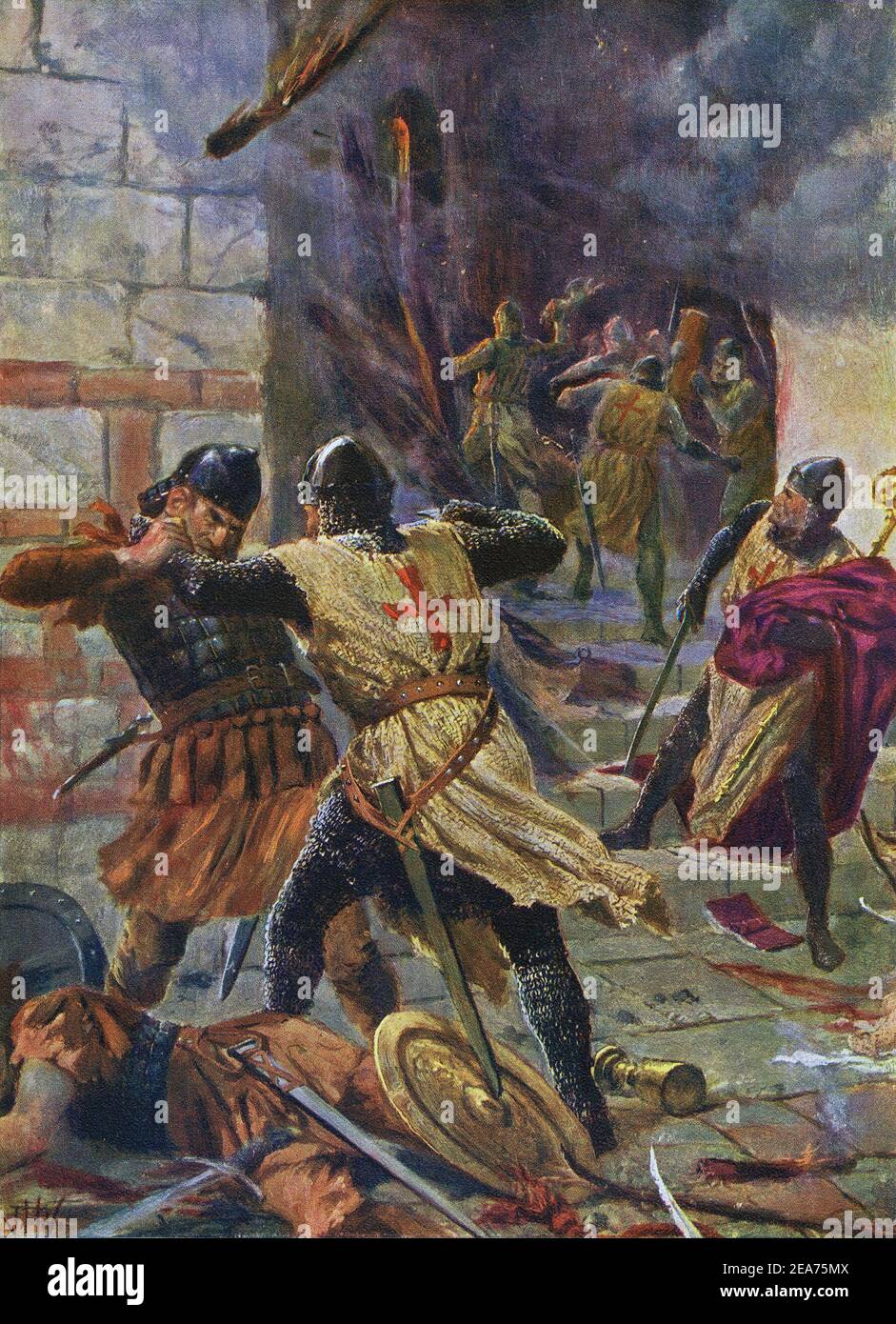 An illustration entitled Conquest of Constantinople by Crusaders in April 1204 by John Harris Valda dated circa 1914 showing the battle of 8 to 13 April 1204 and marked the culmination of the Fourth Crusade when Crusader armies captured, looted, and destroyed parts of Constantinople the capital of the Byzantine Empire Stock Photohttps://www.alamy.com/image-license-details/?v=1https://www.alamy.com/an-illustration-entitled-conquest-of-constantinople-by-crusaders-in-april-1204-by-john-harris-valda-dated-circa-1914-showing-the-battle-of-8-to-13-april-1204-and-marked-the-culmination-of-the-fourth-crusade-when-crusader-armies-captured-looted-and-destroyed-parts-of-constantinople-the-capital-of-the-byzantine-empire-image402143194.html
An illustration entitled Conquest of Constantinople by Crusaders in April 1204 by John Harris Valda dated circa 1914 showing the battle of 8 to 13 April 1204 and marked the culmination of the Fourth Crusade when Crusader armies captured, looted, and destroyed parts of Constantinople the capital of the Byzantine Empire Stock Photohttps://www.alamy.com/image-license-details/?v=1https://www.alamy.com/an-illustration-entitled-conquest-of-constantinople-by-crusaders-in-april-1204-by-john-harris-valda-dated-circa-1914-showing-the-battle-of-8-to-13-april-1204-and-marked-the-culmination-of-the-fourth-crusade-when-crusader-armies-captured-looted-and-destroyed-parts-of-constantinople-the-capital-of-the-byzantine-empire-image402143194.htmlRF2EA75MX–An illustration entitled Conquest of Constantinople by Crusaders in April 1204 by John Harris Valda dated circa 1914 showing the battle of 8 to 13 April 1204 and marked the culmination of the Fourth Crusade when Crusader armies captured, looted, and destroyed parts of Constantinople the capital of the Byzantine Empire
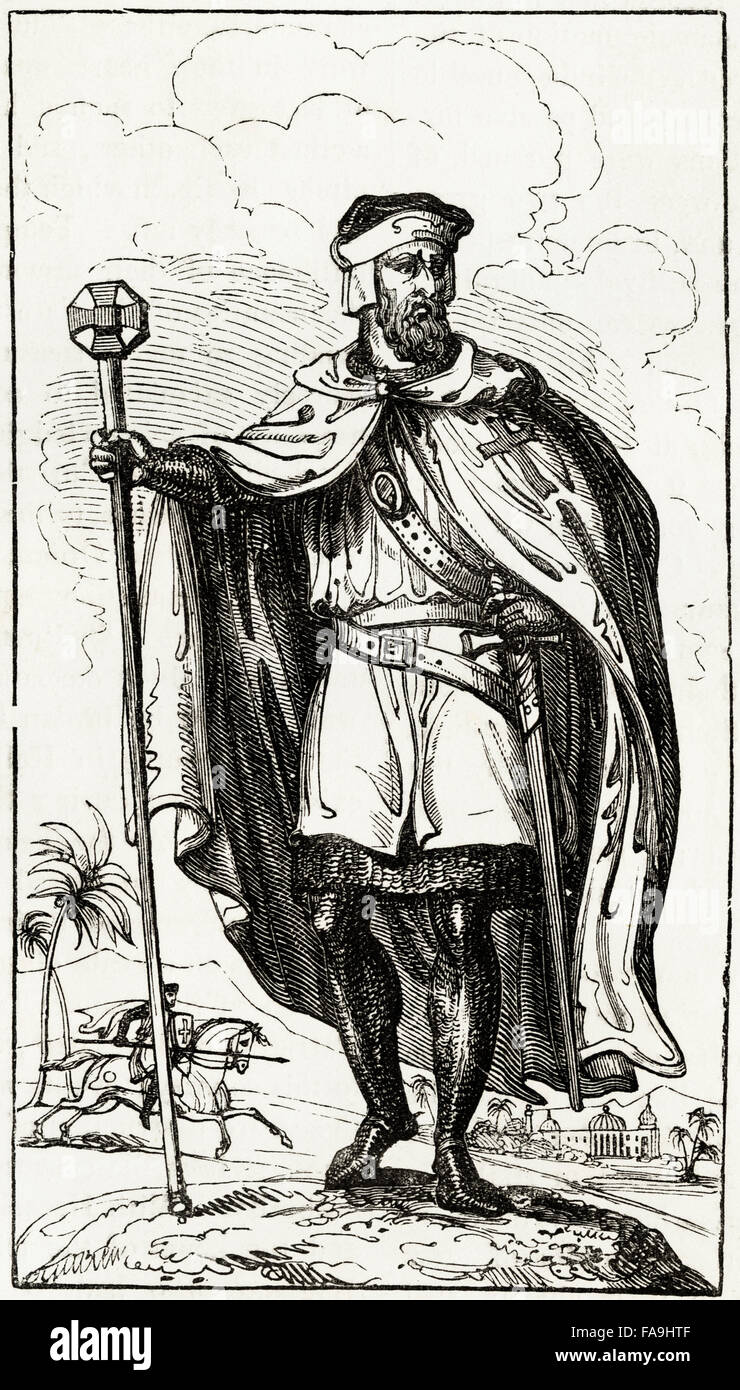 Illustration of a Knights Templar of the 12th Century. Victorian woodcut engraving circa 1845. Stock Photohttps://www.alamy.com/image-license-details/?v=1https://www.alamy.com/stock-photo-illustration-of-a-knights-templar-of-the-12th-century-victorian-woodcut-92409983.html
Illustration of a Knights Templar of the 12th Century. Victorian woodcut engraving circa 1845. Stock Photohttps://www.alamy.com/image-license-details/?v=1https://www.alamy.com/stock-photo-illustration-of-a-knights-templar-of-the-12th-century-victorian-woodcut-92409983.htmlRMFA9HTF–Illustration of a Knights Templar of the 12th Century. Victorian woodcut engraving circa 1845.
 Saladin captures the Holy Cross (From Chronica maiora I by Matthew Paris), 13th century. Artist: Paris, Matthew (c. 1200-1259) Stock Photohttps://www.alamy.com/image-license-details/?v=1https://www.alamy.com/stock-photo-saladin-captures-the-holy-cross-from-chronica-maiora-i-by-matthew-135253098.html
Saladin captures the Holy Cross (From Chronica maiora I by Matthew Paris), 13th century. Artist: Paris, Matthew (c. 1200-1259) Stock Photohttps://www.alamy.com/image-license-details/?v=1https://www.alamy.com/stock-photo-saladin-captures-the-holy-cross-from-chronica-maiora-i-by-matthew-135253098.htmlRMHT18KP–Saladin captures the Holy Cross (From Chronica maiora I by Matthew Paris), 13th century. Artist: Paris, Matthew (c. 1200-1259)
 Head of a knight figure. England, 13th century. Stone. Erworben 1994. The crusades emanated from the whole of western Europe. Most of the crusaders into the Holy Land, however, came from England and France. The German Historical Museum. Berlin. Germany. Stock Photohttps://www.alamy.com/image-license-details/?v=1https://www.alamy.com/head-of-a-knight-figure-england-13th-century-stone-erworben-1994-the-crusades-emanated-from-the-whole-of-western-europe-most-of-the-crusaders-into-the-holy-land-however-came-from-england-and-france-the-german-historical-museum-berlin-germany-image220026420.html
Head of a knight figure. England, 13th century. Stone. Erworben 1994. The crusades emanated from the whole of western Europe. Most of the crusaders into the Holy Land, however, came from England and France. The German Historical Museum. Berlin. Germany. Stock Photohttps://www.alamy.com/image-license-details/?v=1https://www.alamy.com/head-of-a-knight-figure-england-13th-century-stone-erworben-1994-the-crusades-emanated-from-the-whole-of-western-europe-most-of-the-crusaders-into-the-holy-land-however-came-from-england-and-france-the-german-historical-museum-berlin-germany-image220026420.htmlRMPNY1XC–Head of a knight figure. England, 13th century. Stone. Erworben 1994. The crusades emanated from the whole of western Europe. Most of the crusaders into the Holy Land, however, came from England and France. The German Historical Museum. Berlin. Germany.
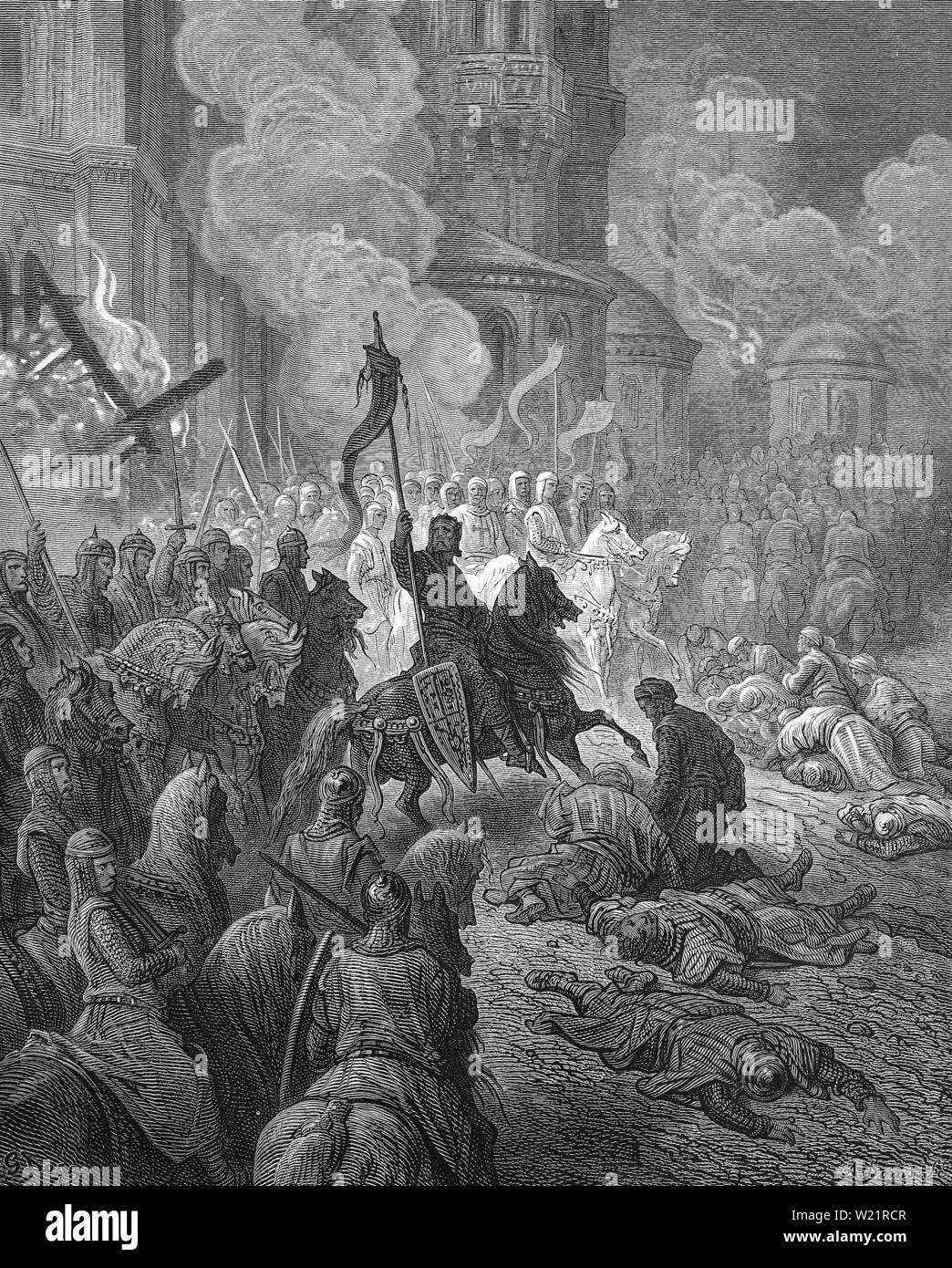 Entry of Crusaders at Constantinople, fourth crusade, 1885, historical woodprint, England Stock Photohttps://www.alamy.com/image-license-details/?v=1https://www.alamy.com/entry-of-crusaders-at-constantinople-fourth-crusade-1885-historical-woodprint-england-image259425175.html
Entry of Crusaders at Constantinople, fourth crusade, 1885, historical woodprint, England Stock Photohttps://www.alamy.com/image-license-details/?v=1https://www.alamy.com/entry-of-crusaders-at-constantinople-fourth-crusade-1885-historical-woodprint-england-image259425175.htmlRMW21RCR–Entry of Crusaders at Constantinople, fourth crusade, 1885, historical woodprint, England
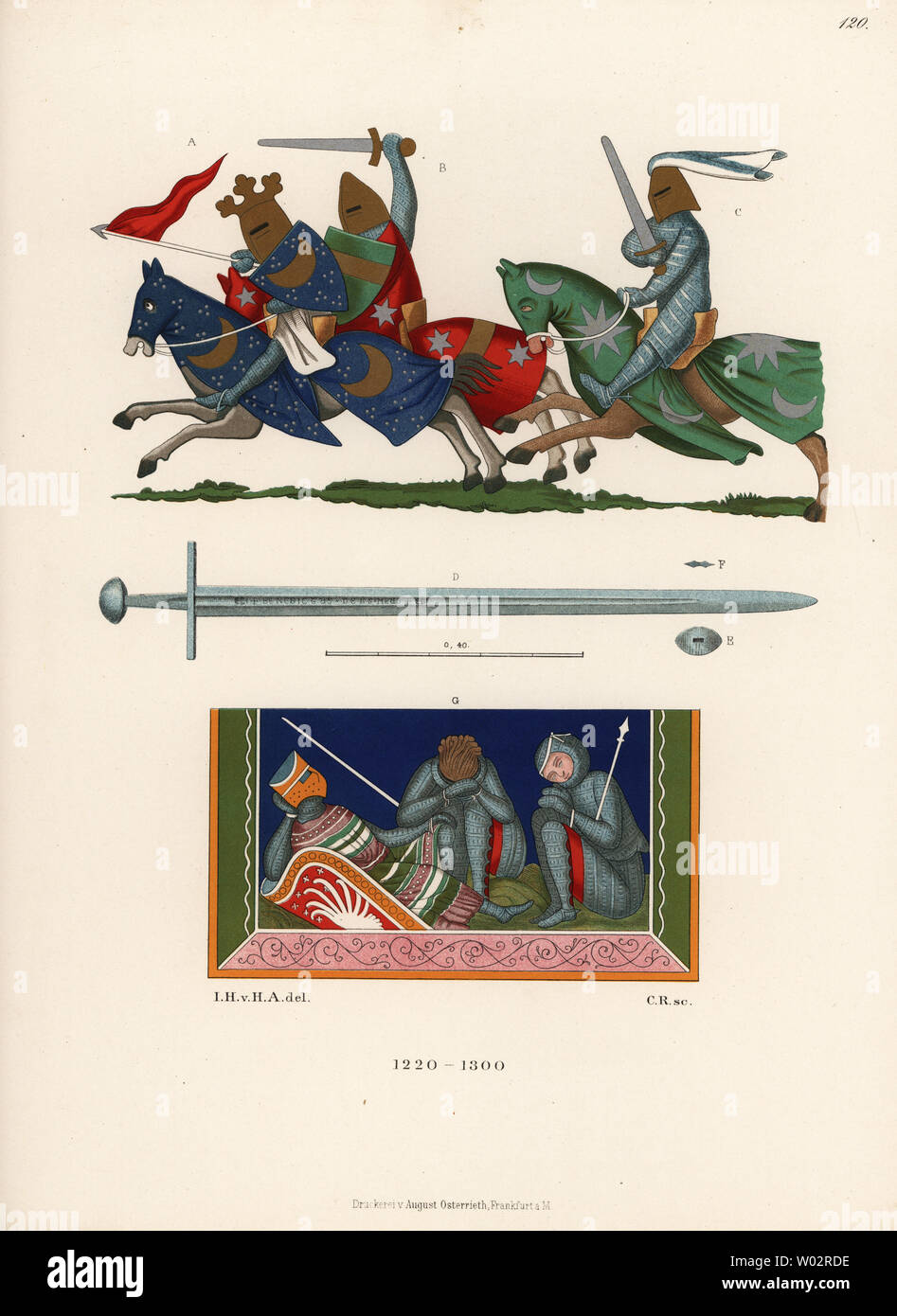 Costumes and sword of 13th century knights. King and knights charging on horseback, and three knights guarding the tomb of Jesus Christ. From miniature paintings in a Jewish prayerbook and a parchment prayerbook in Leipzig university library, 1220-1300. Chromolithograph from Hefner-Alteneck's Costumes, Artworks and Appliances from the Middle Ages to the 17th Century, Frankfurt, 1889. Illustration by Dr. Jakob Heinrich von Hefner-Alteneck, lithographed by C.R. Dr. Hefner-Alteneck (1811 - 1903) was a German museum curator, archaeologist, art historian, illustrator and etcher. Stock Photohttps://www.alamy.com/image-license-details/?v=1https://www.alamy.com/costumes-and-sword-of-13th-century-knights-king-and-knights-charging-on-horseback-and-three-knights-guarding-the-tomb-of-jesus-christ-from-miniature-paintings-in-a-jewish-prayerbook-and-a-parchment-prayerbook-in-leipzig-university-library-1220-1300-chromolithograph-from-hefner-altenecks-costumes-artworks-and-appliances-from-the-middle-ages-to-the-17th-century-frankfurt-1889-illustration-by-dr-jakob-heinrich-von-hefner-alteneck-lithographed-by-cr-dr-hefner-alteneck-1811-1903-was-a-german-museum-curator-archaeologist-art-historian-illustrator-and-etcher-image258217834.html
Costumes and sword of 13th century knights. King and knights charging on horseback, and three knights guarding the tomb of Jesus Christ. From miniature paintings in a Jewish prayerbook and a parchment prayerbook in Leipzig university library, 1220-1300. Chromolithograph from Hefner-Alteneck's Costumes, Artworks and Appliances from the Middle Ages to the 17th Century, Frankfurt, 1889. Illustration by Dr. Jakob Heinrich von Hefner-Alteneck, lithographed by C.R. Dr. Hefner-Alteneck (1811 - 1903) was a German museum curator, archaeologist, art historian, illustrator and etcher. Stock Photohttps://www.alamy.com/image-license-details/?v=1https://www.alamy.com/costumes-and-sword-of-13th-century-knights-king-and-knights-charging-on-horseback-and-three-knights-guarding-the-tomb-of-jesus-christ-from-miniature-paintings-in-a-jewish-prayerbook-and-a-parchment-prayerbook-in-leipzig-university-library-1220-1300-chromolithograph-from-hefner-altenecks-costumes-artworks-and-appliances-from-the-middle-ages-to-the-17th-century-frankfurt-1889-illustration-by-dr-jakob-heinrich-von-hefner-alteneck-lithographed-by-cr-dr-hefner-alteneck-1811-1903-was-a-german-museum-curator-archaeologist-art-historian-illustrator-and-etcher-image258217834.htmlRMW02RDE–Costumes and sword of 13th century knights. King and knights charging on horseback, and three knights guarding the tomb of Jesus Christ. From miniature paintings in a Jewish prayerbook and a parchment prayerbook in Leipzig university library, 1220-1300. Chromolithograph from Hefner-Alteneck's Costumes, Artworks and Appliances from the Middle Ages to the 17th Century, Frankfurt, 1889. Illustration by Dr. Jakob Heinrich von Hefner-Alteneck, lithographed by C.R. Dr. Hefner-Alteneck (1811 - 1903) was a German museum curator, archaeologist, art historian, illustrator and etcher.
 Diptych of the Virgin and Child Enthroned and the Crucifixion. 1275–1280. Italy. Tempera on panel This diptych, a hinged and portable work used for private devotion, was probably made in the Latin Kingdom established in the Holy Land by the Crusaders. In style, technique, and the use of both Latin and Greek inscriptions, it shows a mixture of Eastern and Western elements. The diptych may have been made by an Italian craftsman, possibly working in the coastal city of Acre, which was the capital of a reduced crusader kingdom in the late 13th century. This type of private devotional work, and rel Stock Photohttps://www.alamy.com/image-license-details/?v=1https://www.alamy.com/diptych-of-the-virgin-and-child-enthroned-and-the-crucifixion-12751280-italy-tempera-on-panel-this-diptych-a-hinged-and-portable-work-used-for-private-devotion-was-probably-made-in-the-latin-kingdom-established-in-the-holy-land-by-the-crusaders-in-style-technique-and-the-use-of-both-latin-and-greek-inscriptions-it-shows-a-mixture-of-eastern-and-western-elements-the-diptych-may-have-been-made-by-an-italian-craftsman-possibly-working-in-the-coastal-city-of-acre-which-was-the-capital-of-a-reduced-crusader-kingdom-in-the-late-13th-century-this-type-of-private-devotional-work-and-rel-image337948193.html
Diptych of the Virgin and Child Enthroned and the Crucifixion. 1275–1280. Italy. Tempera on panel This diptych, a hinged and portable work used for private devotion, was probably made in the Latin Kingdom established in the Holy Land by the Crusaders. In style, technique, and the use of both Latin and Greek inscriptions, it shows a mixture of Eastern and Western elements. The diptych may have been made by an Italian craftsman, possibly working in the coastal city of Acre, which was the capital of a reduced crusader kingdom in the late 13th century. This type of private devotional work, and rel Stock Photohttps://www.alamy.com/image-license-details/?v=1https://www.alamy.com/diptych-of-the-virgin-and-child-enthroned-and-the-crucifixion-12751280-italy-tempera-on-panel-this-diptych-a-hinged-and-portable-work-used-for-private-devotion-was-probably-made-in-the-latin-kingdom-established-in-the-holy-land-by-the-crusaders-in-style-technique-and-the-use-of-both-latin-and-greek-inscriptions-it-shows-a-mixture-of-eastern-and-western-elements-the-diptych-may-have-been-made-by-an-italian-craftsman-possibly-working-in-the-coastal-city-of-acre-which-was-the-capital-of-a-reduced-crusader-kingdom-in-the-late-13th-century-this-type-of-private-devotional-work-and-rel-image337948193.htmlRM2AHPTA9–Diptych of the Virgin and Child Enthroned and the Crucifixion. 1275–1280. Italy. Tempera on panel This diptych, a hinged and portable work used for private devotion, was probably made in the Latin Kingdom established in the Holy Land by the Crusaders. In style, technique, and the use of both Latin and Greek inscriptions, it shows a mixture of Eastern and Western elements. The diptych may have been made by an Italian craftsman, possibly working in the coastal city of Acre, which was the capital of a reduced crusader kingdom in the late 13th century. This type of private devotional work, and rel
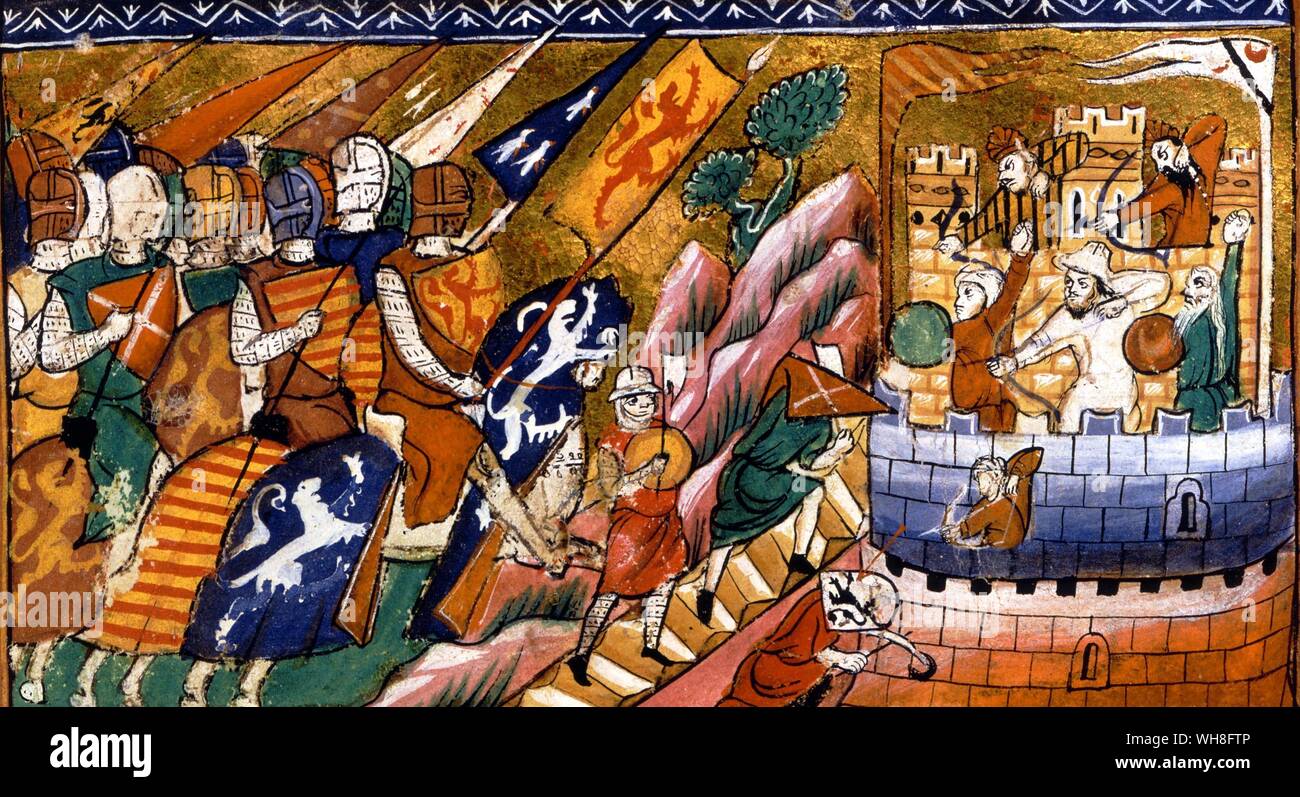 Siege and Capture of Antioch 1268. The Crusades were one of the most dramatic and significant events in medieval history, not least because they expanded the horizons of western (Latin) Christendom, by bringing it into regular contact for the first time with both the Islamic world and a number of eastern Christian denominations. In 1277, Baibars had forced the Crusaders to a few strongholds along the coast and the Crusaders were forced out of the Middle East by the beginning of the fourteenth century. The fall of Antioch was to prove as detrimental to the crusader's cause as its capture was Stock Photohttps://www.alamy.com/image-license-details/?v=1https://www.alamy.com/siege-and-capture-of-antioch-1268-the-crusades-were-one-of-the-most-dramatic-and-significant-events-in-medieval-history-not-least-because-they-expanded-the-horizons-of-western-latin-christendom-by-bringing-it-into-regular-contact-for-the-first-time-with-both-the-islamic-world-and-a-number-of-eastern-christian-denominations-in-1277-baibars-had-forced-the-crusaders-to-a-few-strongholds-along-the-coast-and-the-crusaders-were-forced-out-of-the-middle-east-by-the-beginning-of-the-fourteenth-century-the-fall-of-antioch-was-to-prove-as-detrimental-to-the-crusaders-cause-as-its-capture-was-image268792742.html
Siege and Capture of Antioch 1268. The Crusades were one of the most dramatic and significant events in medieval history, not least because they expanded the horizons of western (Latin) Christendom, by bringing it into regular contact for the first time with both the Islamic world and a number of eastern Christian denominations. In 1277, Baibars had forced the Crusaders to a few strongholds along the coast and the Crusaders were forced out of the Middle East by the beginning of the fourteenth century. The fall of Antioch was to prove as detrimental to the crusader's cause as its capture was Stock Photohttps://www.alamy.com/image-license-details/?v=1https://www.alamy.com/siege-and-capture-of-antioch-1268-the-crusades-were-one-of-the-most-dramatic-and-significant-events-in-medieval-history-not-least-because-they-expanded-the-horizons-of-western-latin-christendom-by-bringing-it-into-regular-contact-for-the-first-time-with-both-the-islamic-world-and-a-number-of-eastern-christian-denominations-in-1277-baibars-had-forced-the-crusaders-to-a-few-strongholds-along-the-coast-and-the-crusaders-were-forced-out-of-the-middle-east-by-the-beginning-of-the-fourteenth-century-the-fall-of-antioch-was-to-prove-as-detrimental-to-the-crusaders-cause-as-its-capture-was-image268792742.htmlRMWH8FTP–Siege and Capture of Antioch 1268. The Crusades were one of the most dramatic and significant events in medieval history, not least because they expanded the horizons of western (Latin) Christendom, by bringing it into regular contact for the first time with both the Islamic world and a number of eastern Christian denominations. In 1277, Baibars had forced the Crusaders to a few strongholds along the coast and the Crusaders were forced out of the Middle East by the beginning of the fourteenth century. The fall of Antioch was to prove as detrimental to the crusader's cause as its capture was
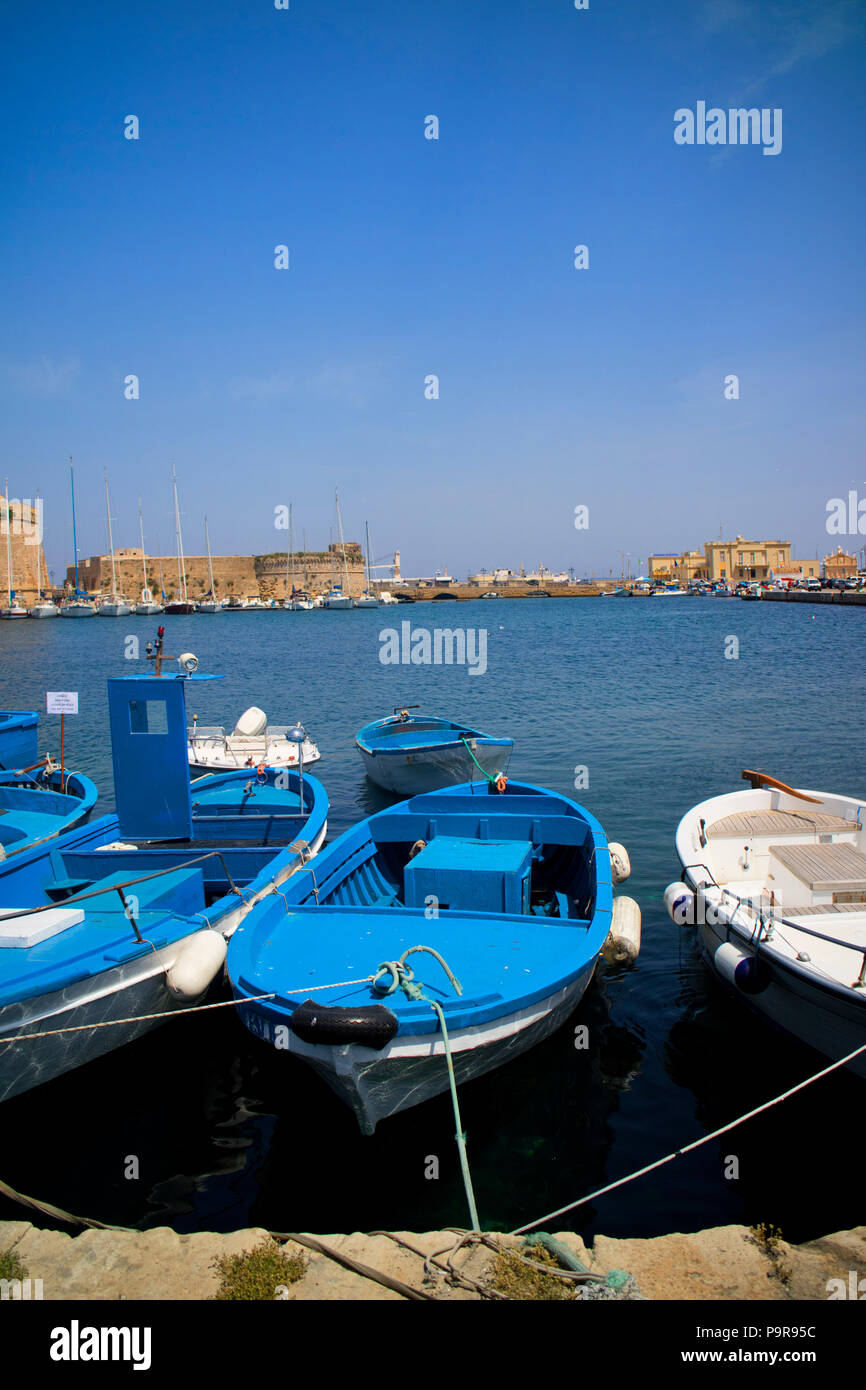 Gallipoli Italy Stock Photohttps://www.alamy.com/image-license-details/?v=1https://www.alamy.com/gallipoli-italy-image212568424.html
Gallipoli Italy Stock Photohttps://www.alamy.com/image-license-details/?v=1https://www.alamy.com/gallipoli-italy-image212568424.htmlRFP9R95C–Gallipoli Italy
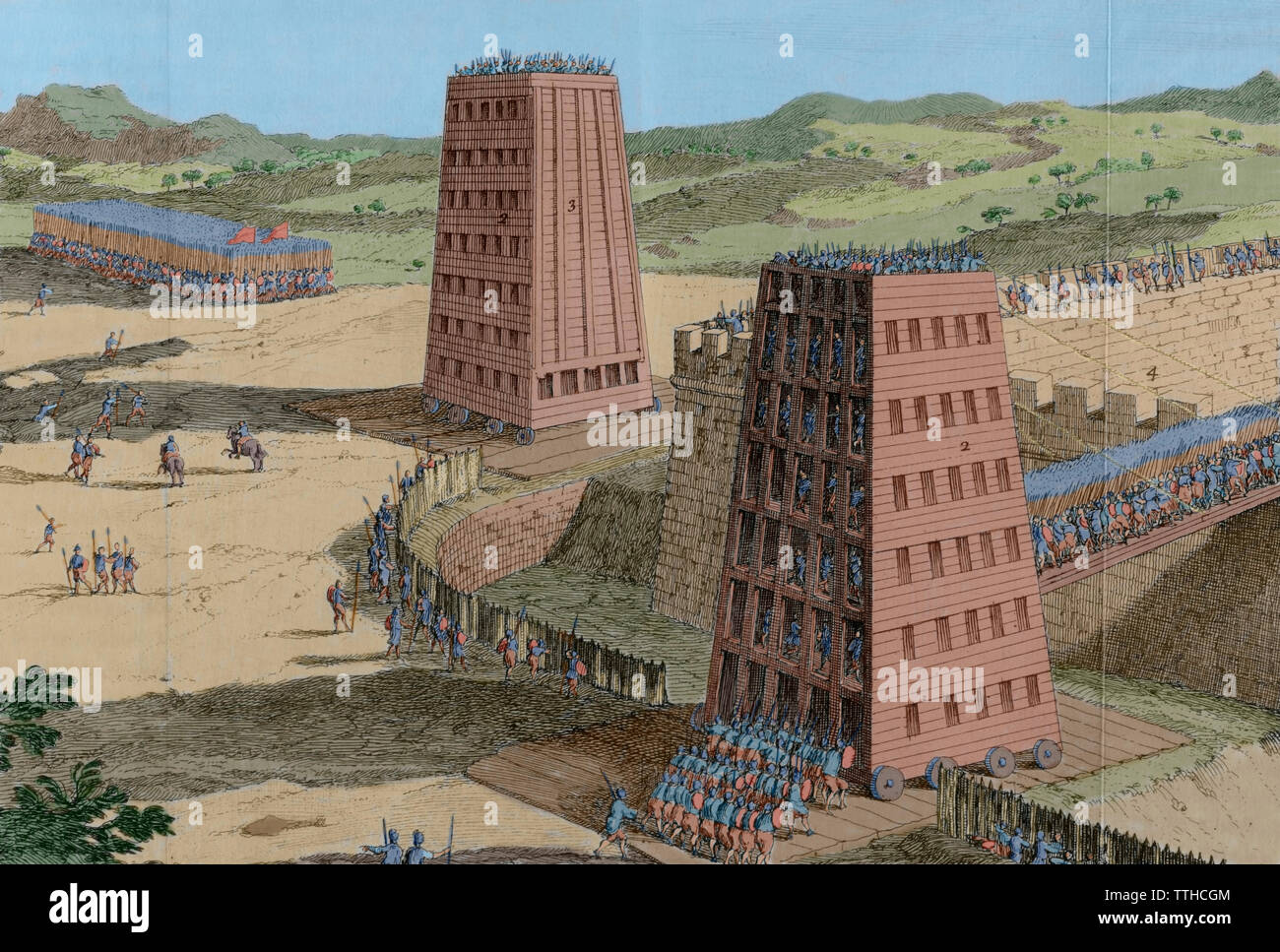 History by Polybius. Volume II. French edition translated from Greek by Dom Vincent Thuillier. Comments of Military Science enriched with critical and historical notes by M. De Folard. Paris, chez Pierre Gandouin, Julien-Michel Gandouin, Pierre-Francois Giffart and Nicolas-Pierre Armand, 1727. Printing by Jean-Baptiste Lamesle. Siege Towers with wheels used by the Holy Roman Emperor Frederick II (1194-1250) during the siege of Jerusalem. The Sixth Crusade. Engraving. Later colouration. Stock Photohttps://www.alamy.com/image-license-details/?v=1https://www.alamy.com/history-by-polybius-volume-ii-french-edition-translated-from-greek-by-dom-vincent-thuillier-comments-of-military-science-enriched-with-critical-and-historical-notes-by-m-de-folard-paris-chez-pierre-gandouin-julien-michel-gandouin-pierre-francois-giffart-and-nicolas-pierre-armand-1727-printing-by-jean-baptiste-lamesle-siege-towers-with-wheels-used-by-the-holy-roman-emperor-frederick-ii-1194-1250-during-the-siege-of-jerusalem-the-sixth-crusade-engraving-later-colouration-image256079956.html
History by Polybius. Volume II. French edition translated from Greek by Dom Vincent Thuillier. Comments of Military Science enriched with critical and historical notes by M. De Folard. Paris, chez Pierre Gandouin, Julien-Michel Gandouin, Pierre-Francois Giffart and Nicolas-Pierre Armand, 1727. Printing by Jean-Baptiste Lamesle. Siege Towers with wheels used by the Holy Roman Emperor Frederick II (1194-1250) during the siege of Jerusalem. The Sixth Crusade. Engraving. Later colouration. Stock Photohttps://www.alamy.com/image-license-details/?v=1https://www.alamy.com/history-by-polybius-volume-ii-french-edition-translated-from-greek-by-dom-vincent-thuillier-comments-of-military-science-enriched-with-critical-and-historical-notes-by-m-de-folard-paris-chez-pierre-gandouin-julien-michel-gandouin-pierre-francois-giffart-and-nicolas-pierre-armand-1727-printing-by-jean-baptiste-lamesle-siege-towers-with-wheels-used-by-the-holy-roman-emperor-frederick-ii-1194-1250-during-the-siege-of-jerusalem-the-sixth-crusade-engraving-later-colouration-image256079956.htmlRMTTHCGM–History by Polybius. Volume II. French edition translated from Greek by Dom Vincent Thuillier. Comments of Military Science enriched with critical and historical notes by M. De Folard. Paris, chez Pierre Gandouin, Julien-Michel Gandouin, Pierre-Francois Giffart and Nicolas-Pierre Armand, 1727. Printing by Jean-Baptiste Lamesle. Siege Towers with wheels used by the Holy Roman Emperor Frederick II (1194-1250) during the siege of Jerusalem. The Sixth Crusade. Engraving. Later colouration.
 The tomb of the Crusader knight Richard de Crupes in the church in the Cotswold village of Whittington, Gloucestershire UK Stock Photohttps://www.alamy.com/image-license-details/?v=1https://www.alamy.com/the-tomb-of-the-crusader-knight-richard-de-crupes-in-the-church-in-the-cotswold-village-of-whittington-gloucestershire-uk-image416476428.html
The tomb of the Crusader knight Richard de Crupes in the church in the Cotswold village of Whittington, Gloucestershire UK Stock Photohttps://www.alamy.com/image-license-details/?v=1https://www.alamy.com/the-tomb-of-the-crusader-knight-richard-de-crupes-in-the-church-in-the-cotswold-village-of-whittington-gloucestershire-uk-image416476428.htmlRM2F5G3X4–The tomb of the Crusader knight Richard de Crupes in the church in the Cotswold village of Whittington, Gloucestershire UK
 Syria. Talkalakh District, Krak des Chevaliers. Crusader castle, under control of Knights Hospitaller (1142-1271) during the Crusades to the Holy Land, fell into Arab control in the 13th century. Entrance ramp. Photo taken before the Syrian Civil War. Stock Photohttps://www.alamy.com/image-license-details/?v=1https://www.alamy.com/syria-talkalakh-district-krak-des-chevaliers-crusader-castle-under-control-of-knights-hospitaller-1142-1271-during-the-crusades-to-the-holy-land-fell-into-arab-control-in-the-13th-century-entrance-ramp-photo-taken-before-the-syrian-civil-war-image210678562.html
Syria. Talkalakh District, Krak des Chevaliers. Crusader castle, under control of Knights Hospitaller (1142-1271) during the Crusades to the Holy Land, fell into Arab control in the 13th century. Entrance ramp. Photo taken before the Syrian Civil War. Stock Photohttps://www.alamy.com/image-license-details/?v=1https://www.alamy.com/syria-talkalakh-district-krak-des-chevaliers-crusader-castle-under-control-of-knights-hospitaller-1142-1271-during-the-crusades-to-the-holy-land-fell-into-arab-control-in-the-13th-century-entrance-ramp-photo-taken-before-the-syrian-civil-war-image210678562.htmlRMP6N6JA–Syria. Talkalakh District, Krak des Chevaliers. Crusader castle, under control of Knights Hospitaller (1142-1271) during the Crusades to the Holy Land, fell into Arab control in the 13th century. Entrance ramp. Photo taken before the Syrian Civil War.
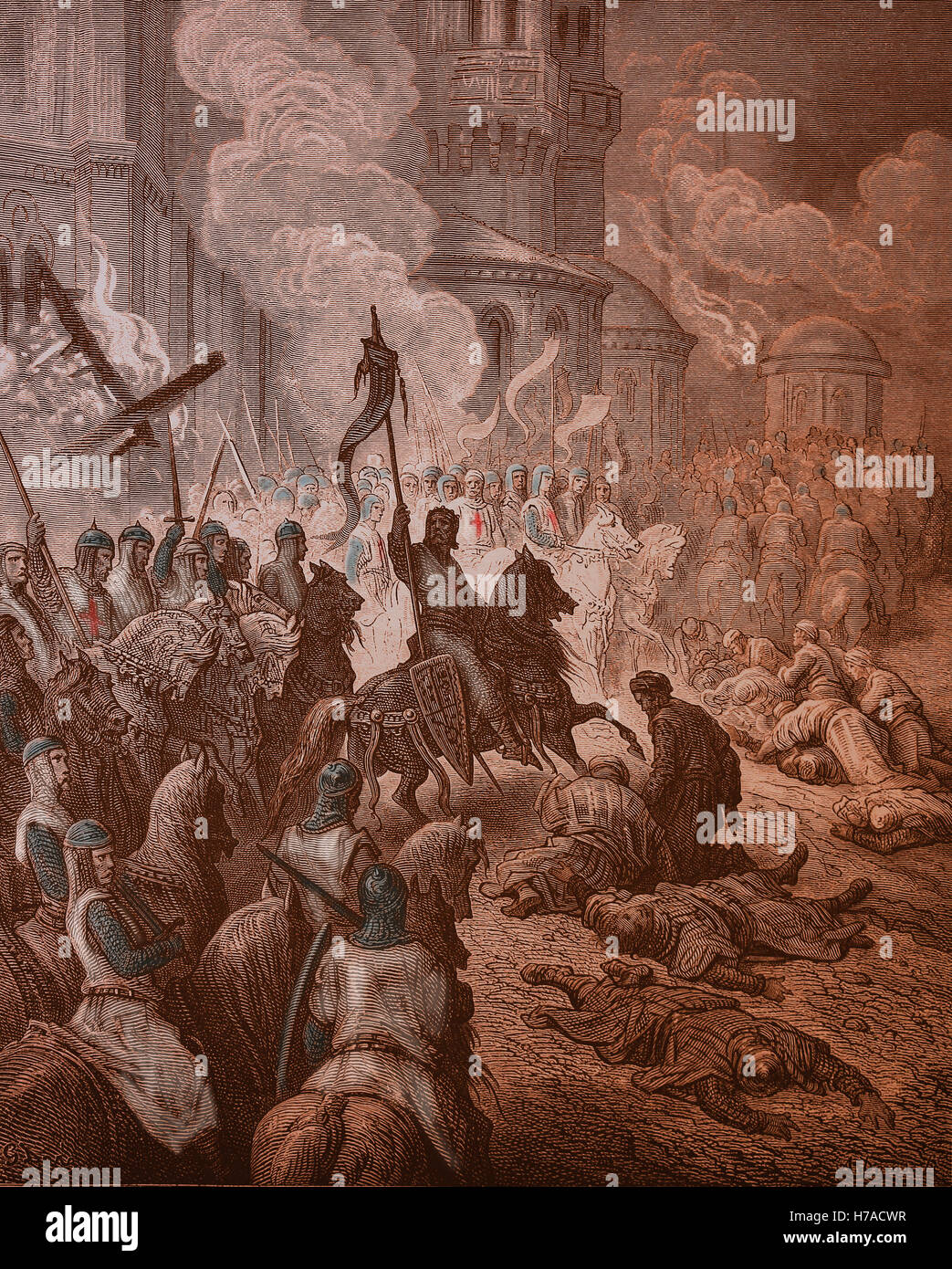 Fourth Crusade. Entry of the Crusaders into Constantinople, 1204. Engraving by Gustave Dore, 19th c. Color. Stock Photohttps://www.alamy.com/image-license-details/?v=1https://www.alamy.com/stock-photo-fourth-crusade-entry-of-the-crusaders-into-constantinople-1204-engraving-125004819.html
Fourth Crusade. Entry of the Crusaders into Constantinople, 1204. Engraving by Gustave Dore, 19th c. Color. Stock Photohttps://www.alamy.com/image-license-details/?v=1https://www.alamy.com/stock-photo-fourth-crusade-entry-of-the-crusaders-into-constantinople-1204-engraving-125004819.htmlRMH7ACWR–Fourth Crusade. Entry of the Crusaders into Constantinople, 1204. Engraving by Gustave Dore, 19th c. Color.
 The fleet of the crusaders in front of Constantinople during the Fourth Crusade in 1203, Riva river, Turkey Stock Photohttps://www.alamy.com/image-license-details/?v=1https://www.alamy.com/the-fleet-of-the-crusaders-in-front-of-constantinople-during-the-fourth-image156676363.html
The fleet of the crusaders in front of Constantinople during the Fourth Crusade in 1203, Riva river, Turkey Stock Photohttps://www.alamy.com/image-license-details/?v=1https://www.alamy.com/the-fleet-of-the-crusaders-in-front-of-constantinople-during-the-fourth-image156676363.htmlRMK2W68B–The fleet of the crusaders in front of Constantinople during the Fourth Crusade in 1203, Riva river, Turkey
 Entry of the Crusaders in Constantinople (12 April 1204). Eugene Delacroix (1798-1863).1840. Byzantine begging for mercy. Stock Photohttps://www.alamy.com/image-license-details/?v=1https://www.alamy.com/stock-photo-entry-of-the-crusaders-in-constantinople-12-april-1204-eugene-delacroix-94470319.html
Entry of the Crusaders in Constantinople (12 April 1204). Eugene Delacroix (1798-1863).1840. Byzantine begging for mercy. Stock Photohttps://www.alamy.com/image-license-details/?v=1https://www.alamy.com/stock-photo-entry-of-the-crusaders-in-constantinople-12-april-1204-eugene-delacroix-94470319.htmlRMFDKDRY–Entry of the Crusaders in Constantinople (12 April 1204). Eugene Delacroix (1798-1863).1840. Byzantine begging for mercy.
 History by Polybius. Stock Photohttps://www.alamy.com/image-license-details/?v=1https://www.alamy.com/history-by-polybius-image353144894.html
History by Polybius. Stock Photohttps://www.alamy.com/image-license-details/?v=1https://www.alamy.com/history-by-polybius-image353144894.htmlRM2BEF3WJ–History by Polybius.
 Musée d'Histoire de Marseille : Crusader's sail ship Stock Photohttps://www.alamy.com/image-license-details/?v=1https://www.alamy.com/muse-dhistoire-de-marseille-crusaders-sail-ship-image502132551.html
Musée d'Histoire de Marseille : Crusader's sail ship Stock Photohttps://www.alamy.com/image-license-details/?v=1https://www.alamy.com/muse-dhistoire-de-marseille-crusaders-sail-ship-image502132551.htmlRF2M4X35B–Musée d'Histoire de Marseille : Crusader's sail ship
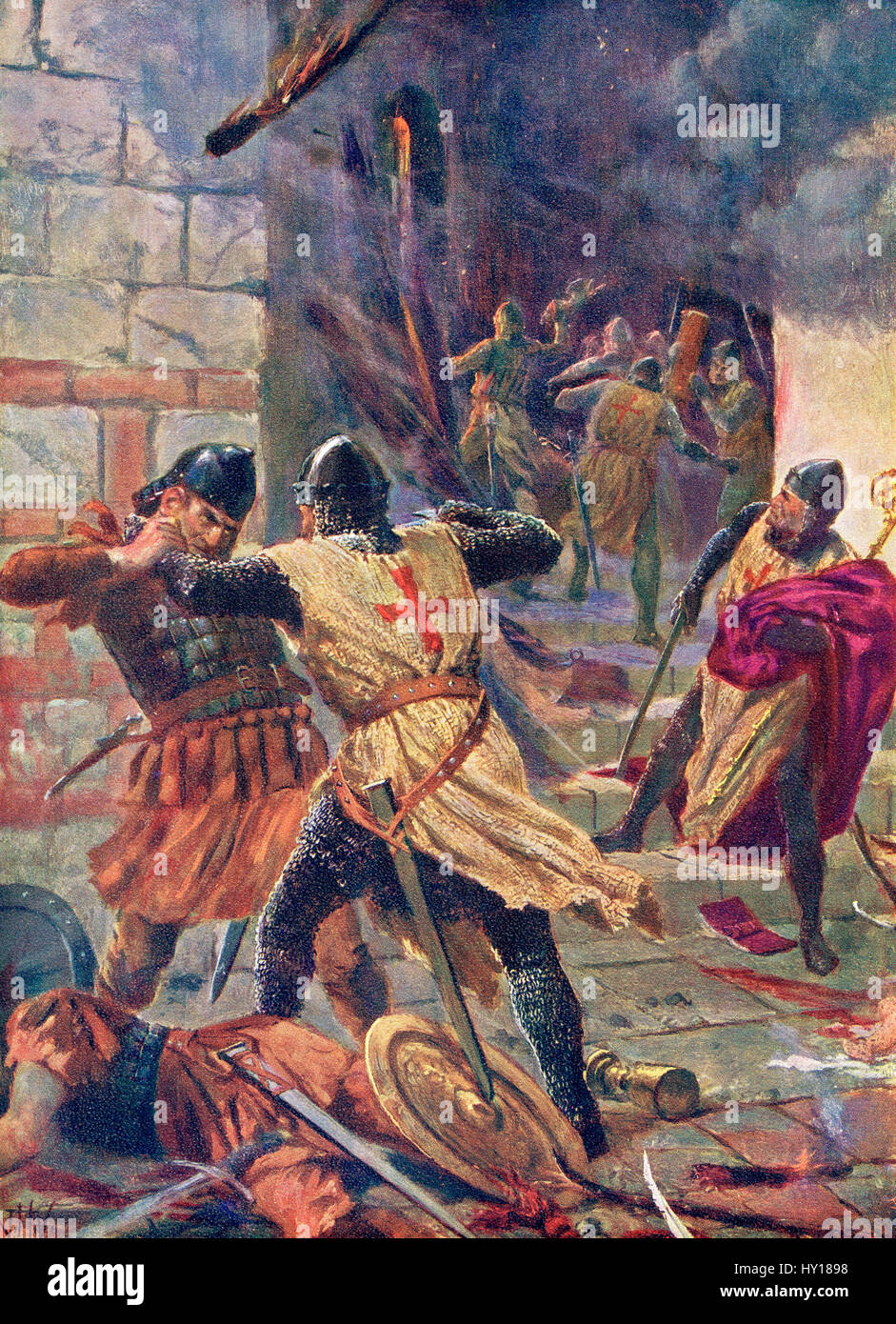 The Sack of Constantinople or Siege of Constantinople in 1204 during the fourth crusade. After the painting by J.H. Valda, (d.1941). From Hutchinson's History of the Nations, published 1915. Stock Photohttps://www.alamy.com/image-license-details/?v=1https://www.alamy.com/stock-photo-the-sack-of-constantinople-or-siege-of-constantinople-in-1204-during-137096772.html
The Sack of Constantinople or Siege of Constantinople in 1204 during the fourth crusade. After the painting by J.H. Valda, (d.1941). From Hutchinson's History of the Nations, published 1915. Stock Photohttps://www.alamy.com/image-license-details/?v=1https://www.alamy.com/stock-photo-the-sack-of-constantinople-or-siege-of-constantinople-in-1204-during-137096772.htmlRMHY1898–The Sack of Constantinople or Siege of Constantinople in 1204 during the fourth crusade. After the painting by J.H. Valda, (d.1941). From Hutchinson's History of the Nations, published 1915.
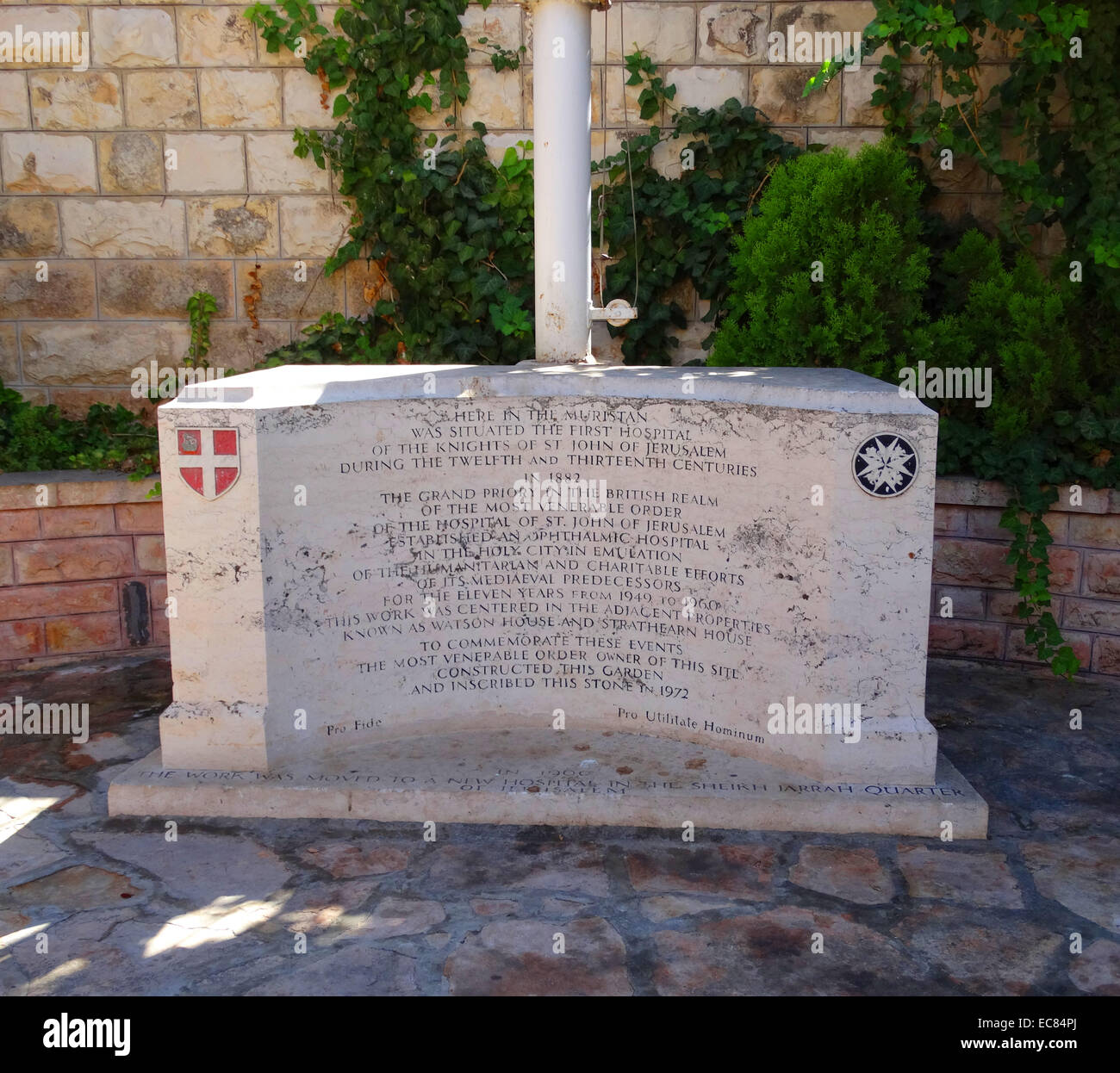 Memorial commemorating the first hospital of the knights of St. John of Jerusalem; in the old city of Jerusalem; Israel. 13th century. Stock Photohttps://www.alamy.com/image-license-details/?v=1https://www.alamy.com/stock-photo-memorial-commemorating-the-first-hospital-of-the-knights-of-st-john-76396730.html
Memorial commemorating the first hospital of the knights of St. John of Jerusalem; in the old city of Jerusalem; Israel. 13th century. Stock Photohttps://www.alamy.com/image-license-details/?v=1https://www.alamy.com/stock-photo-memorial-commemorating-the-first-hospital-of-the-knights-of-st-john-76396730.htmlRMEC84PJ–Memorial commemorating the first hospital of the knights of St. John of Jerusalem; in the old city of Jerusalem; Israel. 13th century.
 Aracena (Huelva). 06/10/2005. Aracena Castle, erected in the 13th century. Credit: Album / Archivo ABC / José Manuel Brazo Mena Stock Photohttps://www.alamy.com/image-license-details/?v=1https://www.alamy.com/aracena-huelva-06102005-aracena-castle-erected-in-the-13th-century-credit-album-archivo-abc-jos-manuel-brazo-mena-image576567380.html
Aracena (Huelva). 06/10/2005. Aracena Castle, erected in the 13th century. Credit: Album / Archivo ABC / José Manuel Brazo Mena Stock Photohttps://www.alamy.com/image-license-details/?v=1https://www.alamy.com/aracena-huelva-06102005-aracena-castle-erected-in-the-13th-century-credit-album-archivo-abc-jos-manuel-brazo-mena-image576567380.htmlRM2TE0WG4–Aracena (Huelva). 06/10/2005. Aracena Castle, erected in the 13th century. Credit: Album / Archivo ABC / José Manuel Brazo Mena
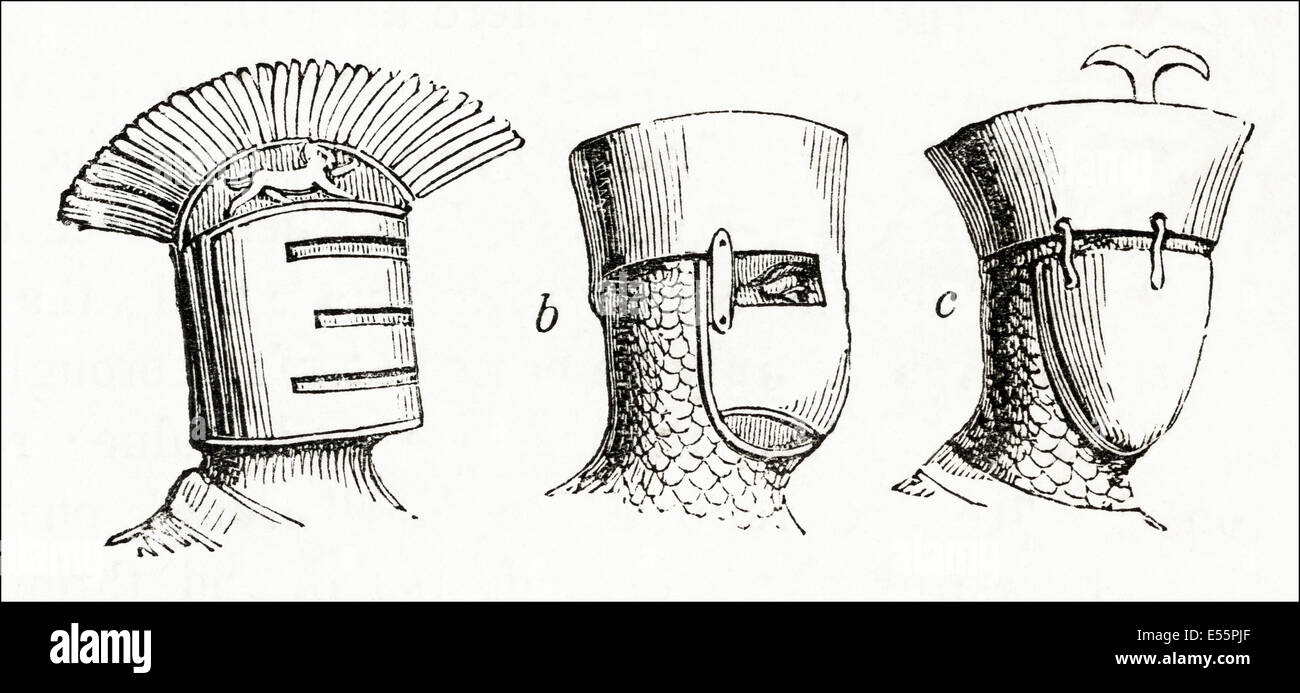 Crusaders helmets of the 12th & 13th century (l-r) King Richard I, Baldwin Count of Flanders 1192 & 1203. Victorian woodcut engraving circa 1845. Stock Photohttps://www.alamy.com/image-license-details/?v=1https://www.alamy.com/stock-photo-crusaders-helmets-of-the-12th-13th-century-l-r-king-richard-i-baldwin-72042279.html
Crusaders helmets of the 12th & 13th century (l-r) King Richard I, Baldwin Count of Flanders 1192 & 1203. Victorian woodcut engraving circa 1845. Stock Photohttps://www.alamy.com/image-license-details/?v=1https://www.alamy.com/stock-photo-crusaders-helmets-of-the-12th-13th-century-l-r-king-richard-i-baldwin-72042279.htmlRME55PJF–Crusaders helmets of the 12th & 13th century (l-r) King Richard I, Baldwin Count of Flanders 1192 & 1203. Victorian woodcut engraving circa 1845.
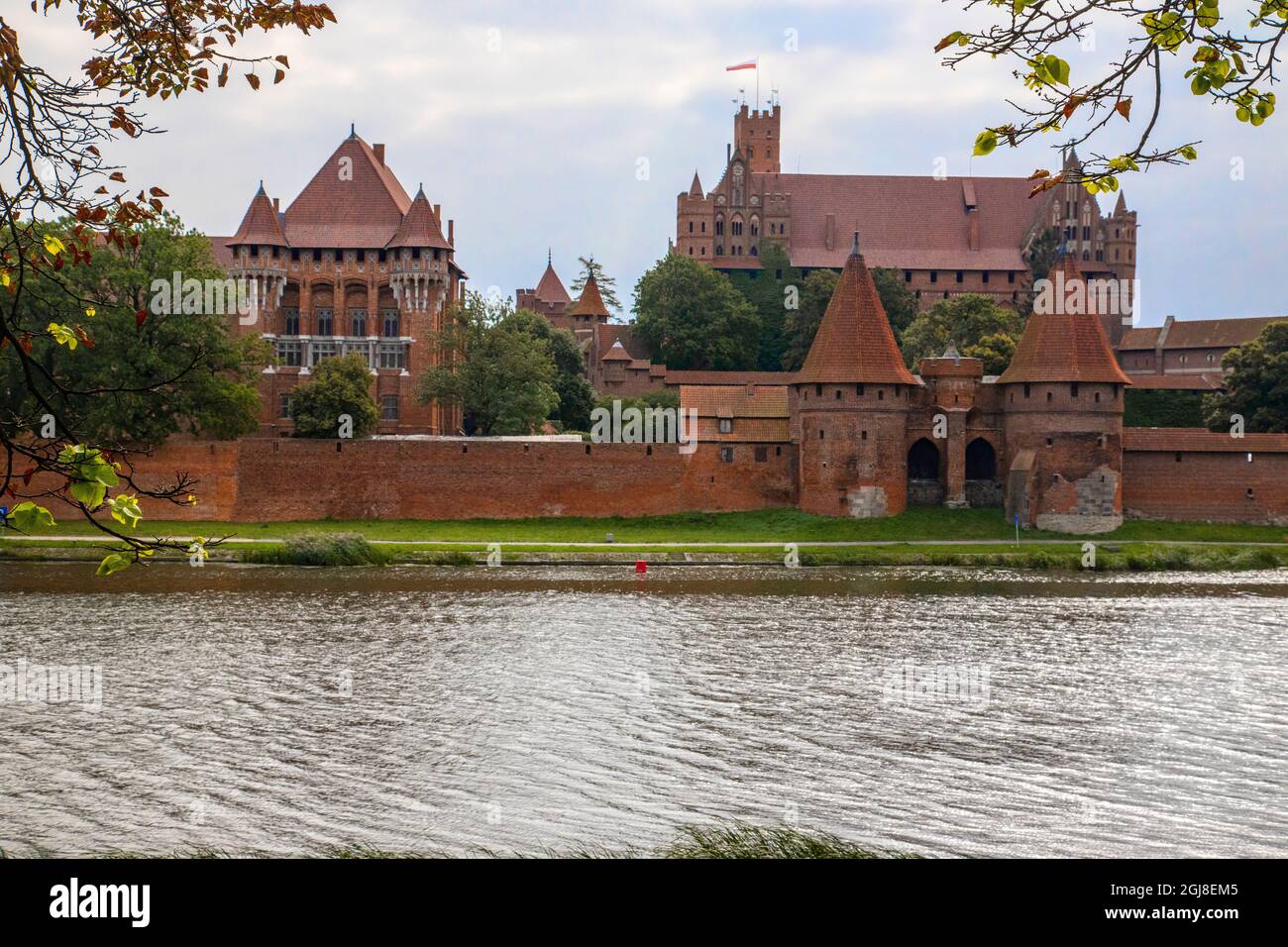 Originally built in the 13th century, Malbork was the castle of the Teutonic Knights, a German Catholic religious order of crusaders. Stock Photohttps://www.alamy.com/image-license-details/?v=1https://www.alamy.com/originally-built-in-the-13th-century-malbork-was-the-castle-of-the-teutonic-knights-a-german-catholic-religious-order-of-crusaders-image441510165.html
Originally built in the 13th century, Malbork was the castle of the Teutonic Knights, a German Catholic religious order of crusaders. Stock Photohttps://www.alamy.com/image-license-details/?v=1https://www.alamy.com/originally-built-in-the-13th-century-malbork-was-the-castle-of-the-teutonic-knights-a-german-catholic-religious-order-of-crusaders-image441510165.htmlRM2GJ8EM5–Originally built in the 13th century, Malbork was the castle of the Teutonic Knights, a German Catholic religious order of crusaders.
 Military equipment, 13th century. Various types of helmets, great helms, bascinets, morions, crested, conical and cylindrical helmets used by soldiers, courtly knights and crusaders. Taken from manuscripts in libraries in Burgundy, Brussels, Paris and London. Equipement militaire, XIIIe siecle. Chromolithograph by Ferdinand Sere from Charles Louandres Les Arts Somptuaires, The Sumptuary Arts, Hangard-Mauge, Paris, 1858. Stock Photohttps://www.alamy.com/image-license-details/?v=1https://www.alamy.com/military-equipment-13th-century-various-types-of-helmets-great-helms-bascinets-morions-crested-conical-and-cylindrical-helmets-used-by-soldiers-courtly-knights-and-crusaders-taken-from-manuscripts-in-libraries-in-burgundy-brussels-paris-and-london-equipement-militaire-xiiie-siecle-chromolithograph-by-ferdinand-sere-from-charles-louandres-les-arts-somptuaires-the-sumptuary-arts-hangard-mauge-paris-1858-image571834578.html
Military equipment, 13th century. Various types of helmets, great helms, bascinets, morions, crested, conical and cylindrical helmets used by soldiers, courtly knights and crusaders. Taken from manuscripts in libraries in Burgundy, Brussels, Paris and London. Equipement militaire, XIIIe siecle. Chromolithograph by Ferdinand Sere from Charles Louandres Les Arts Somptuaires, The Sumptuary Arts, Hangard-Mauge, Paris, 1858. Stock Photohttps://www.alamy.com/image-license-details/?v=1https://www.alamy.com/military-equipment-13th-century-various-types-of-helmets-great-helms-bascinets-morions-crested-conical-and-cylindrical-helmets-used-by-soldiers-courtly-knights-and-crusaders-taken-from-manuscripts-in-libraries-in-burgundy-brussels-paris-and-london-equipement-militaire-xiiie-siecle-chromolithograph-by-ferdinand-sere-from-charles-louandres-les-arts-somptuaires-the-sumptuary-arts-hangard-mauge-paris-1858-image571834578.htmlRM2T698RE–Military equipment, 13th century. Various types of helmets, great helms, bascinets, morions, crested, conical and cylindrical helmets used by soldiers, courtly knights and crusaders. Taken from manuscripts in libraries in Burgundy, Brussels, Paris and London. Equipement militaire, XIIIe siecle. Chromolithograph by Ferdinand Sere from Charles Louandres Les Arts Somptuaires, The Sumptuary Arts, Hangard-Mauge, Paris, 1858.